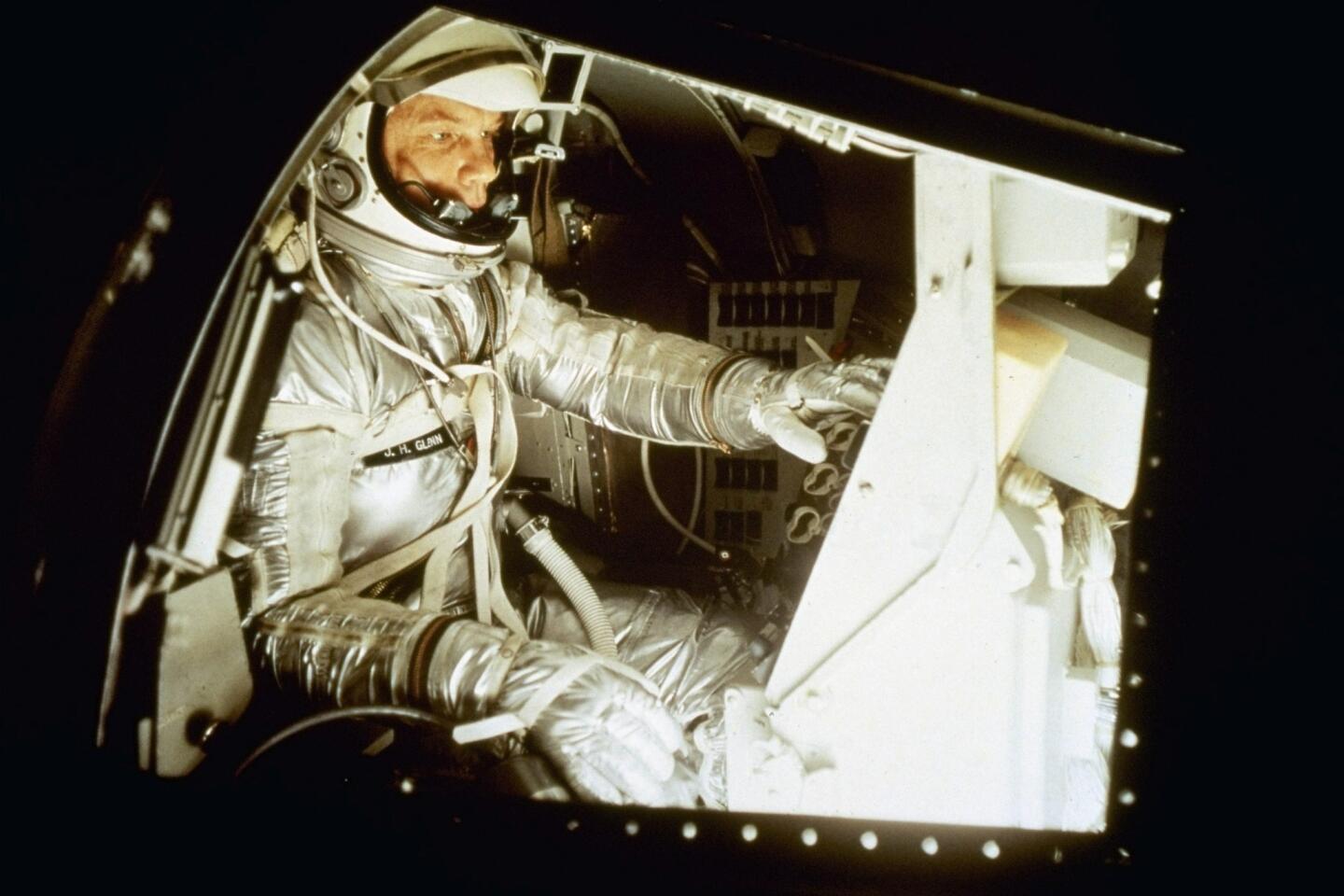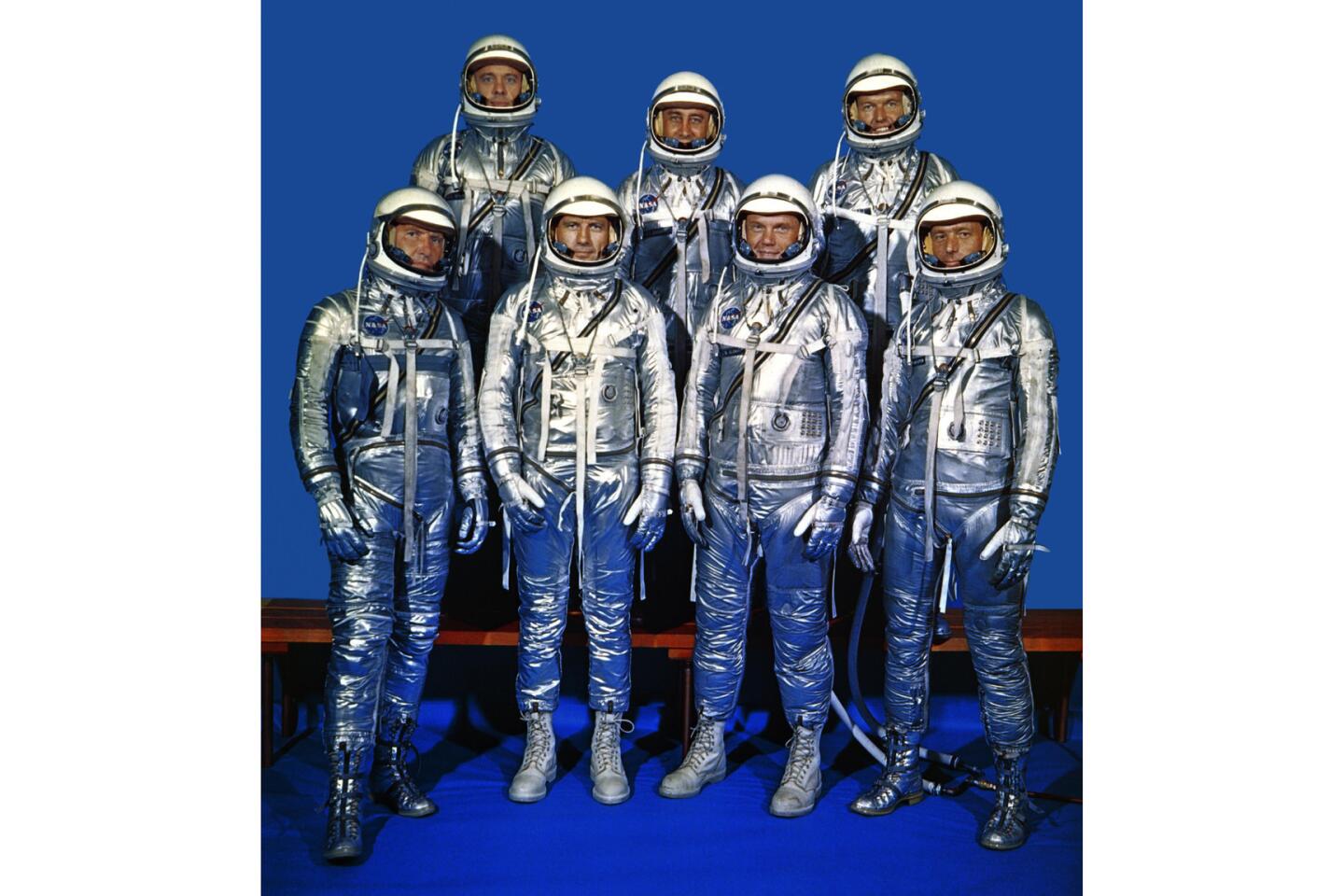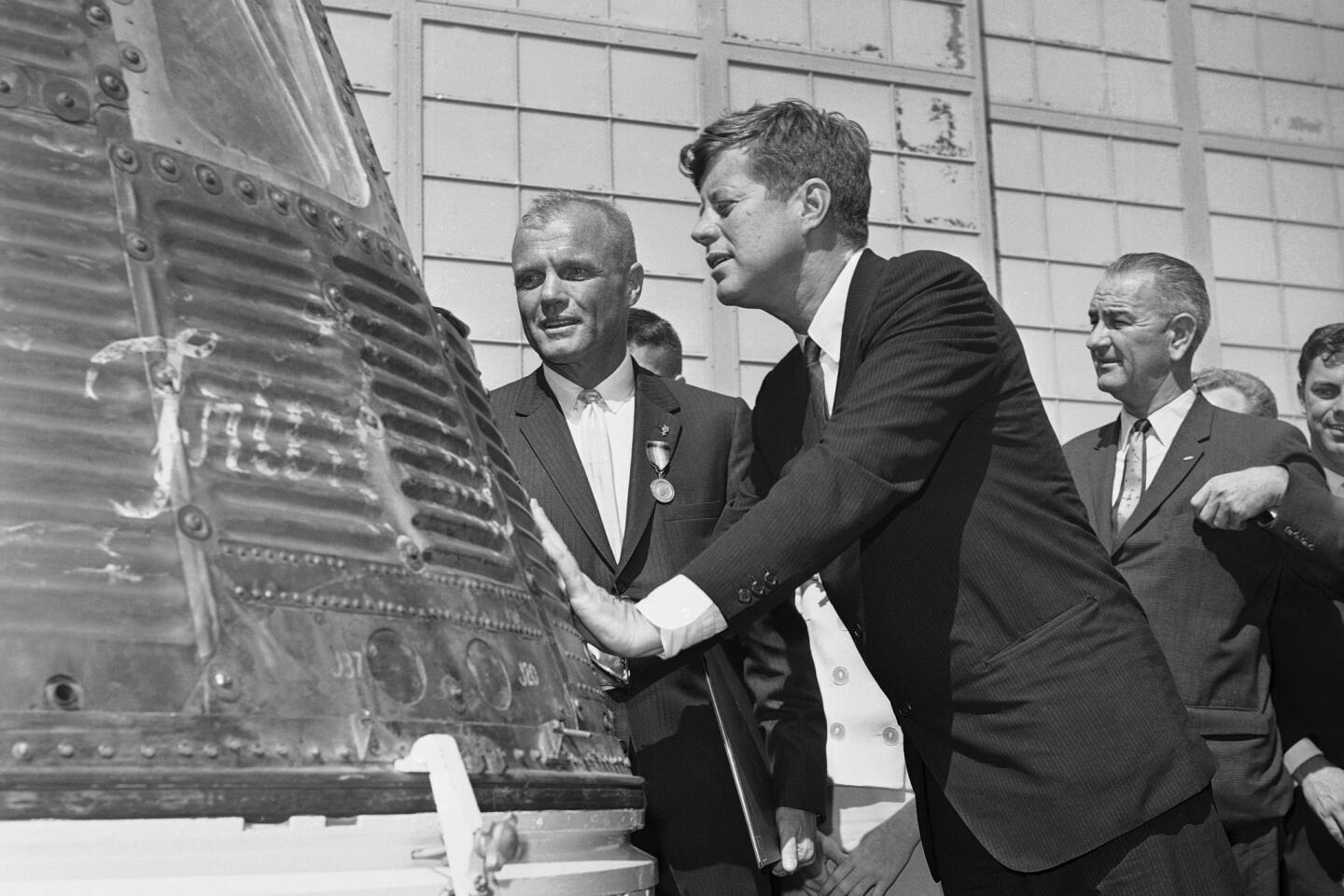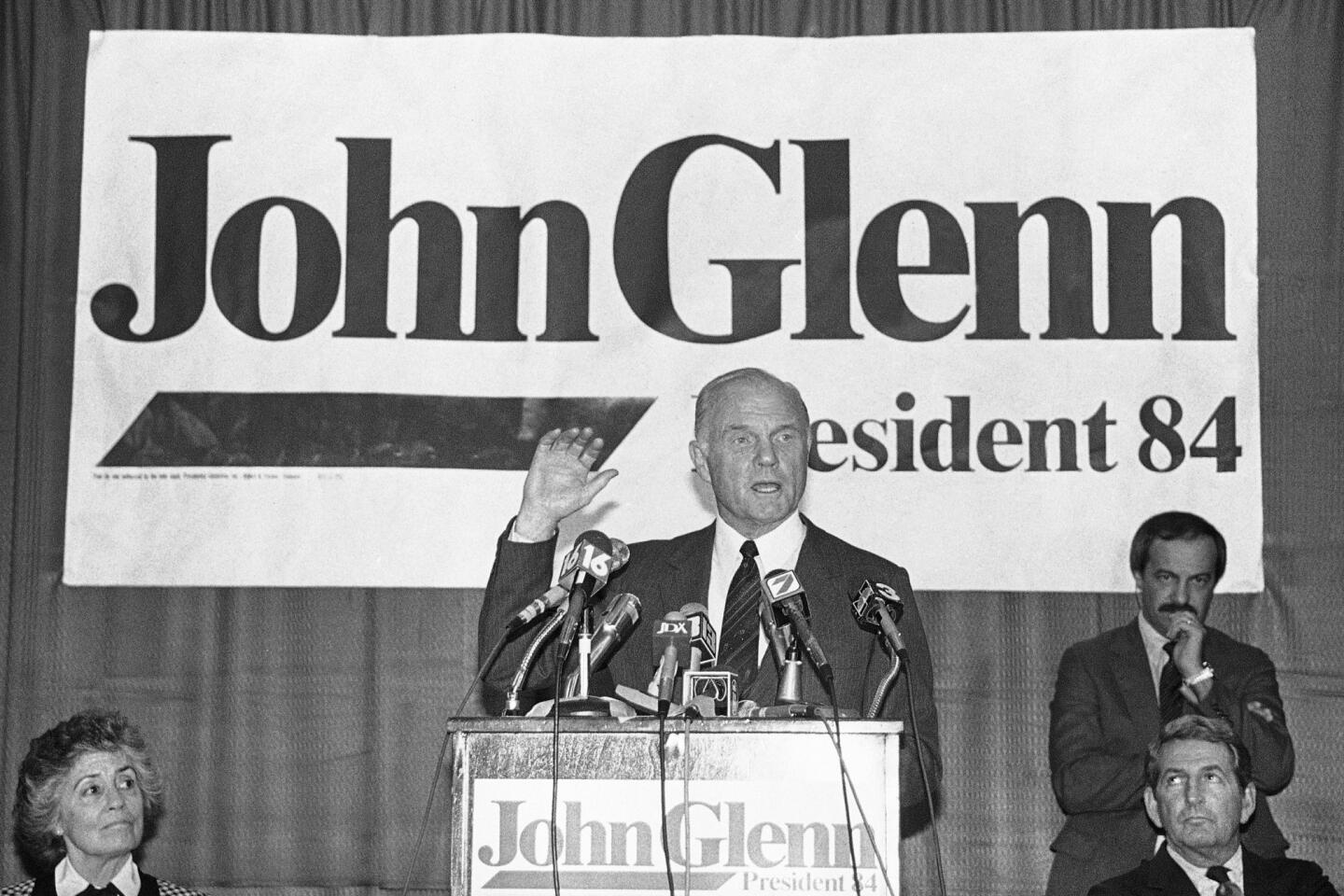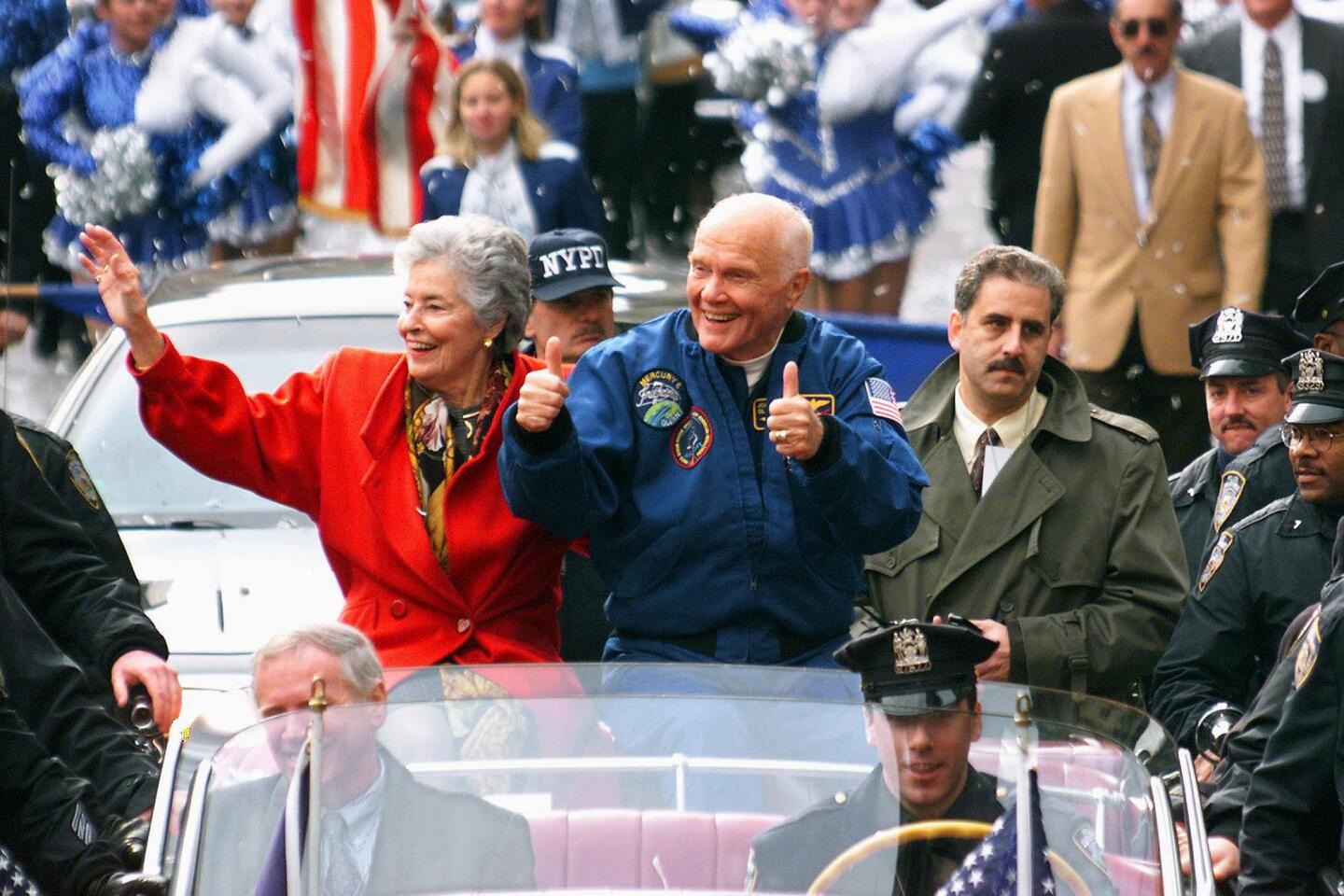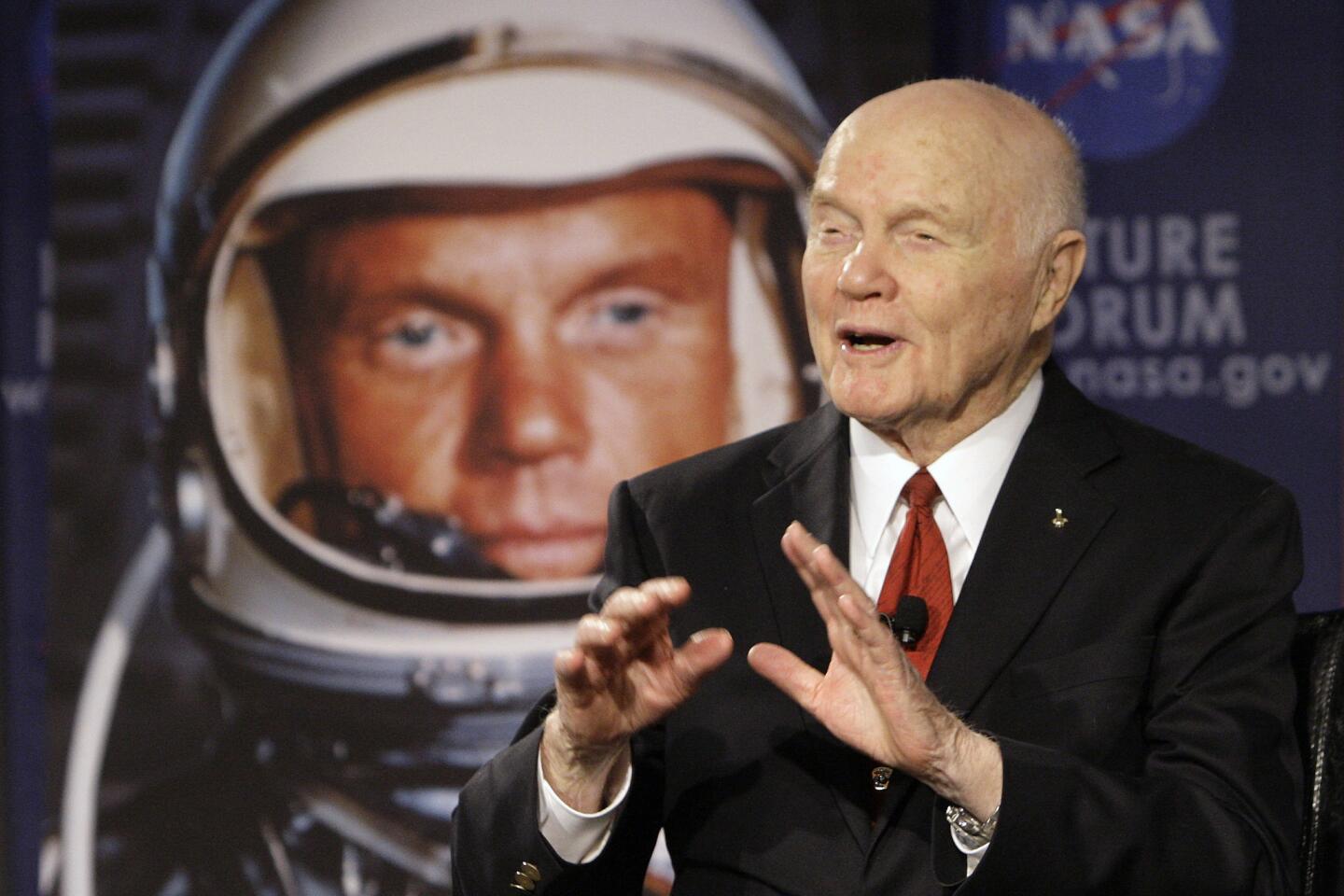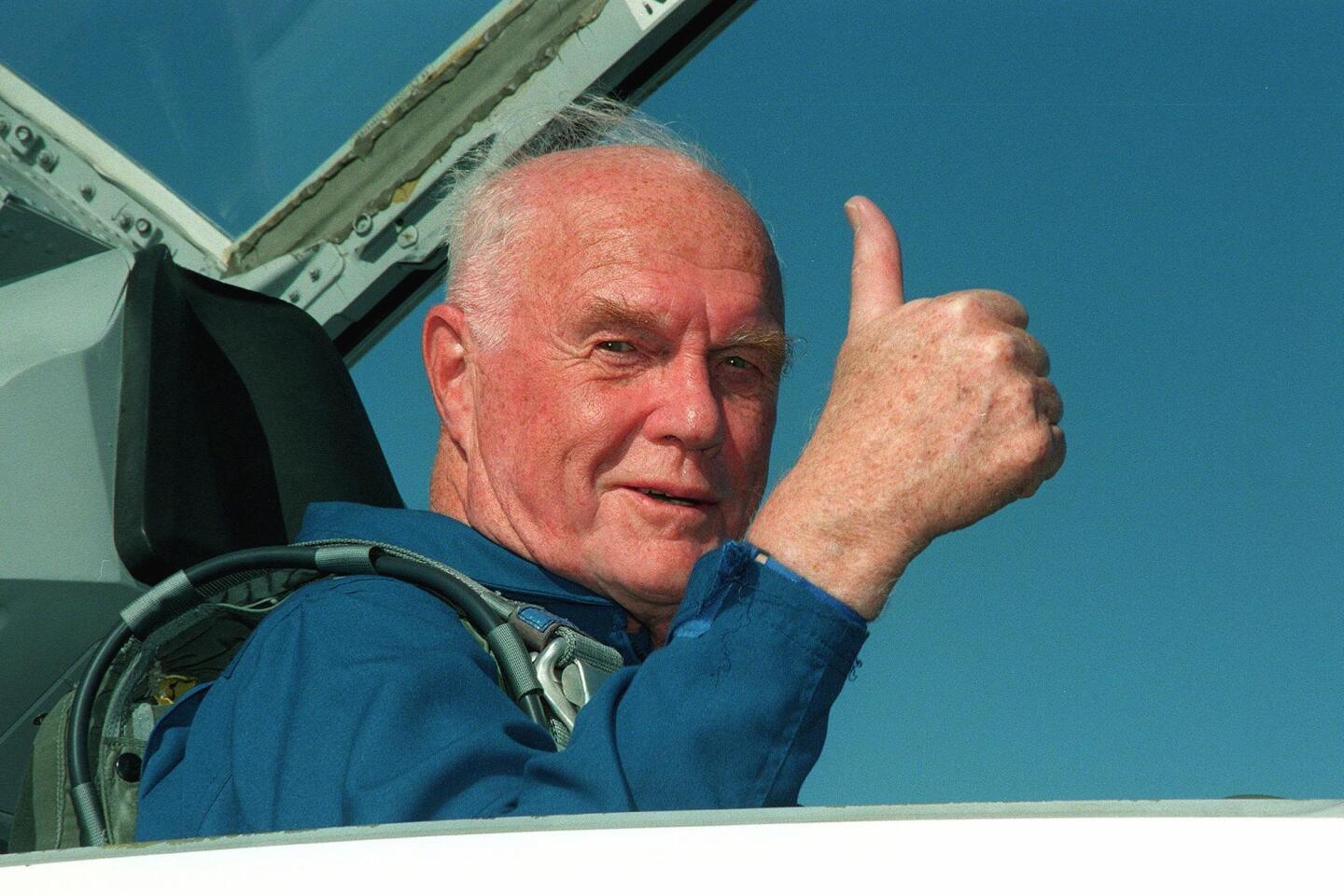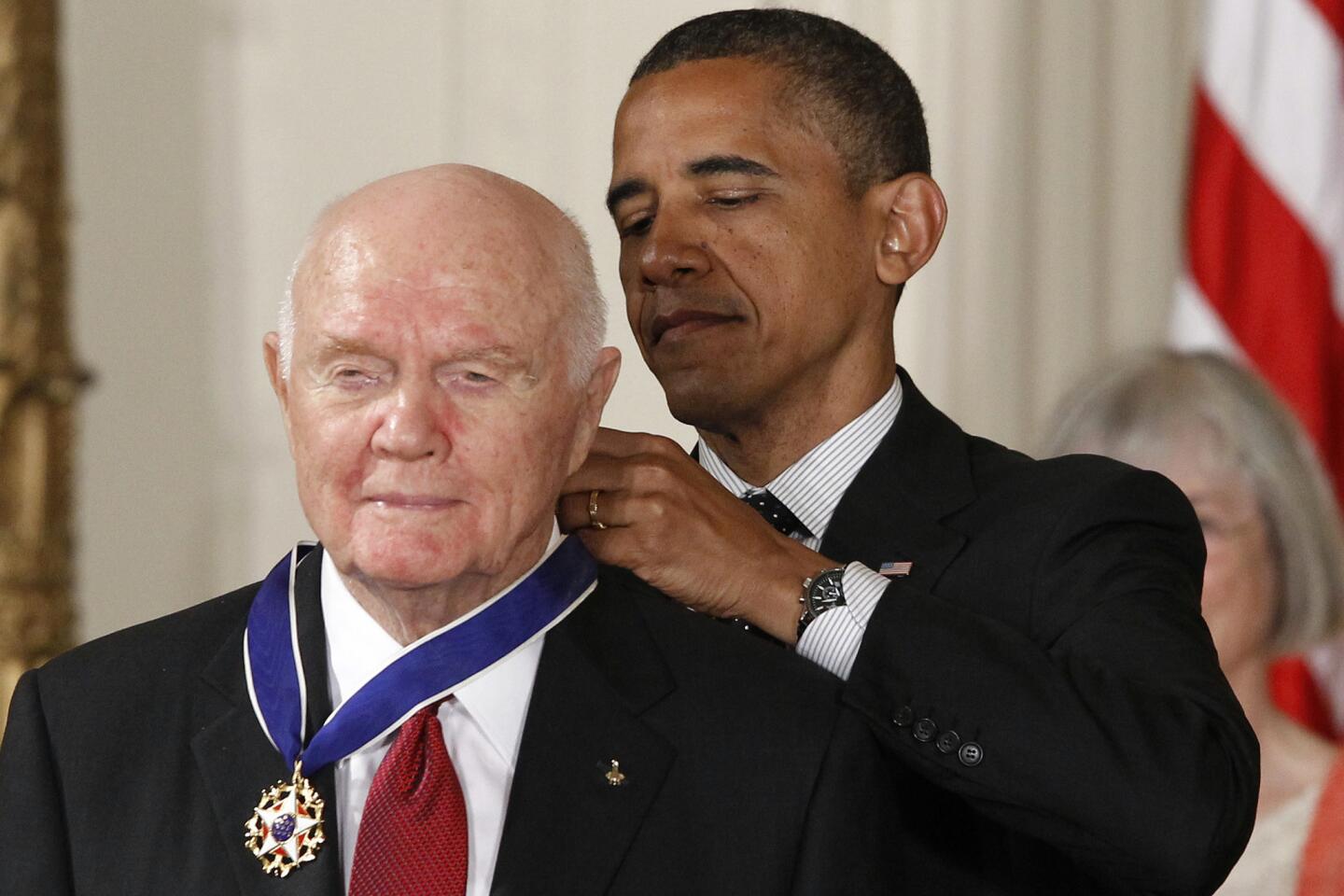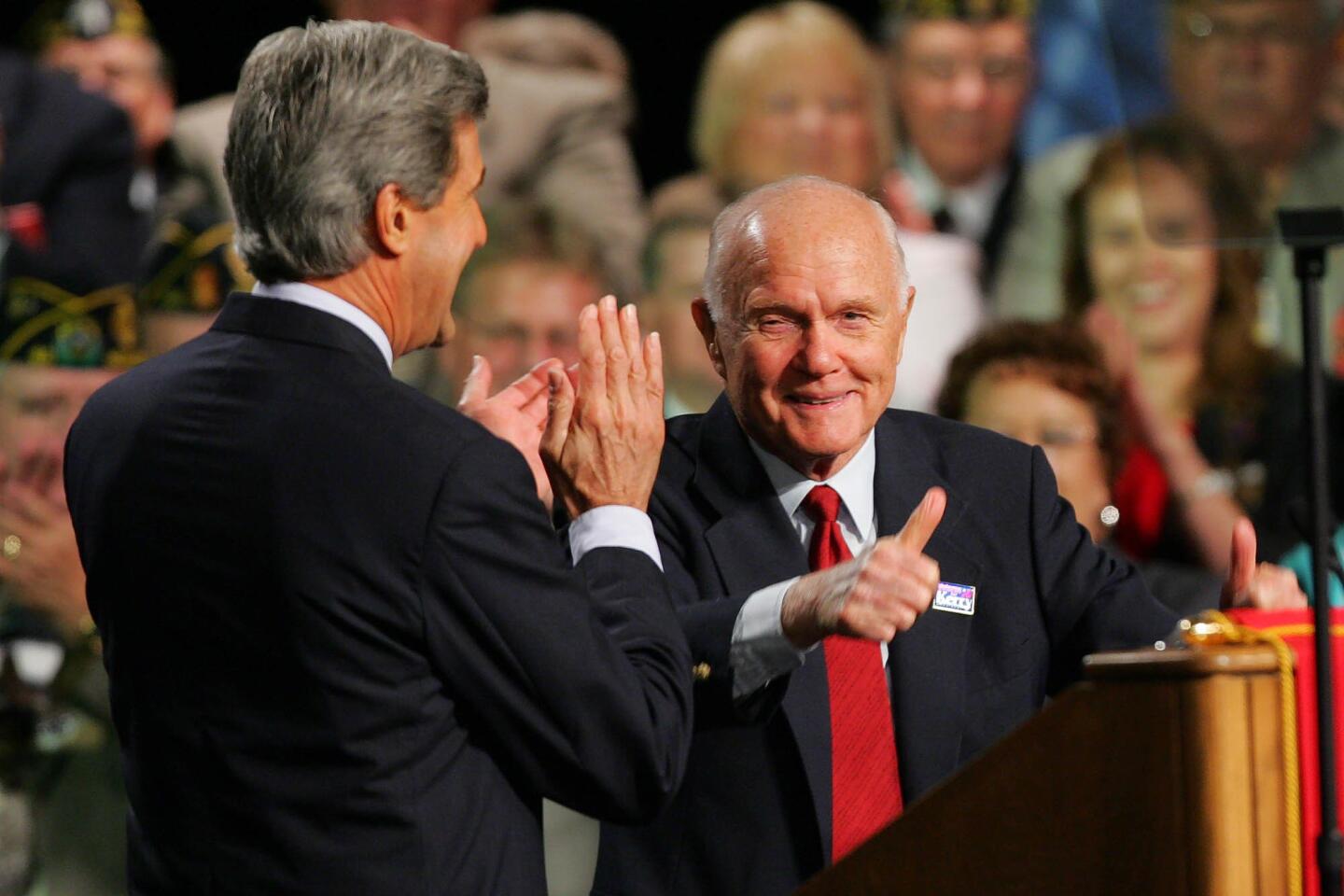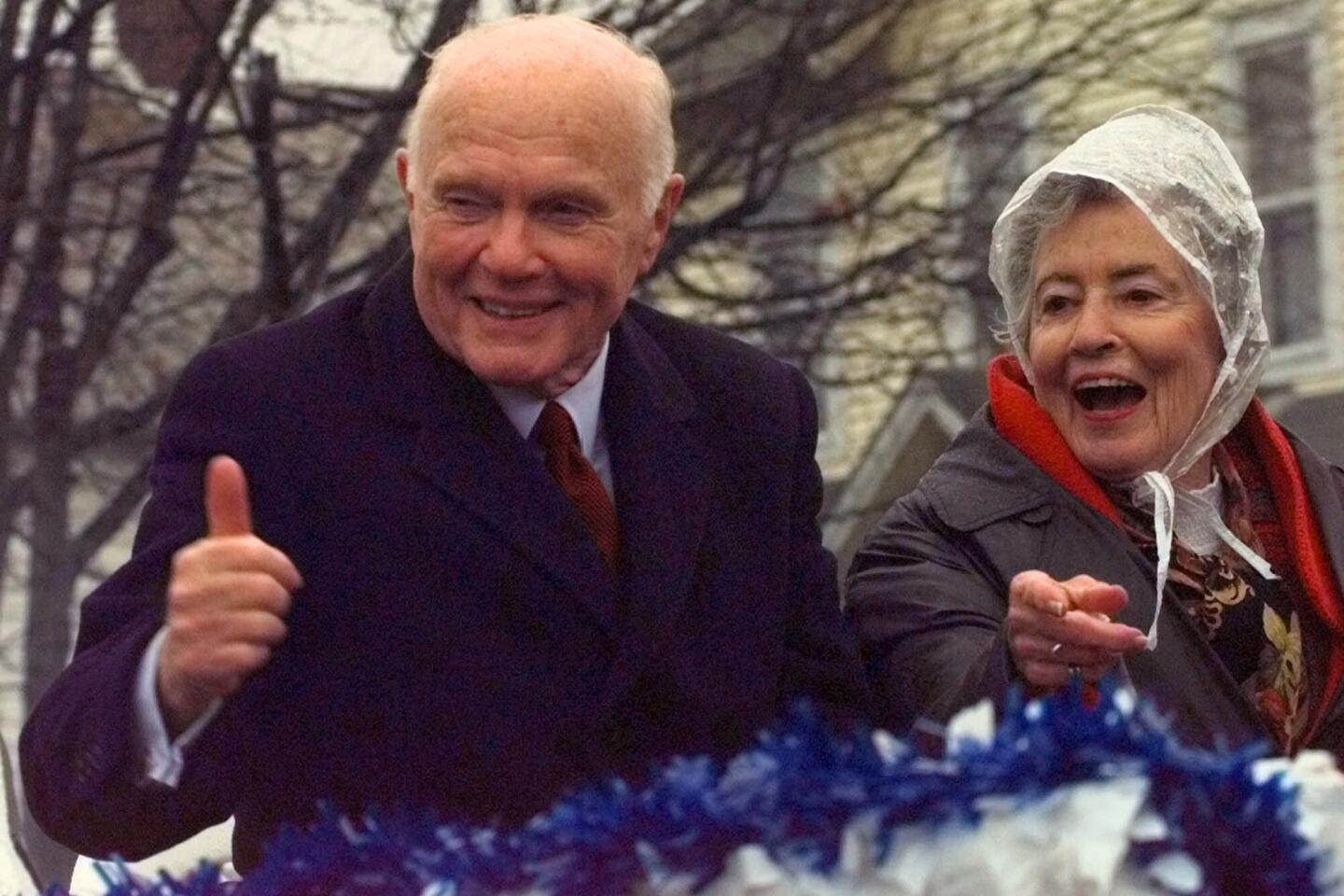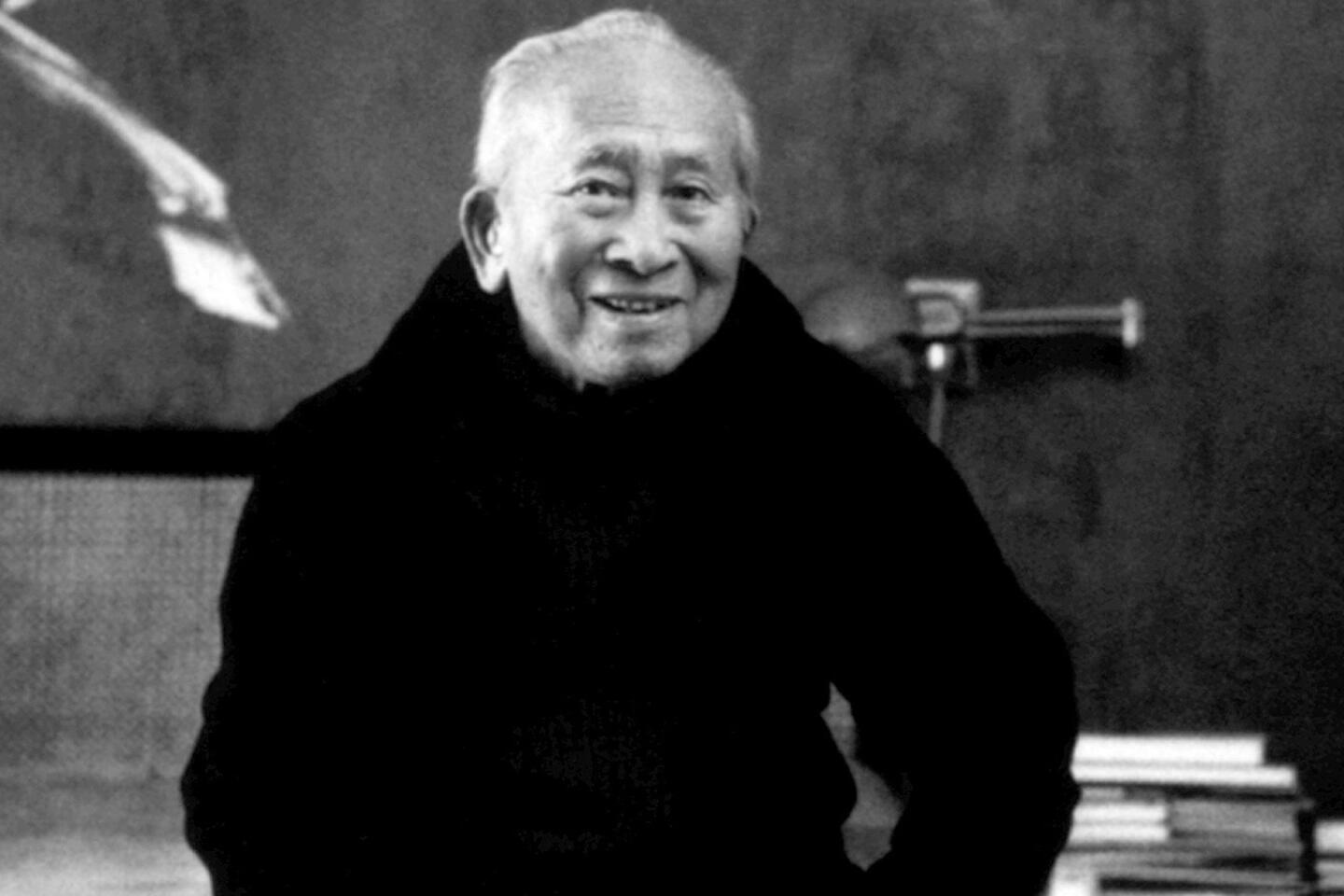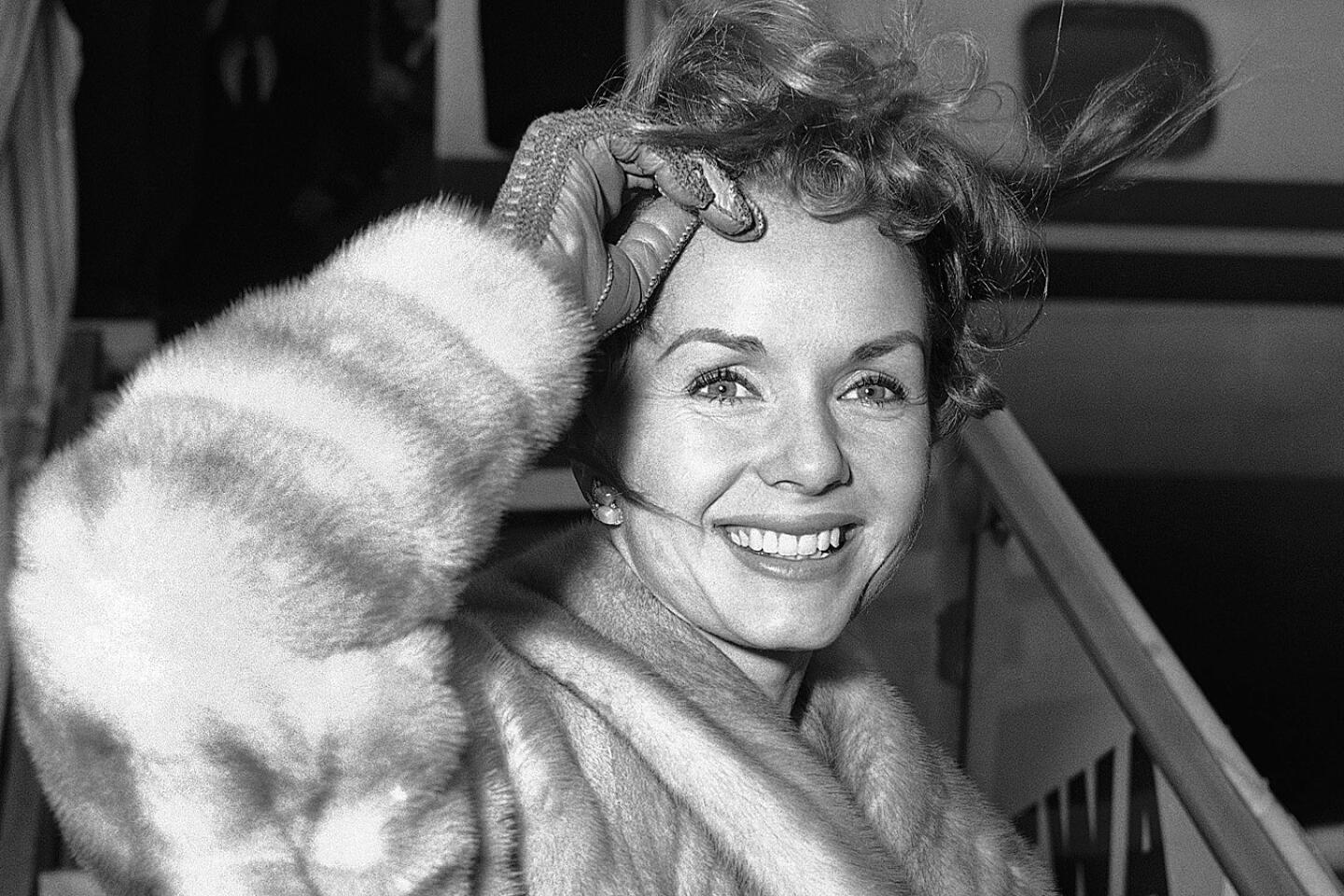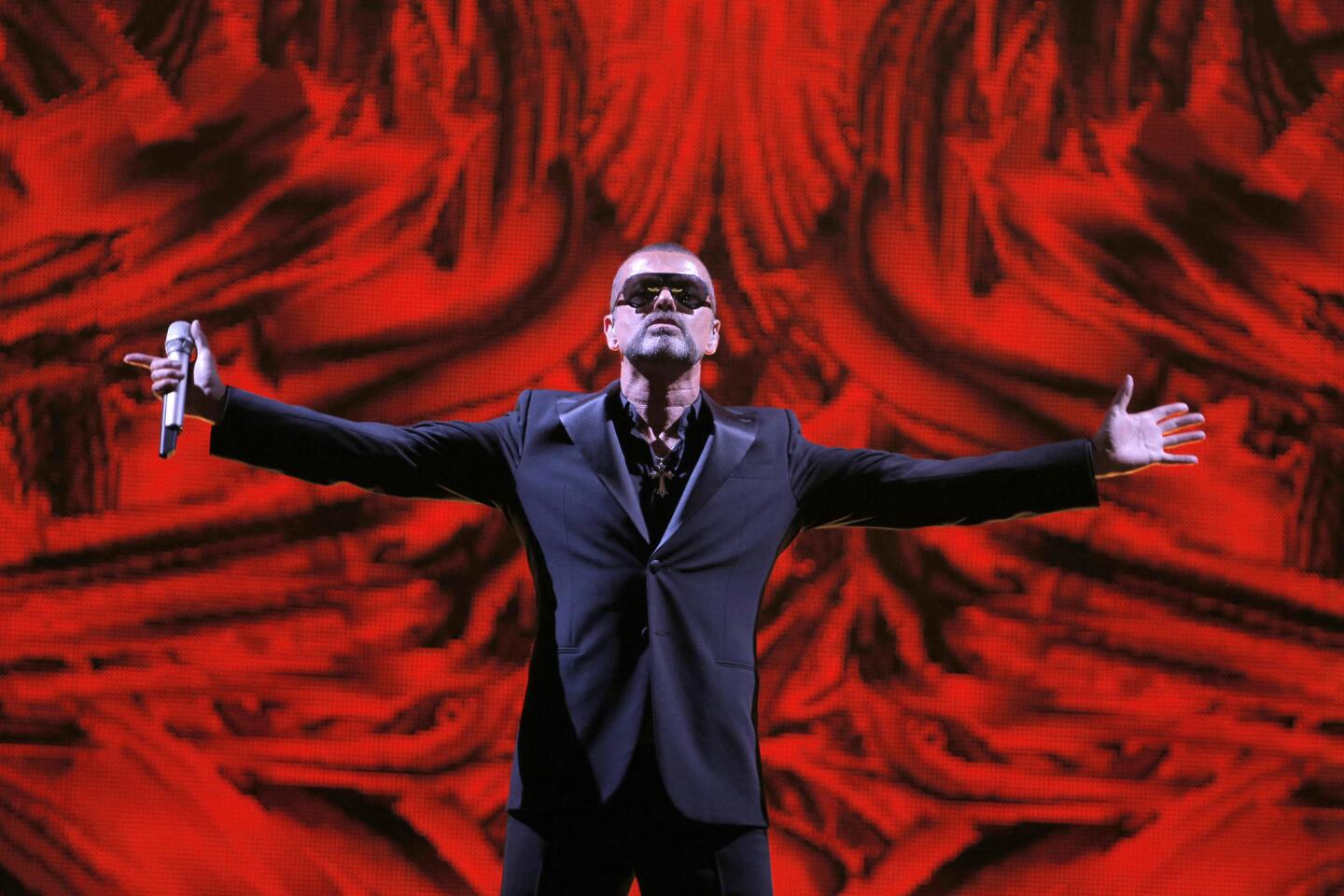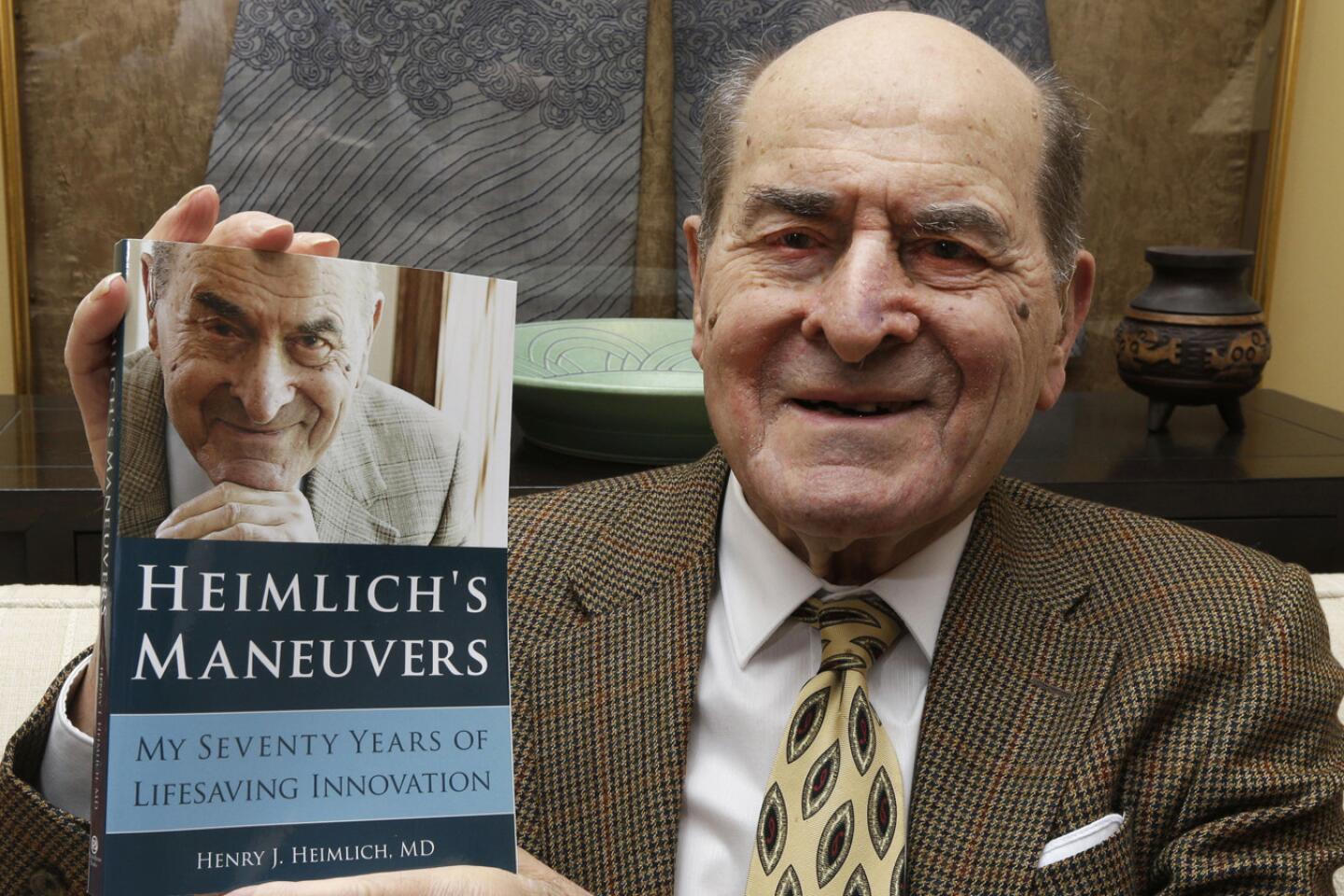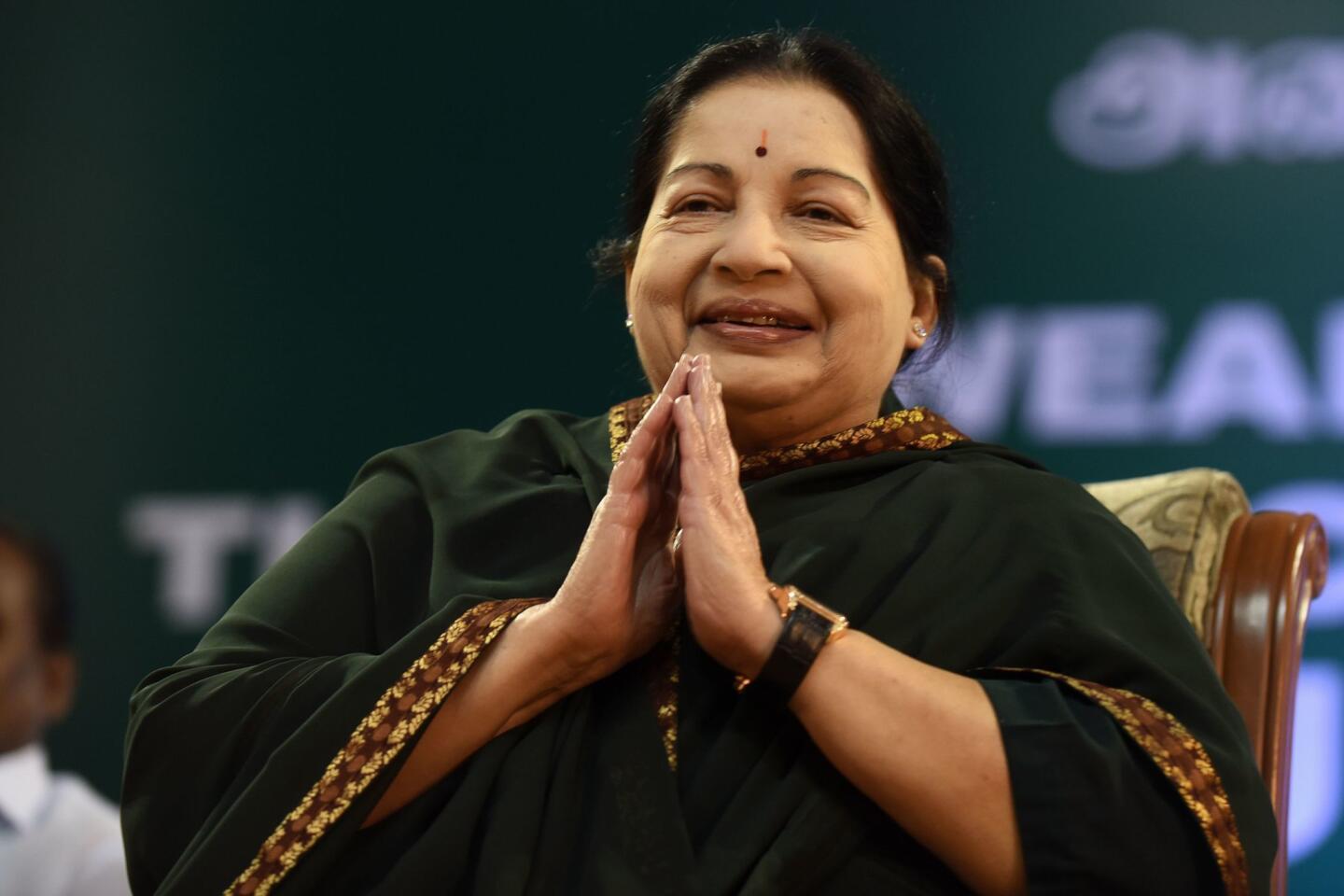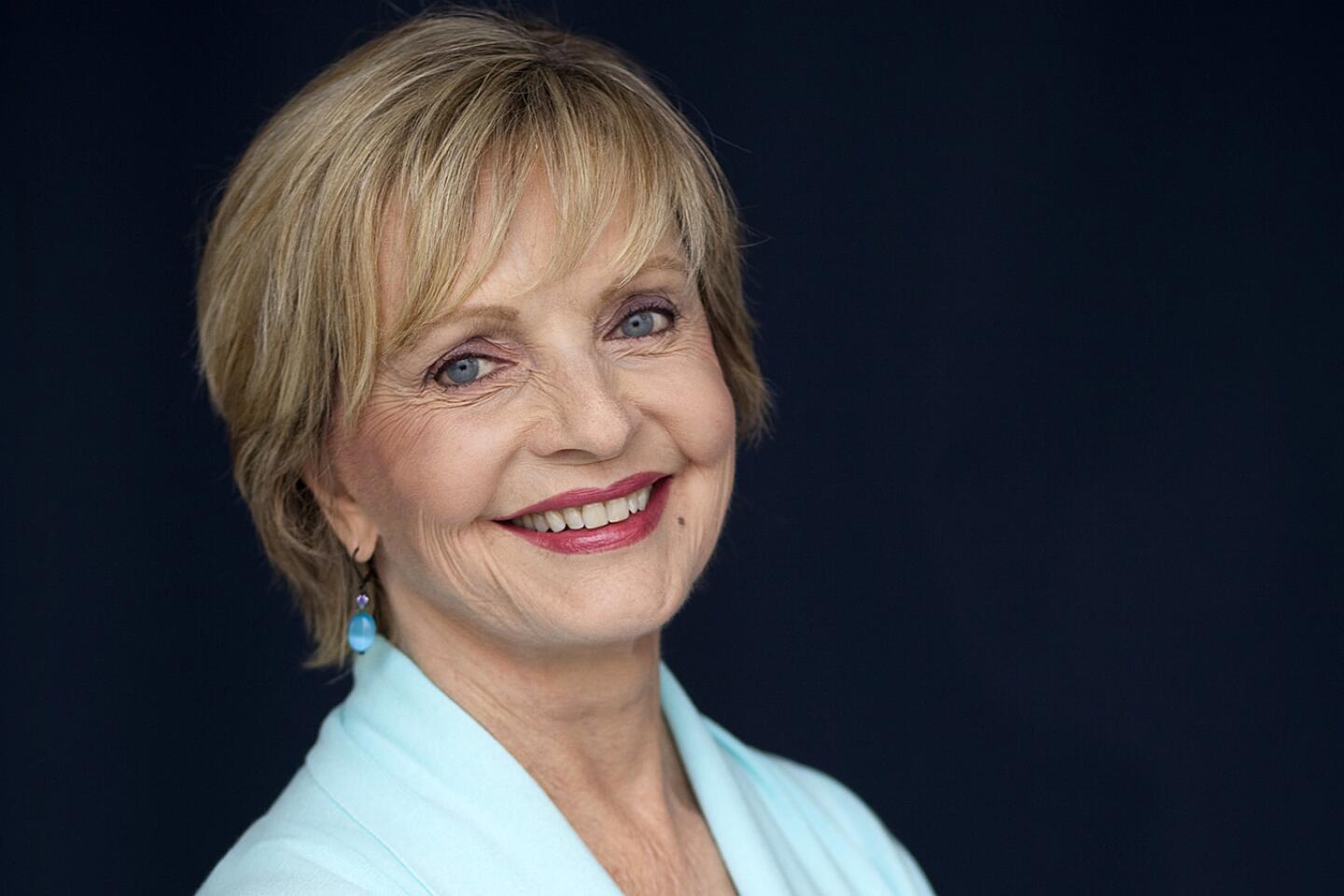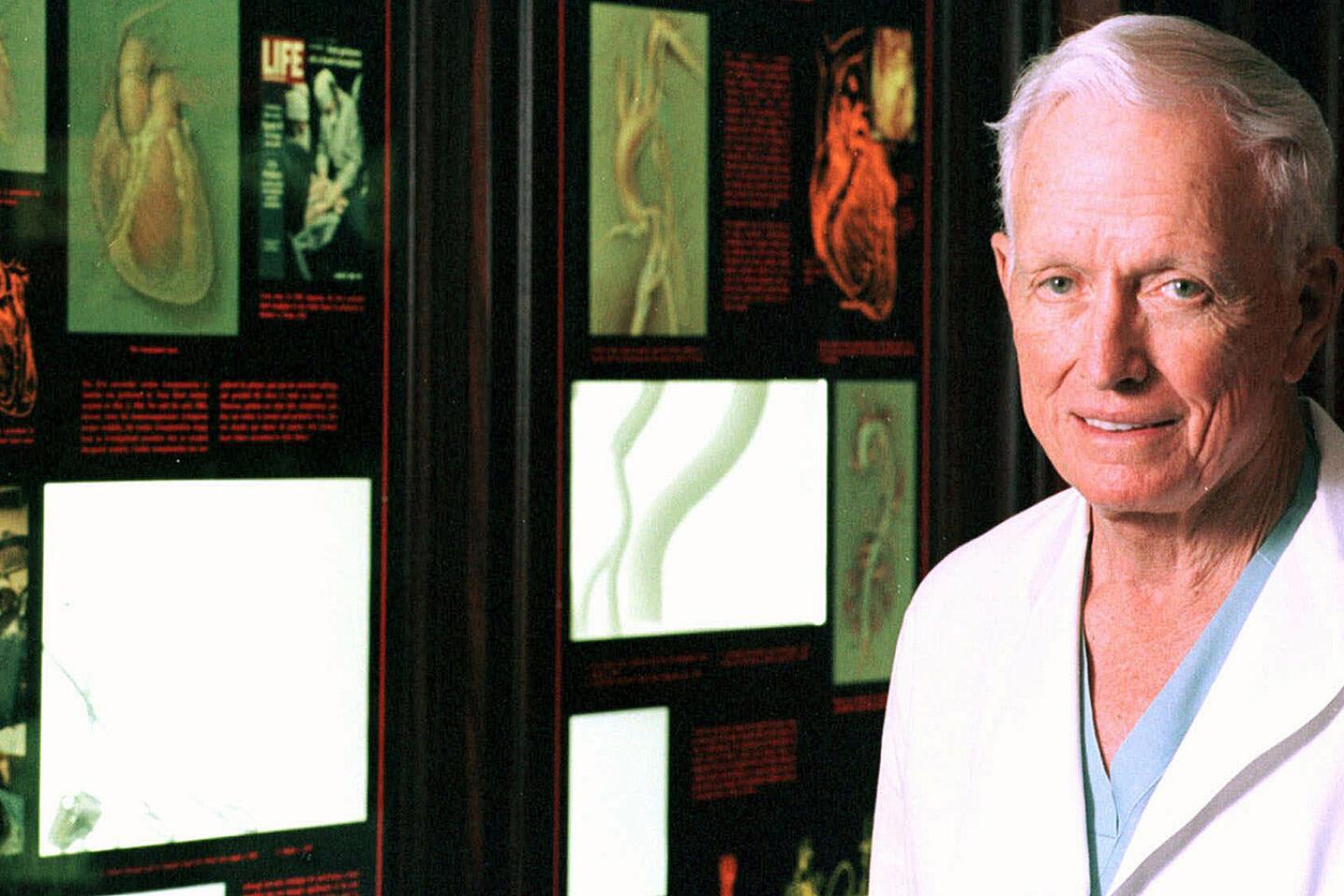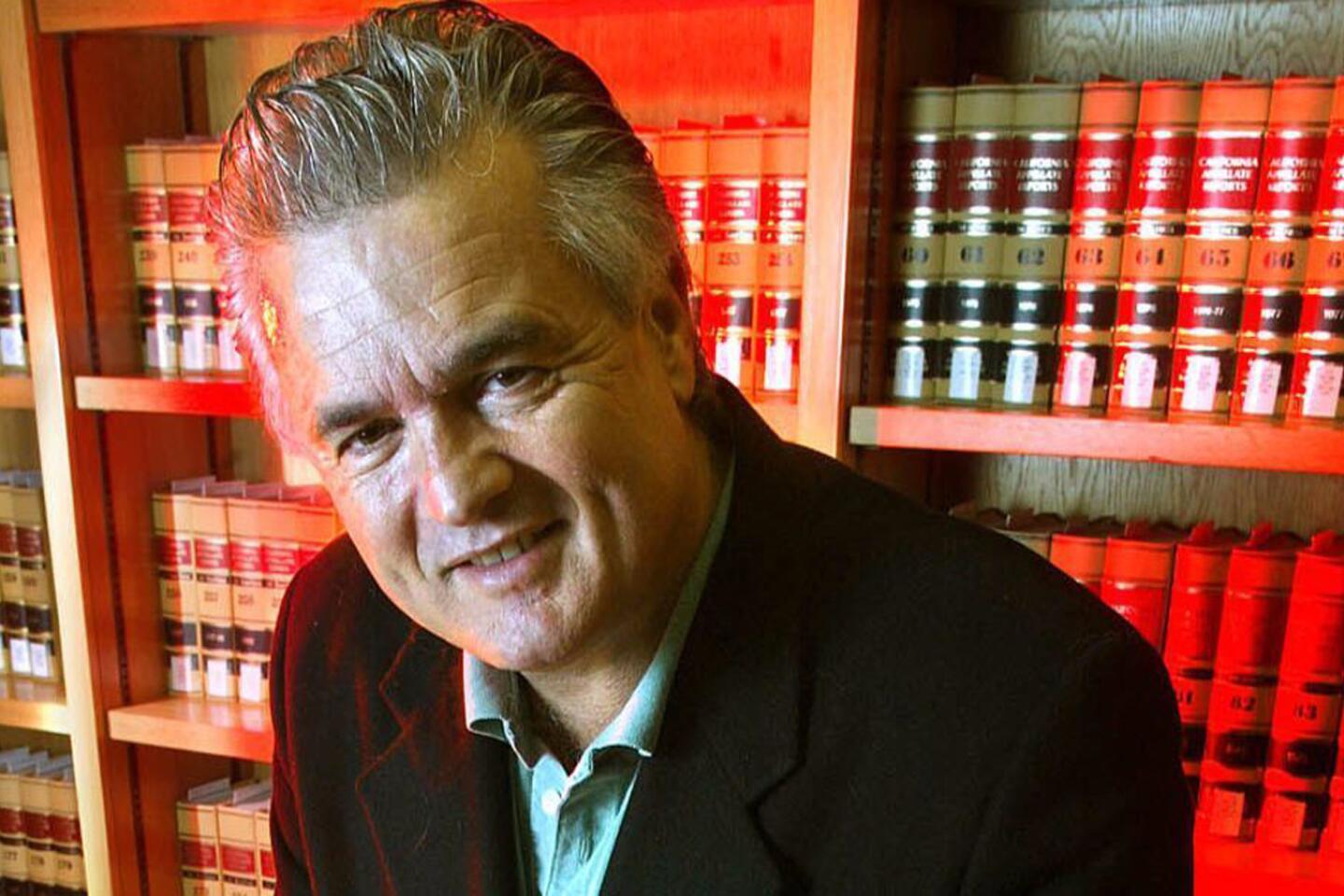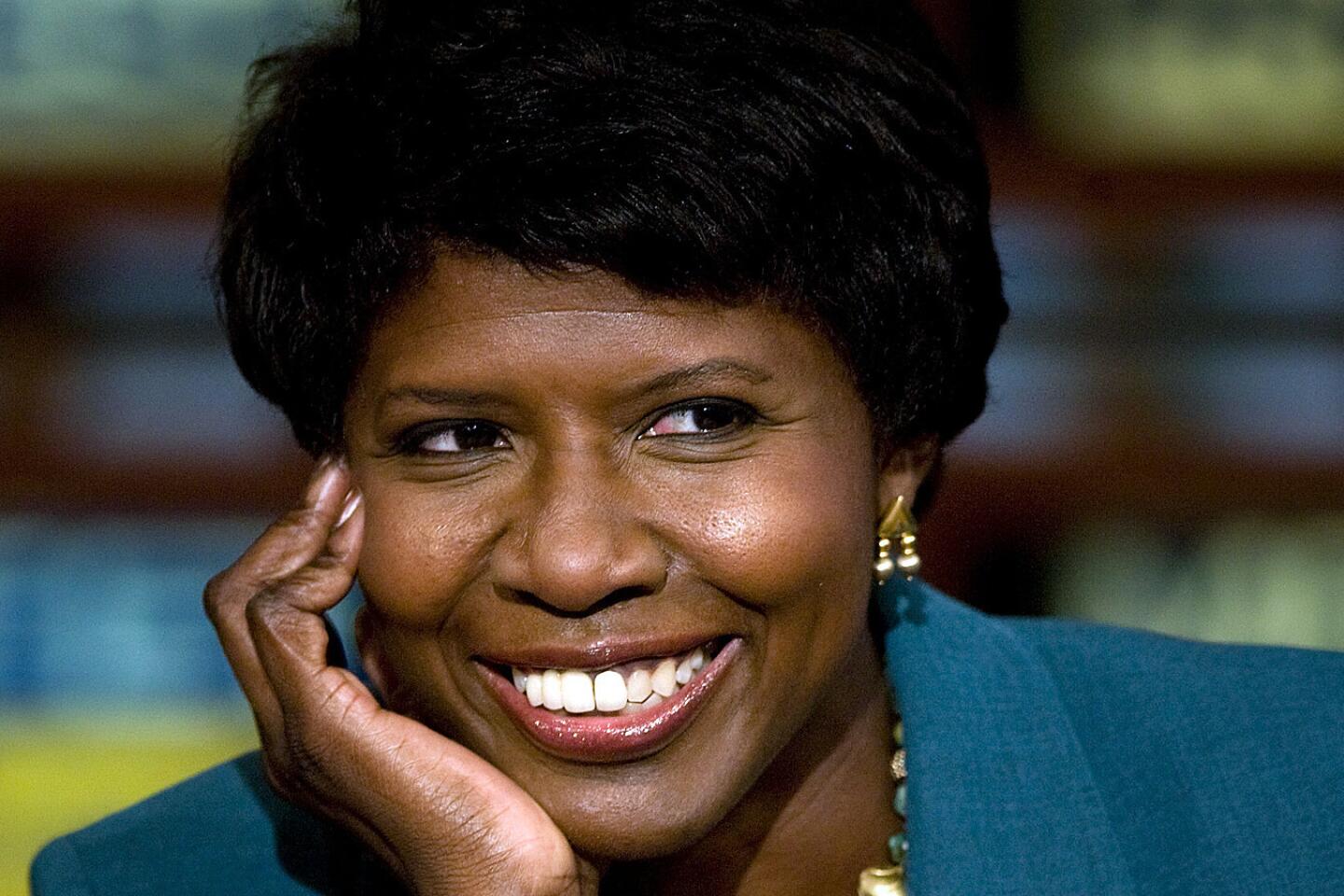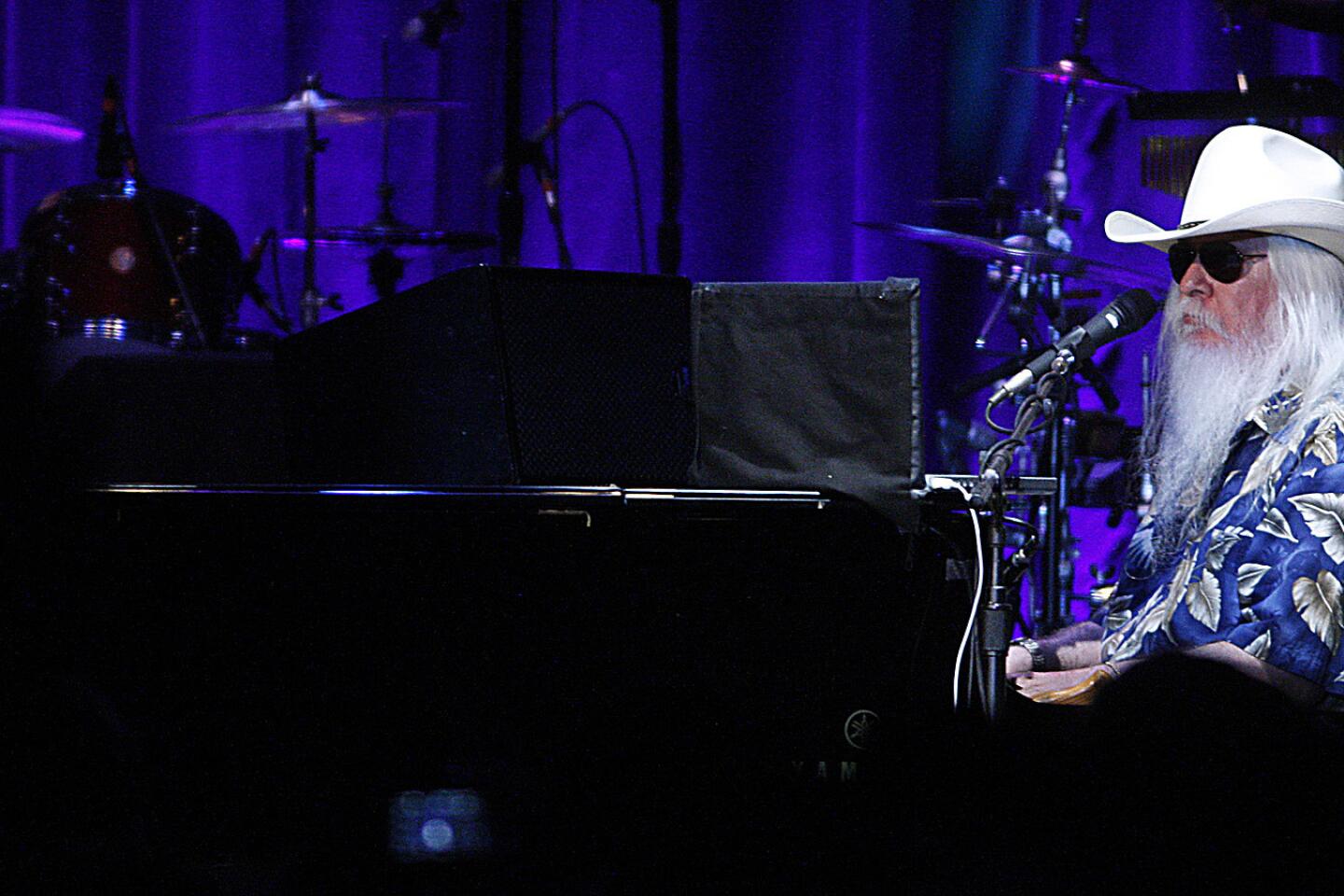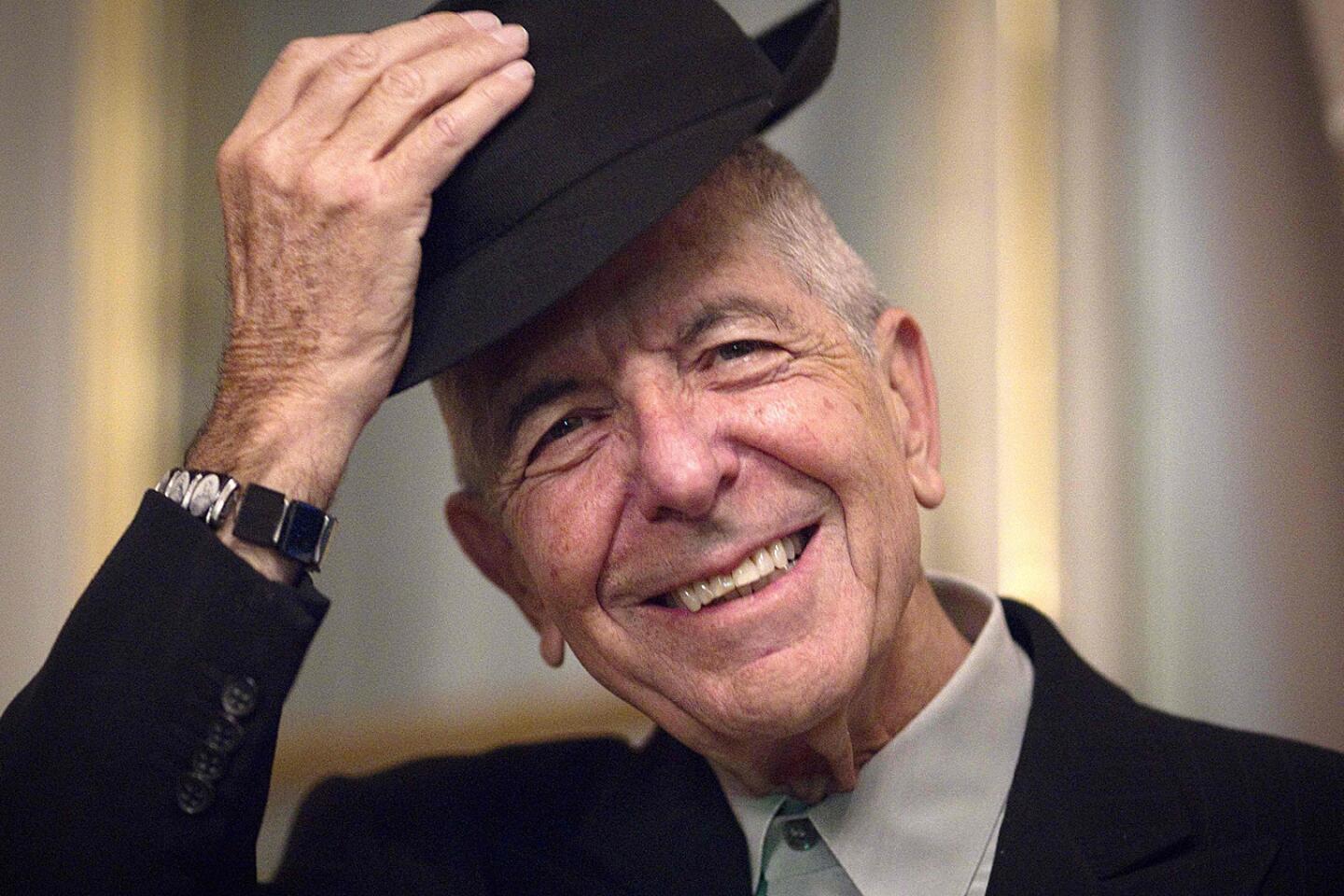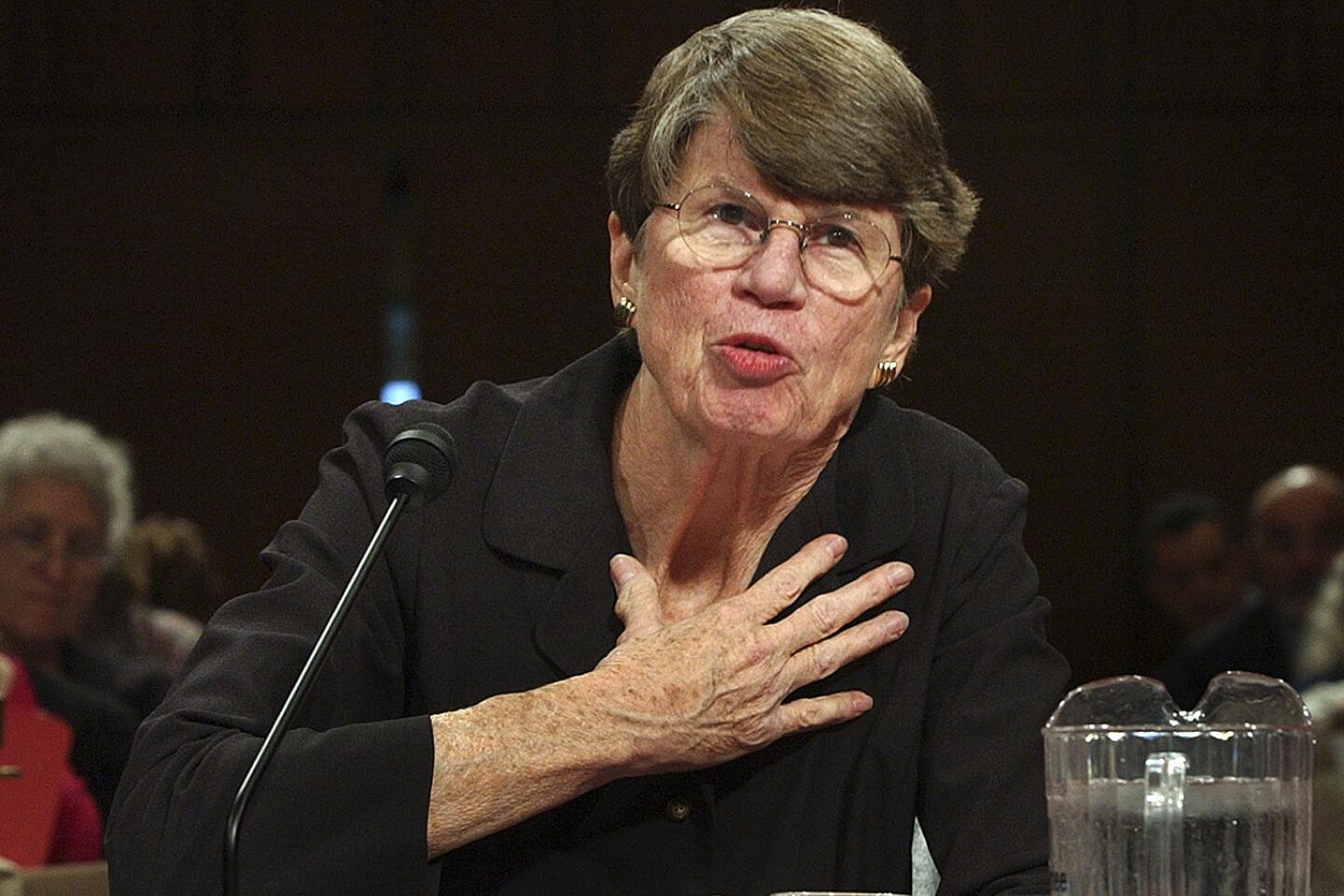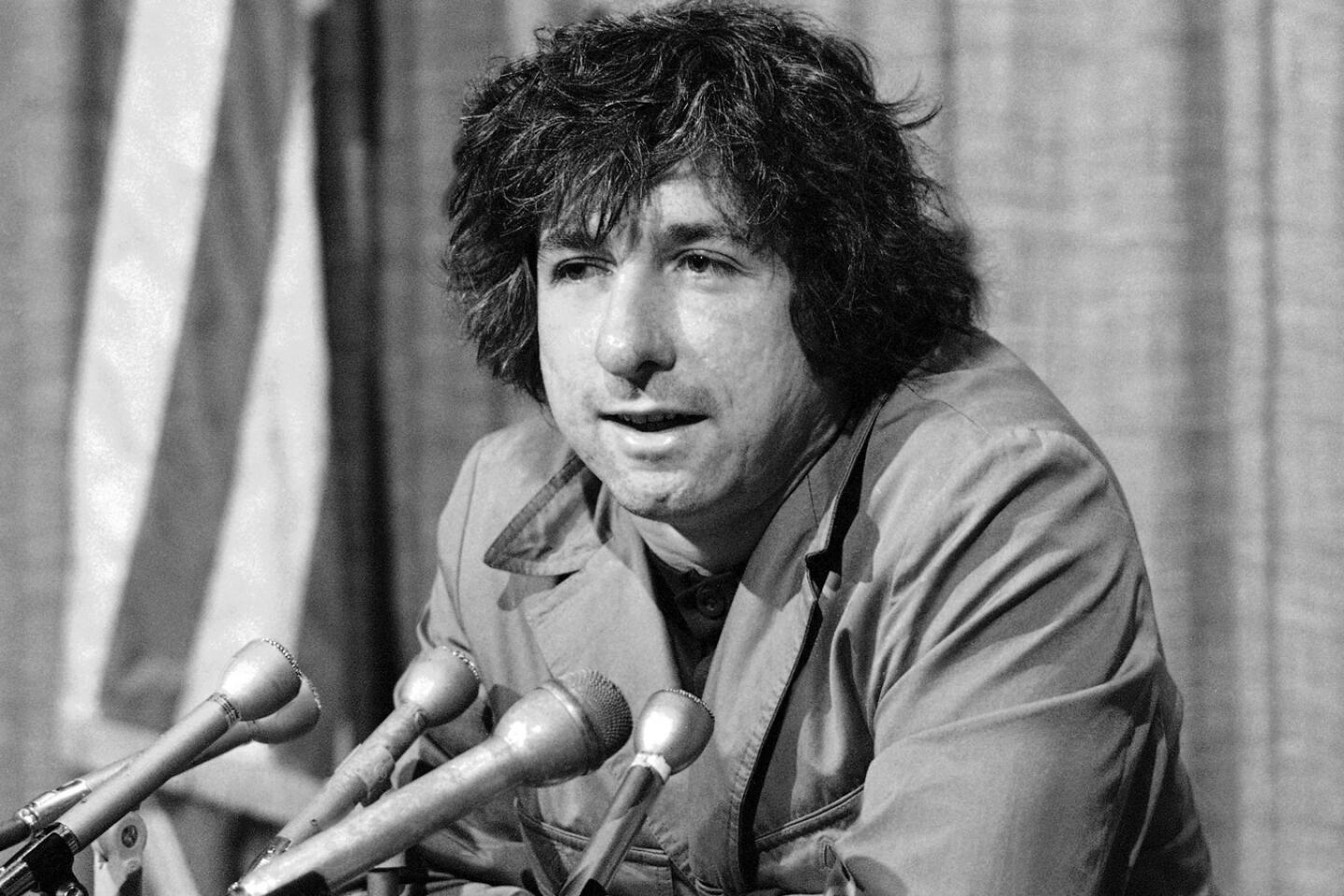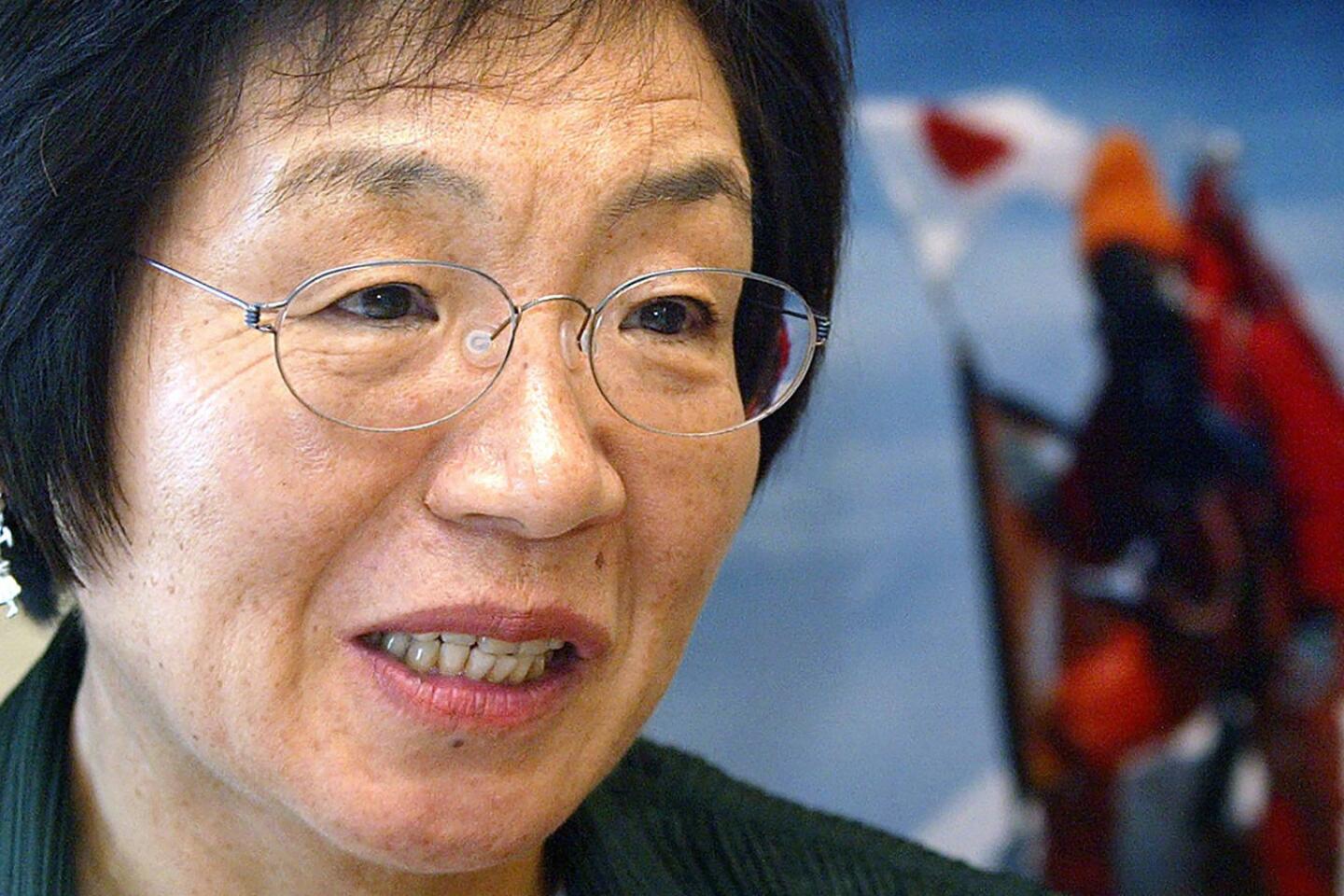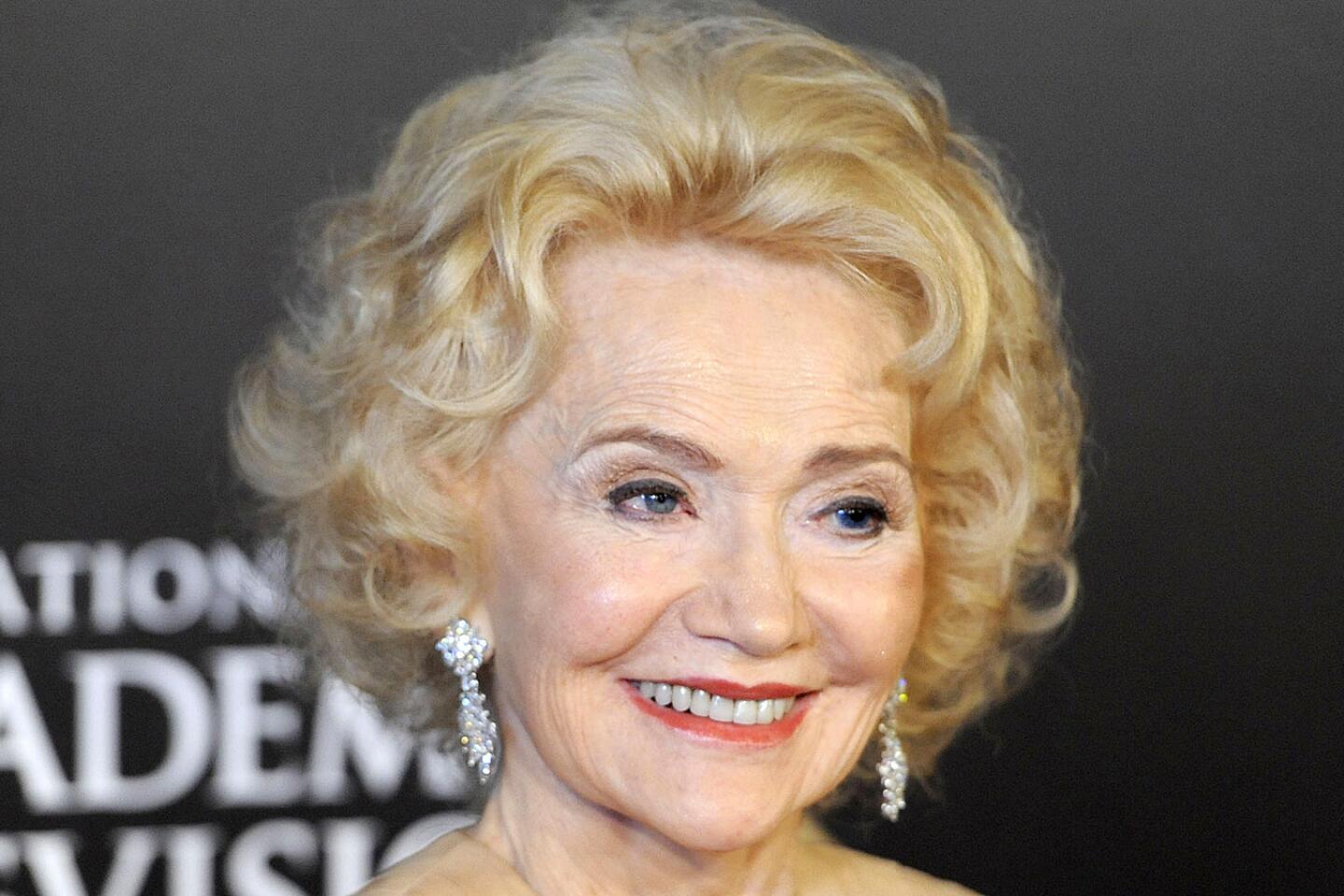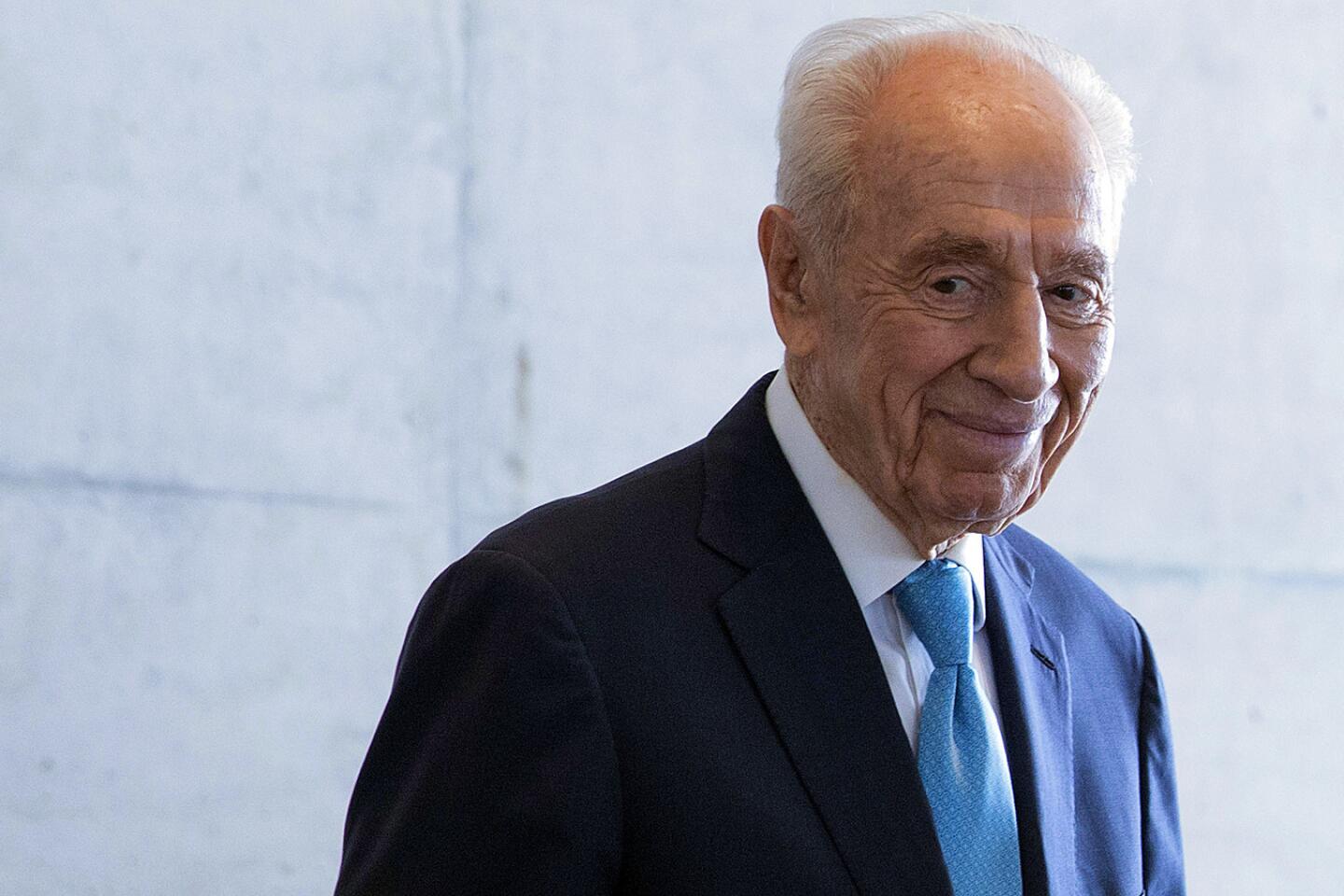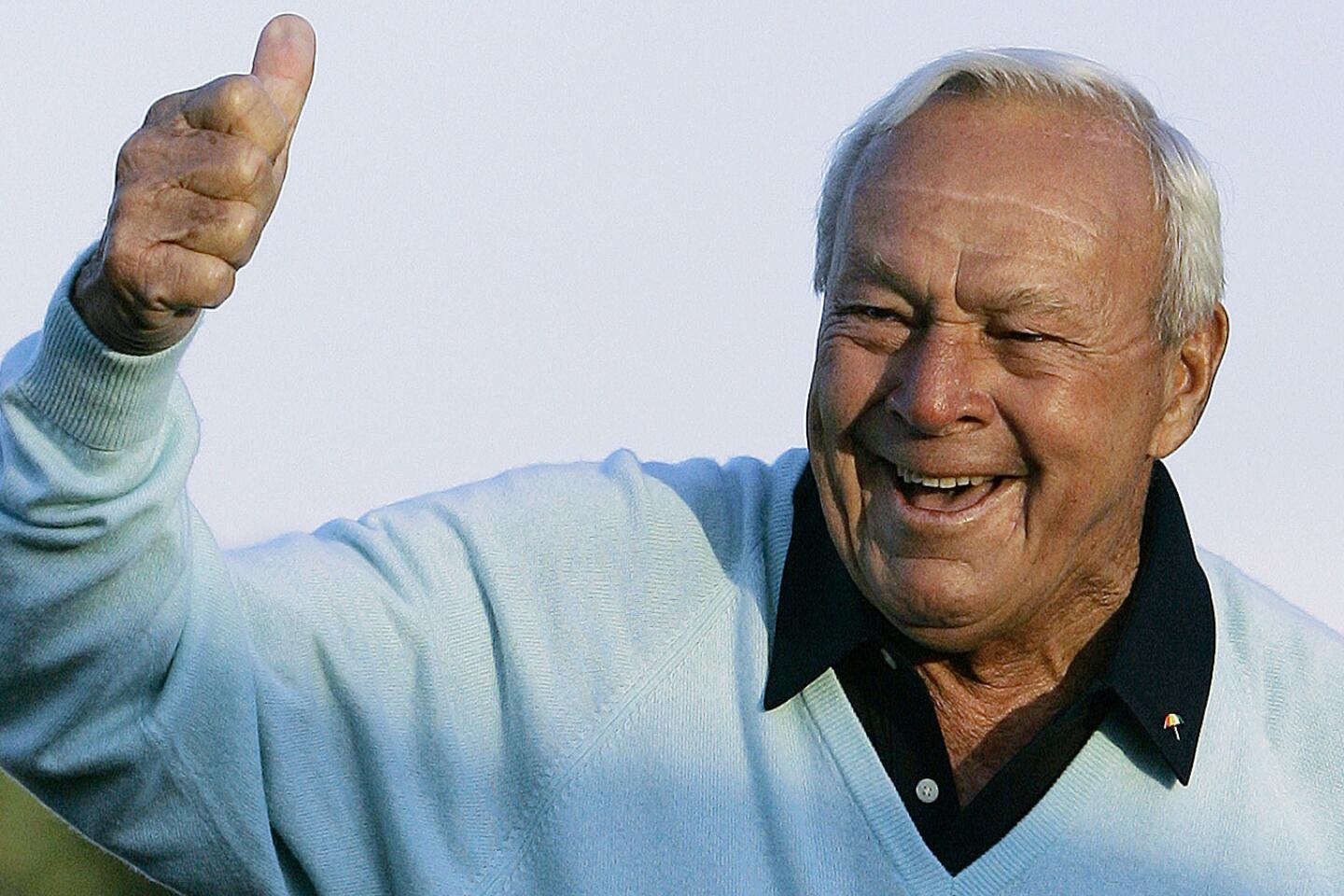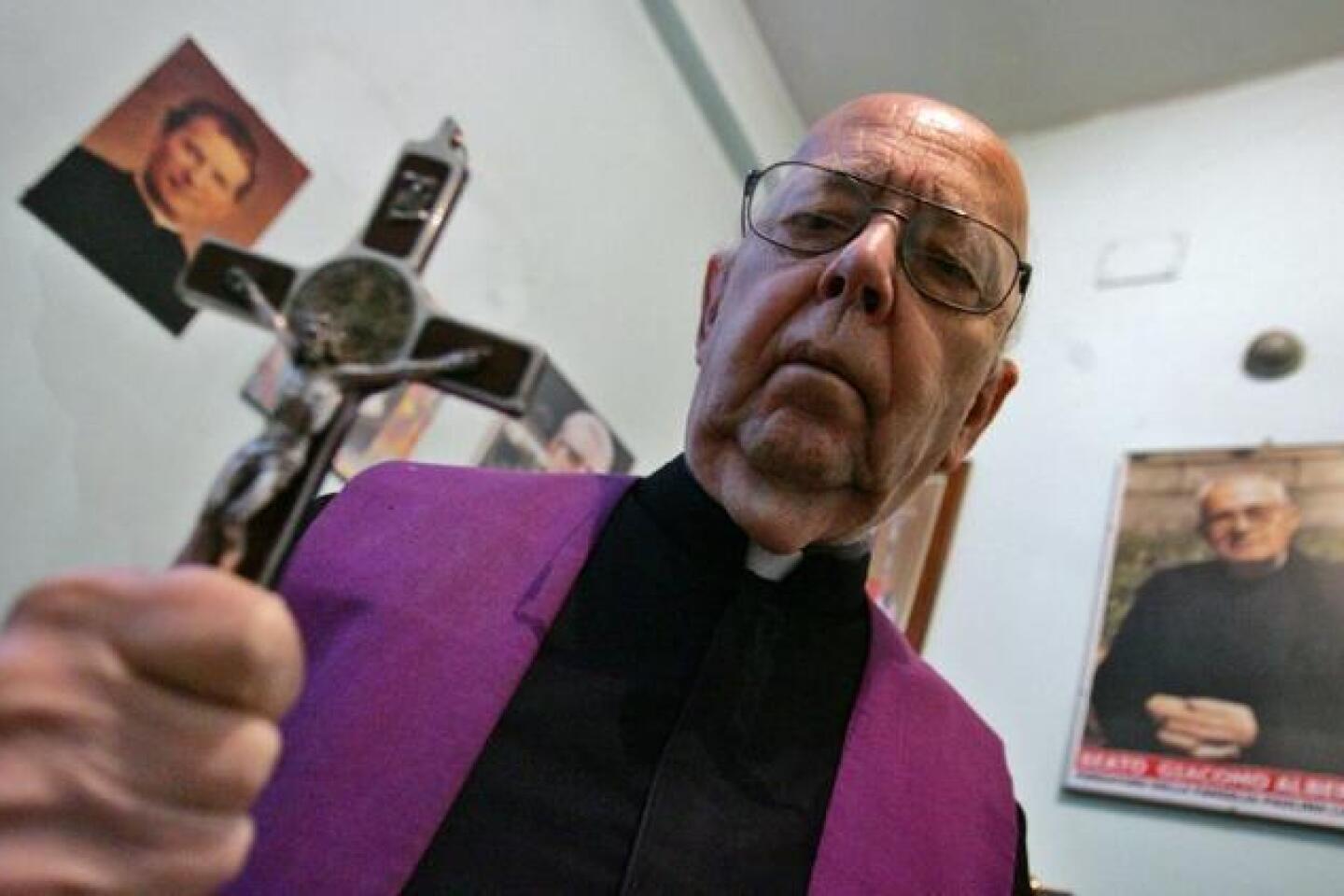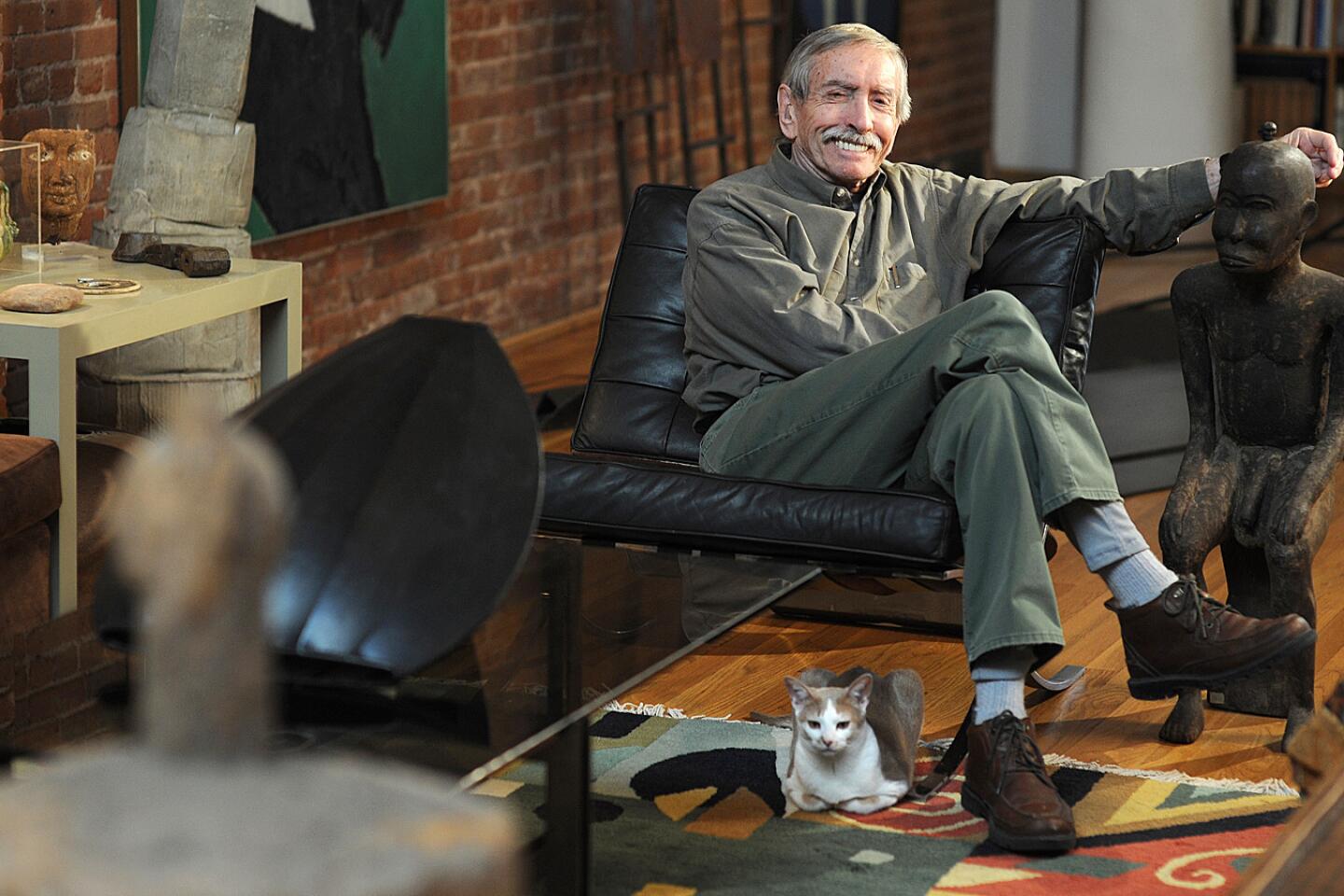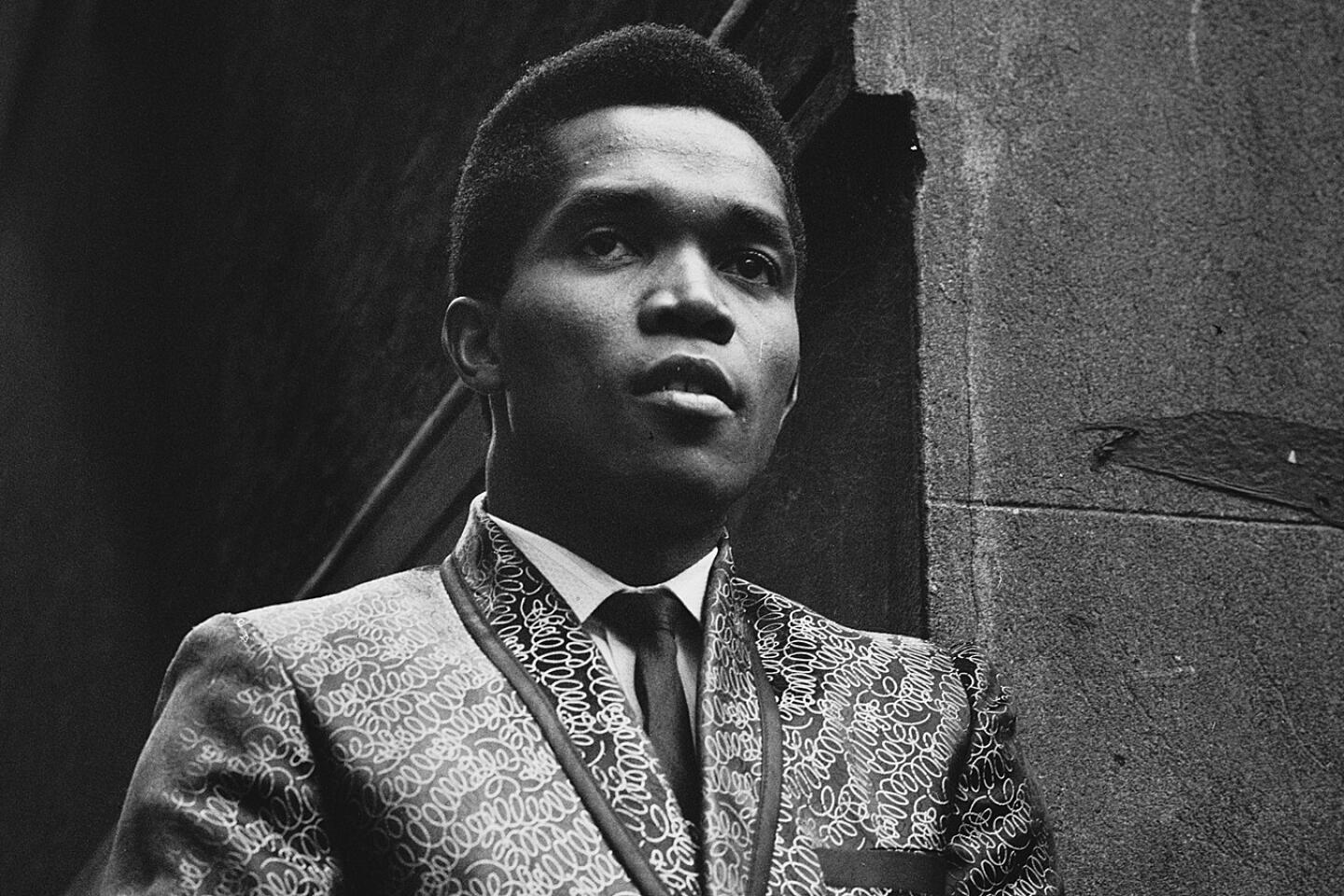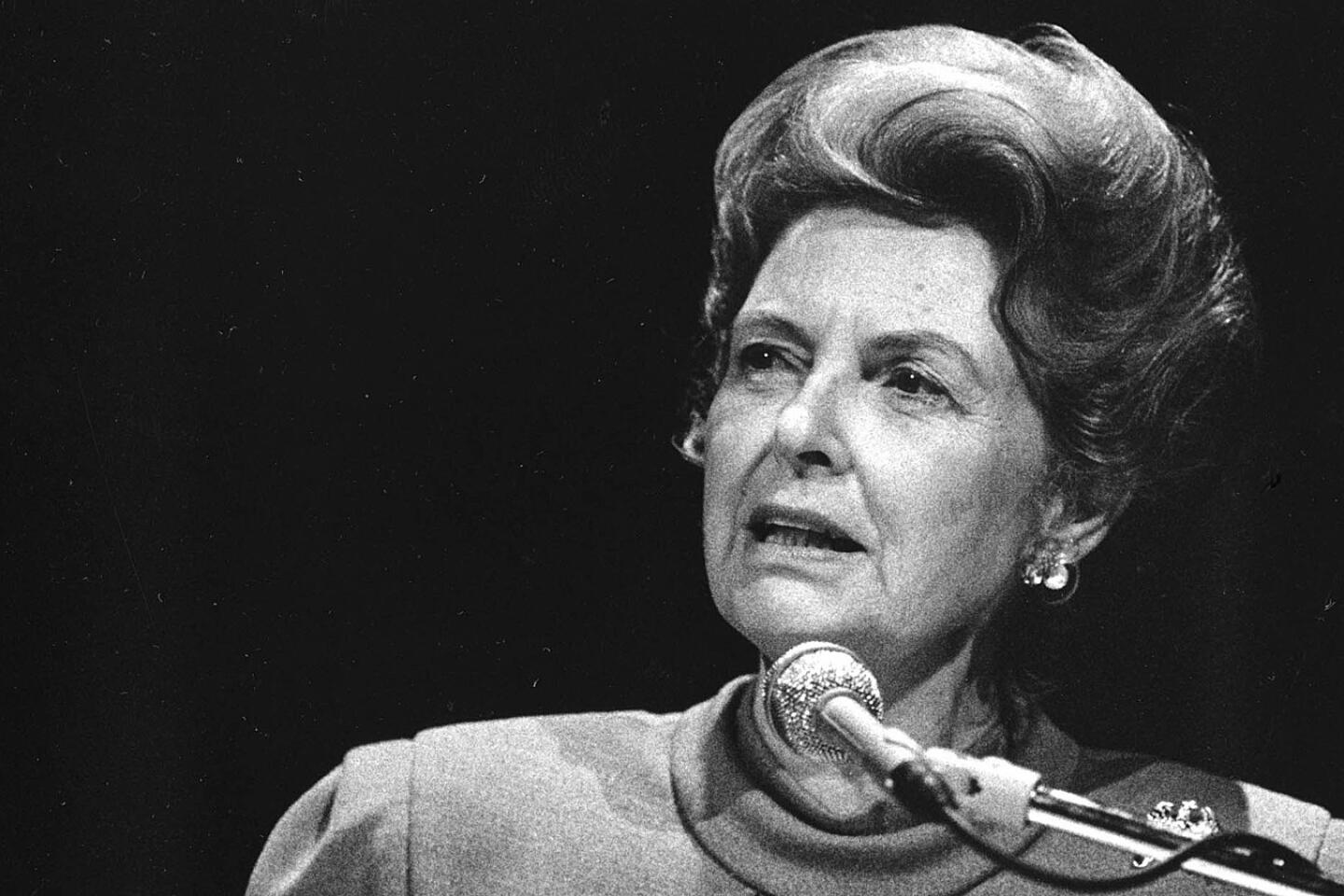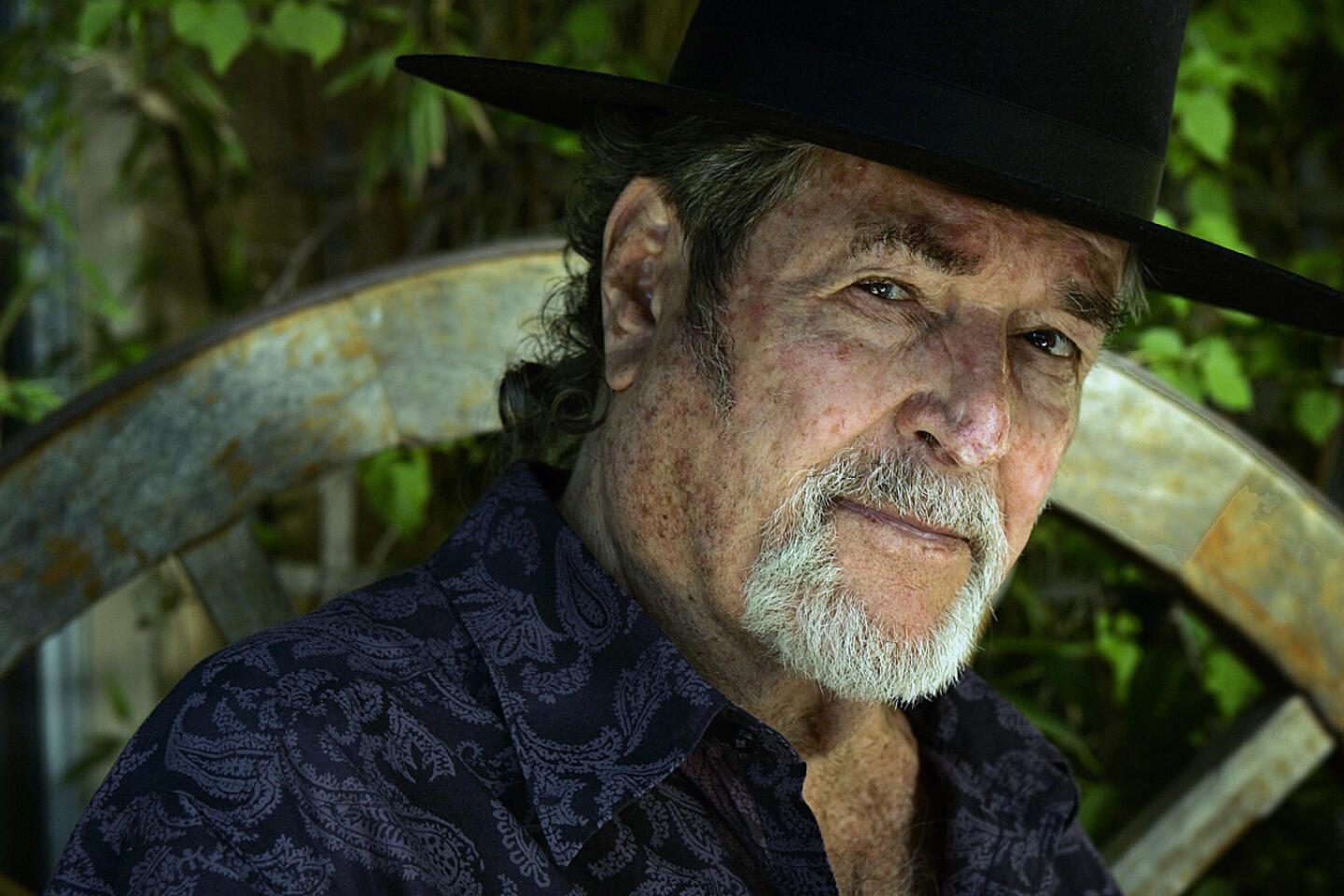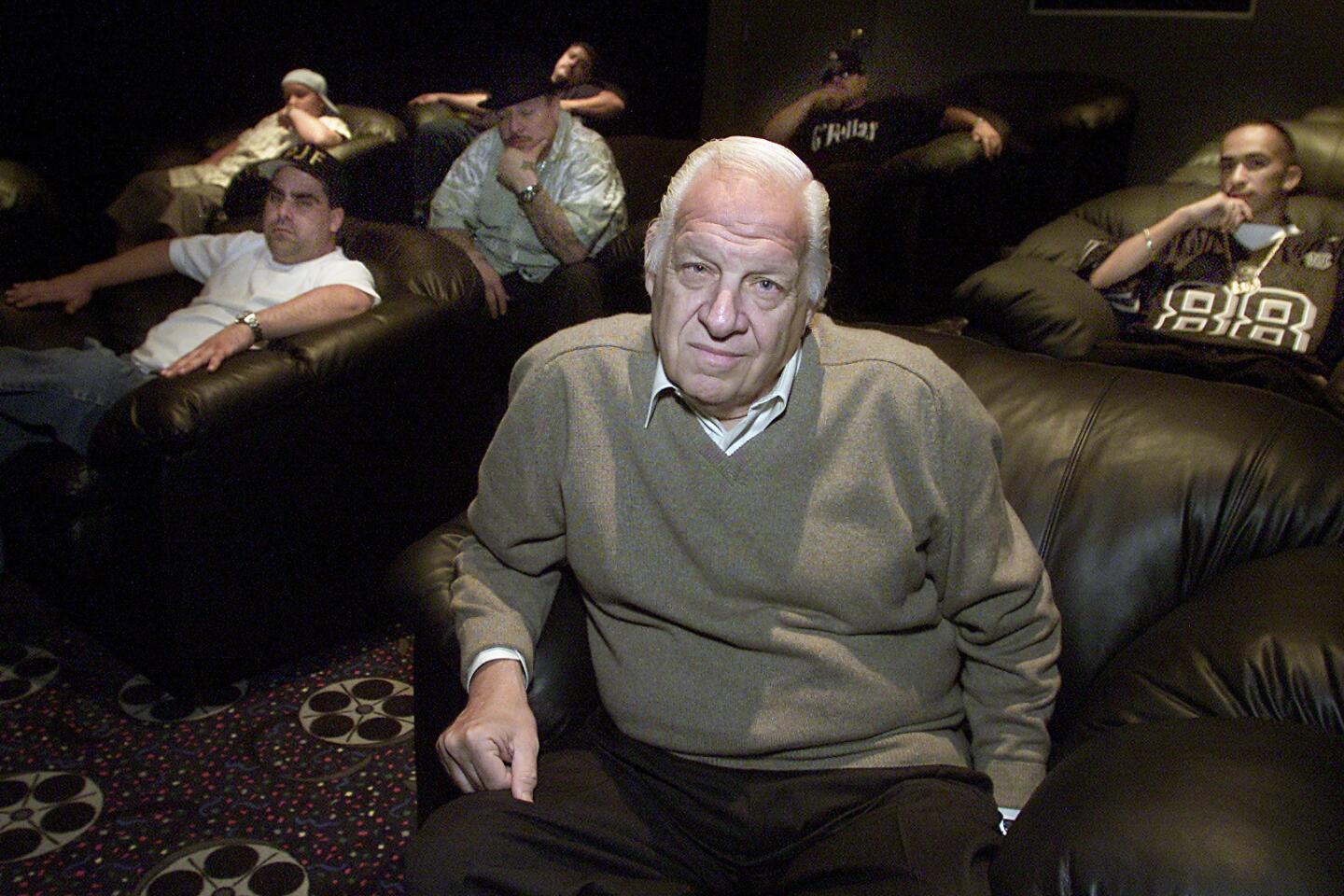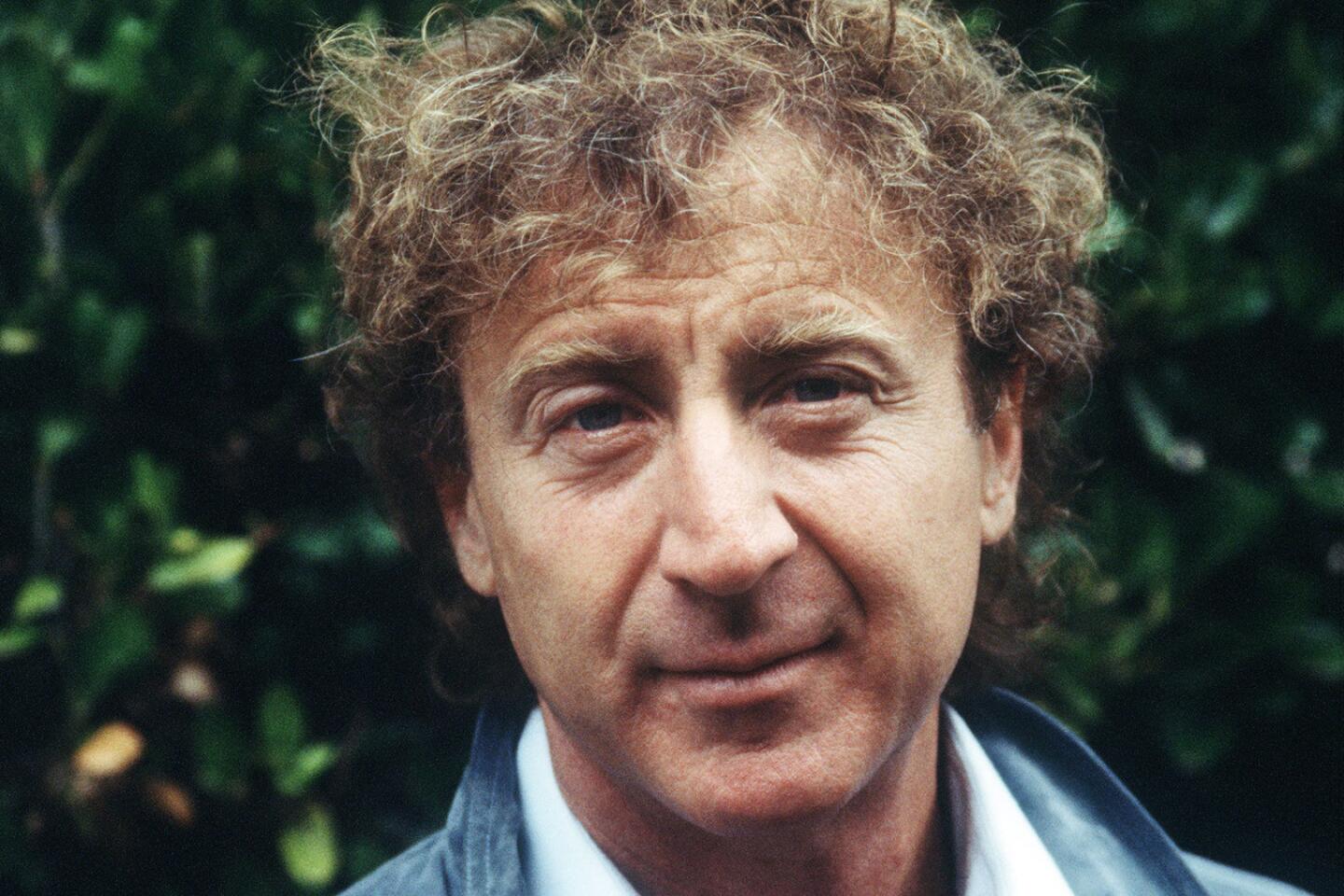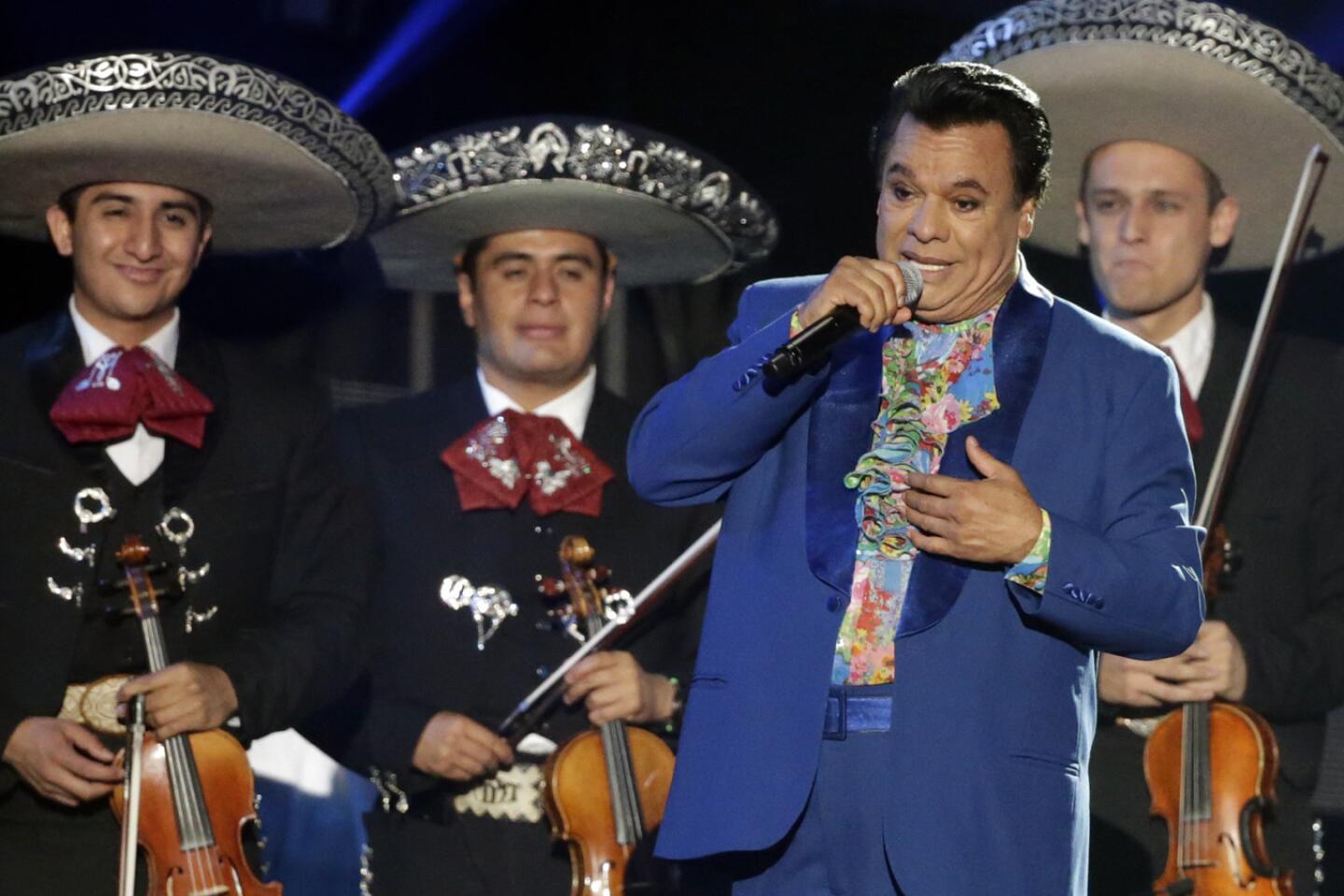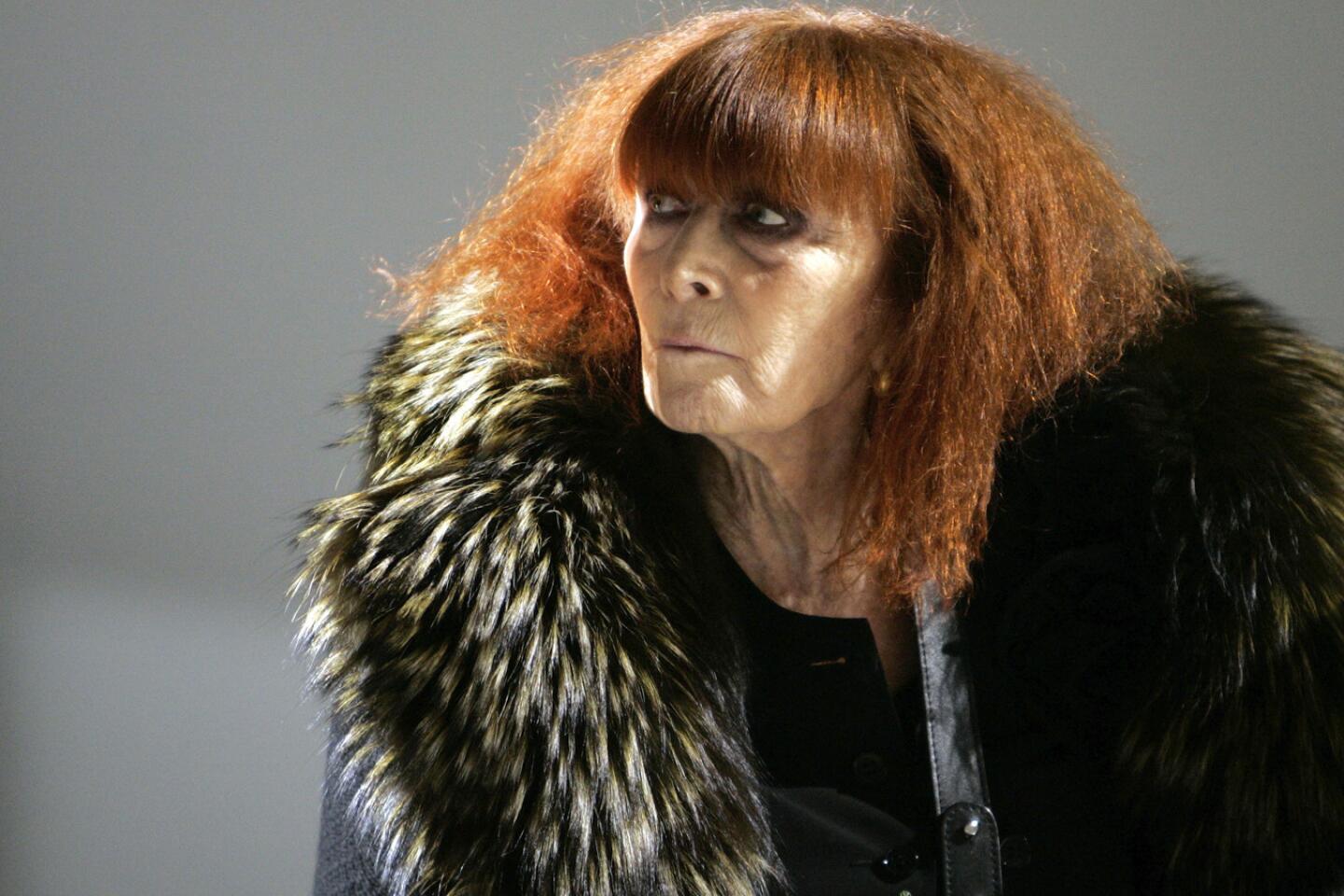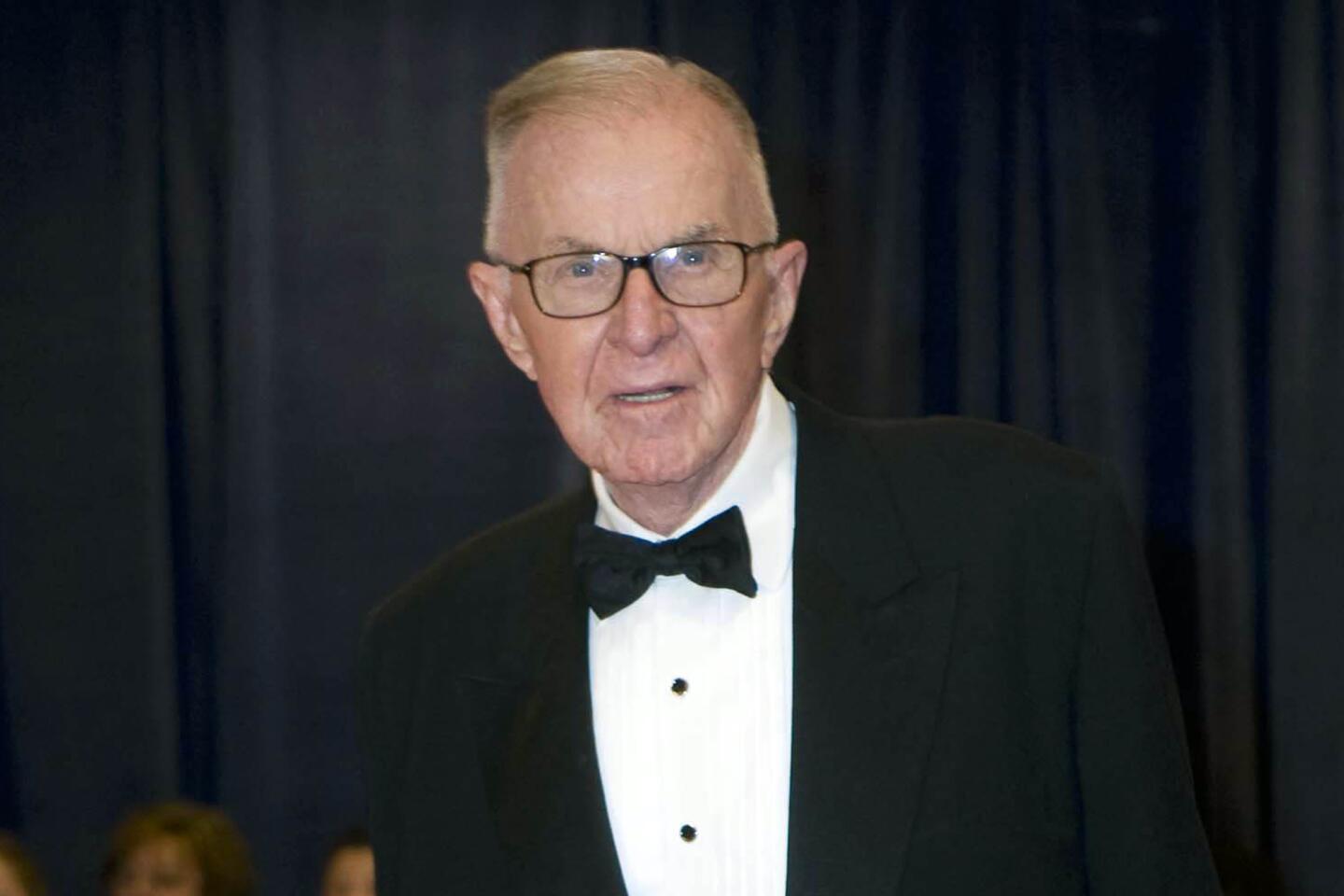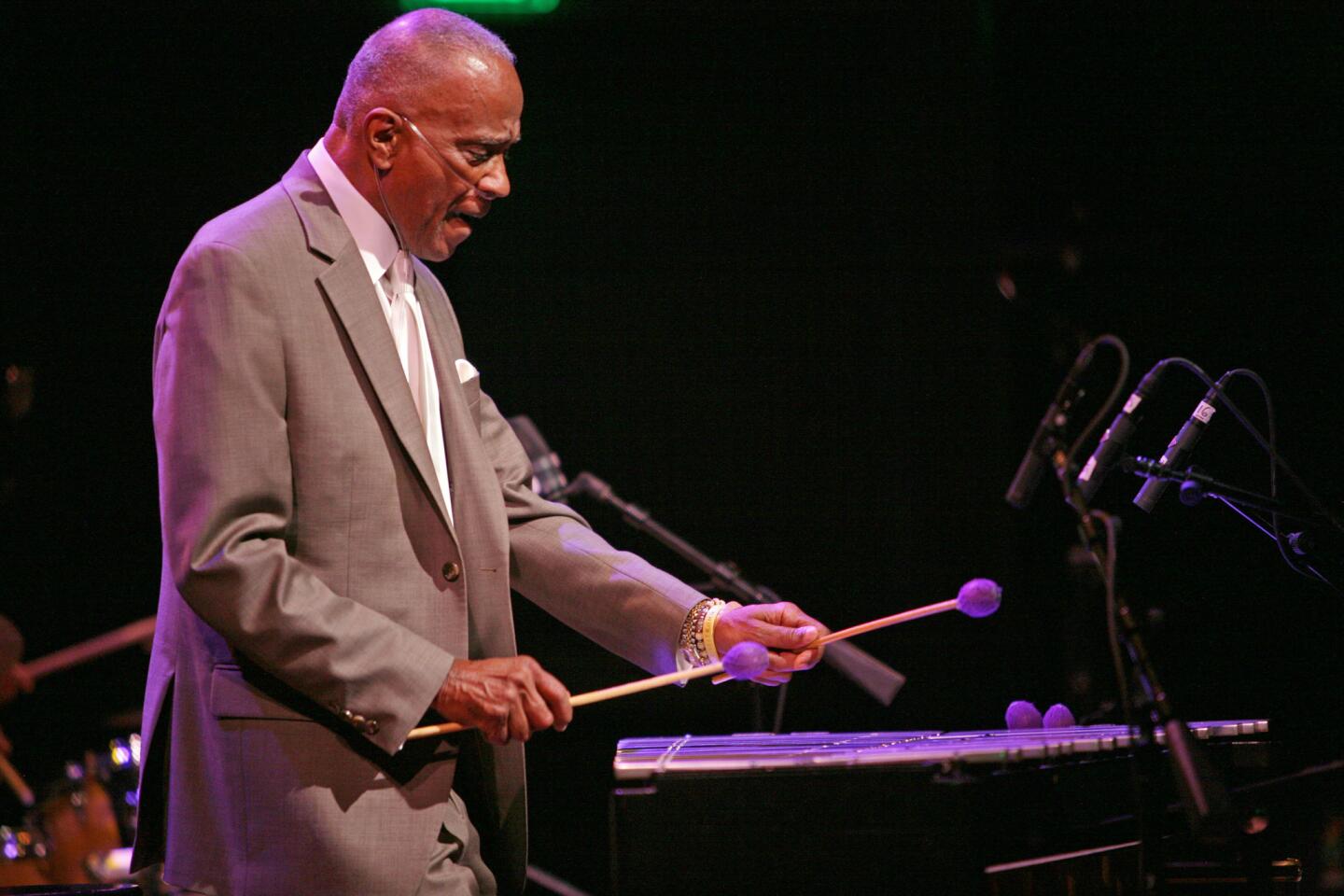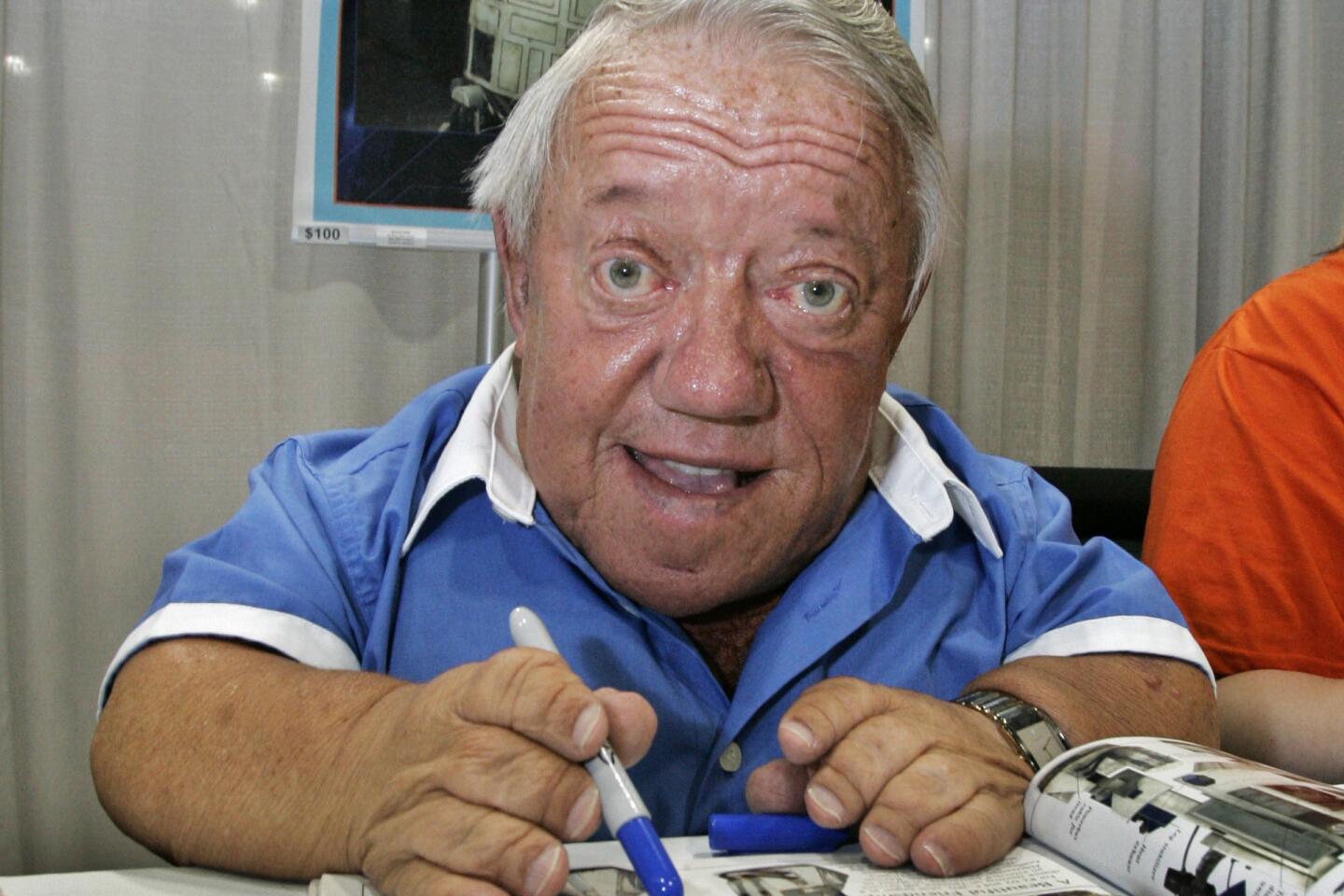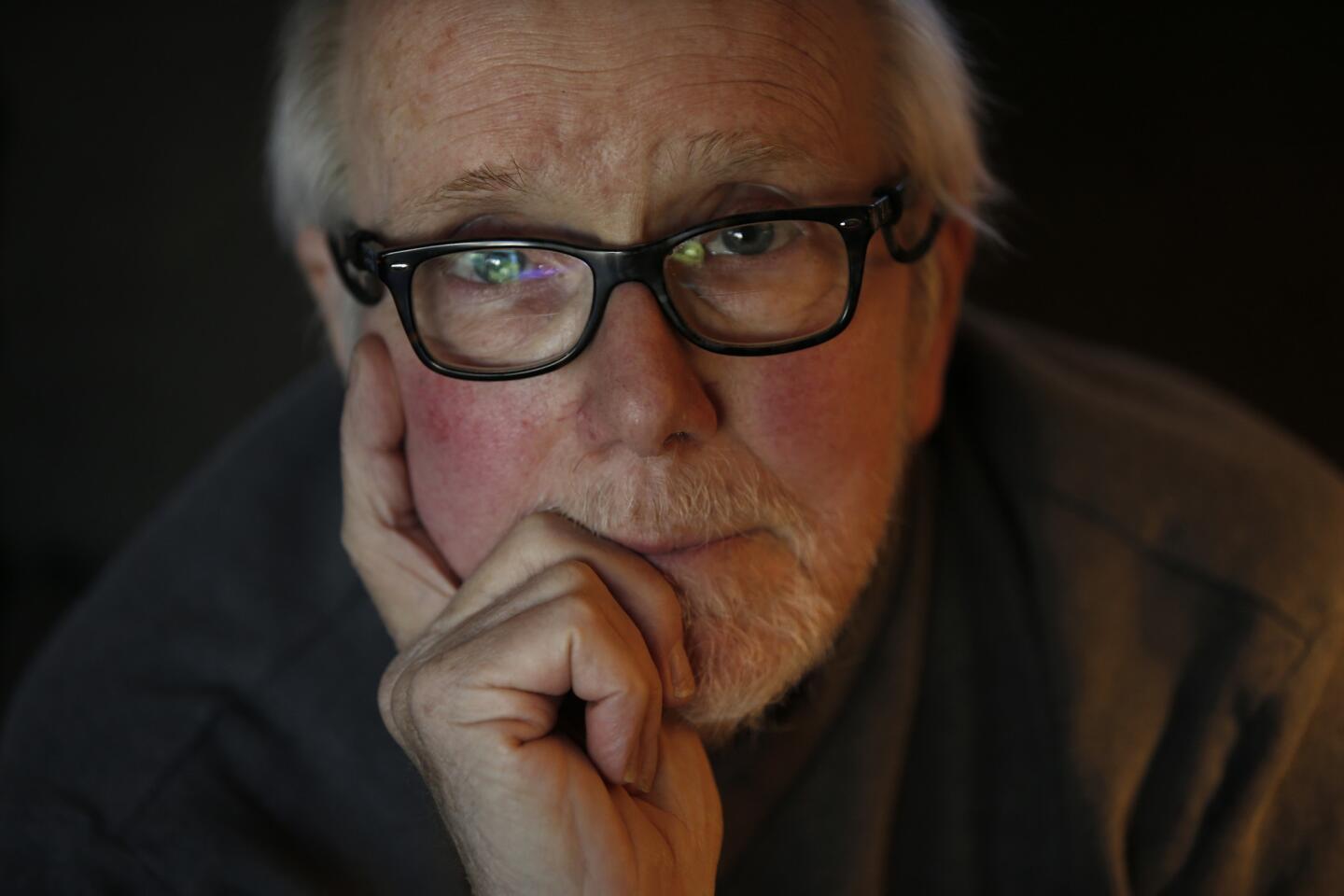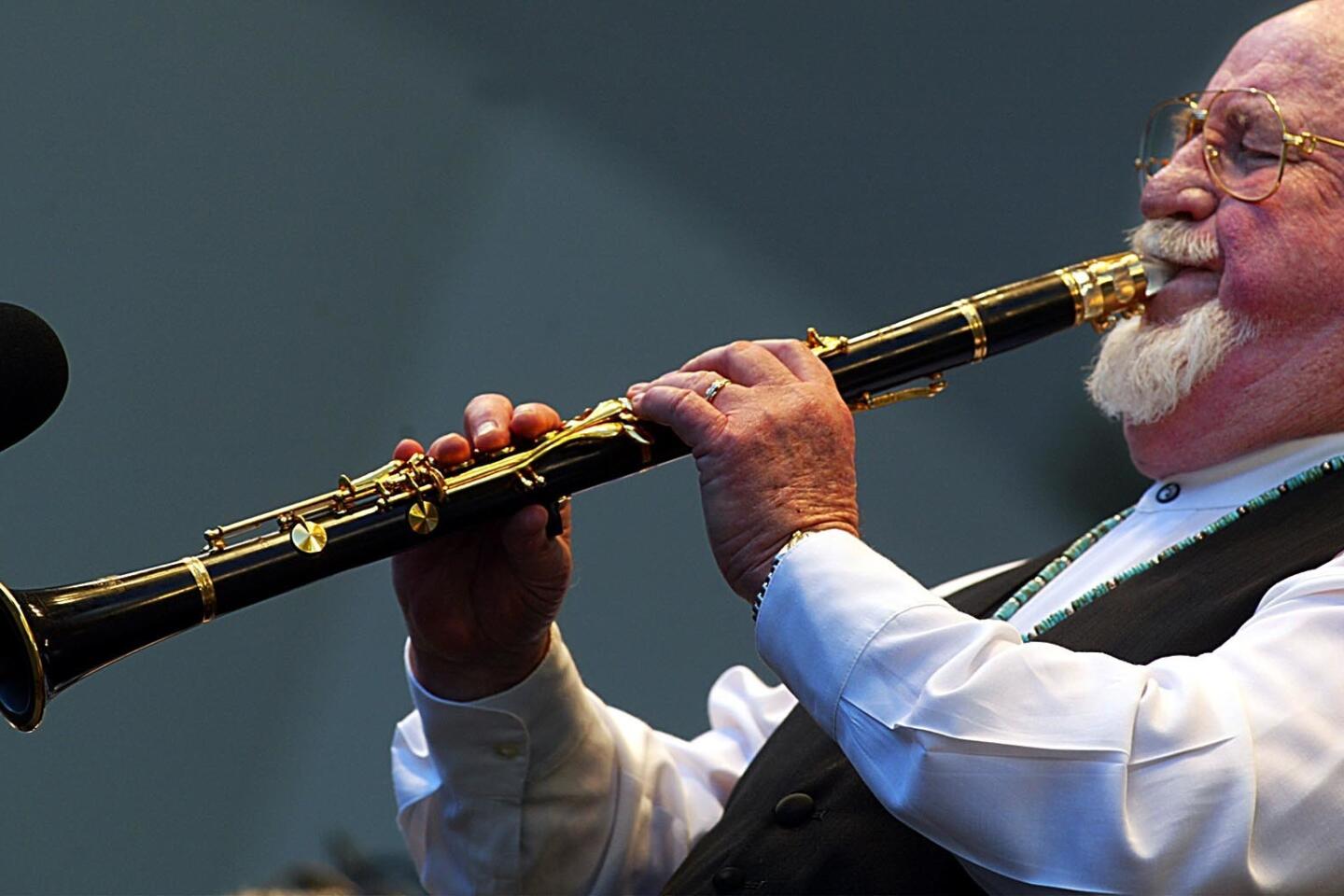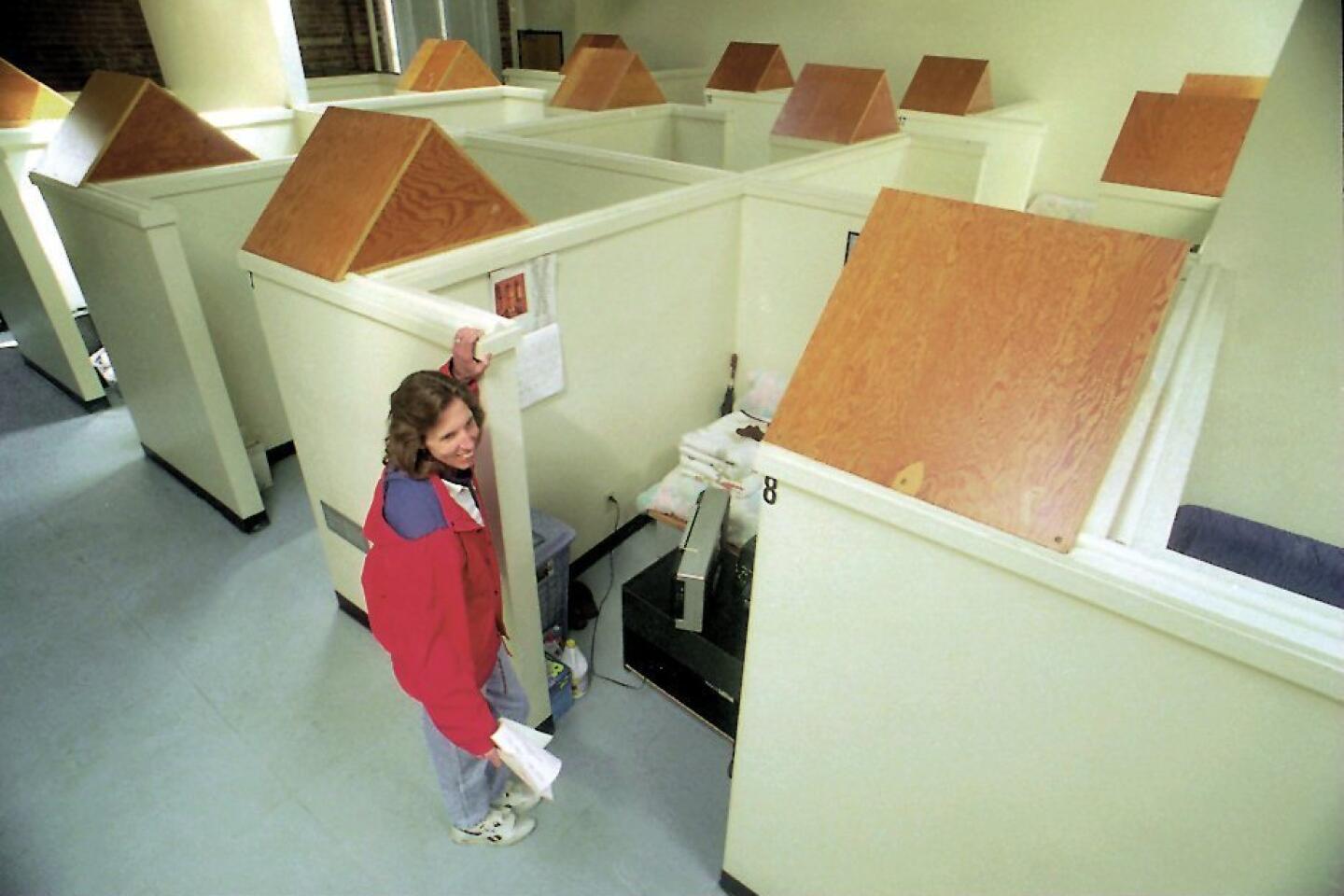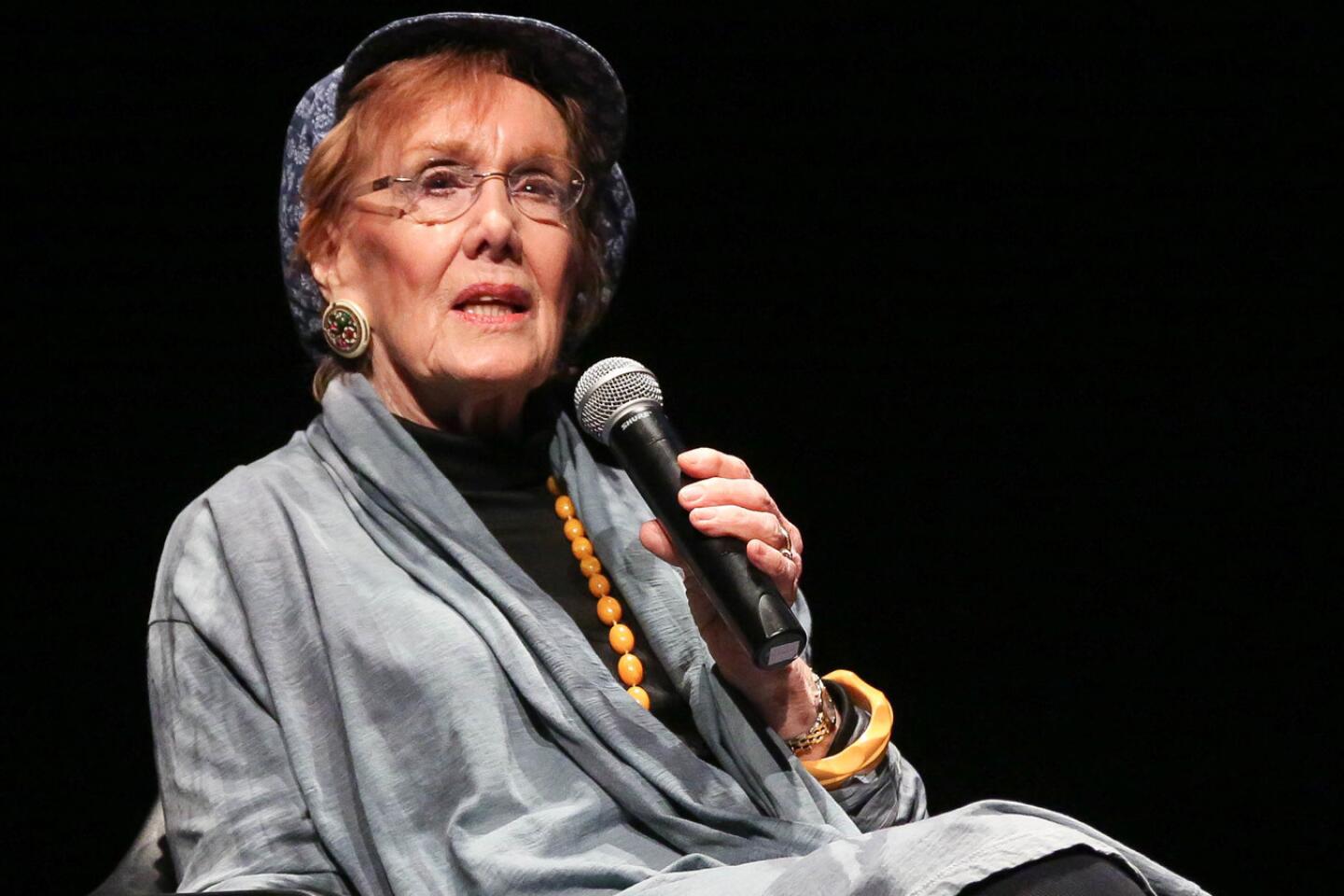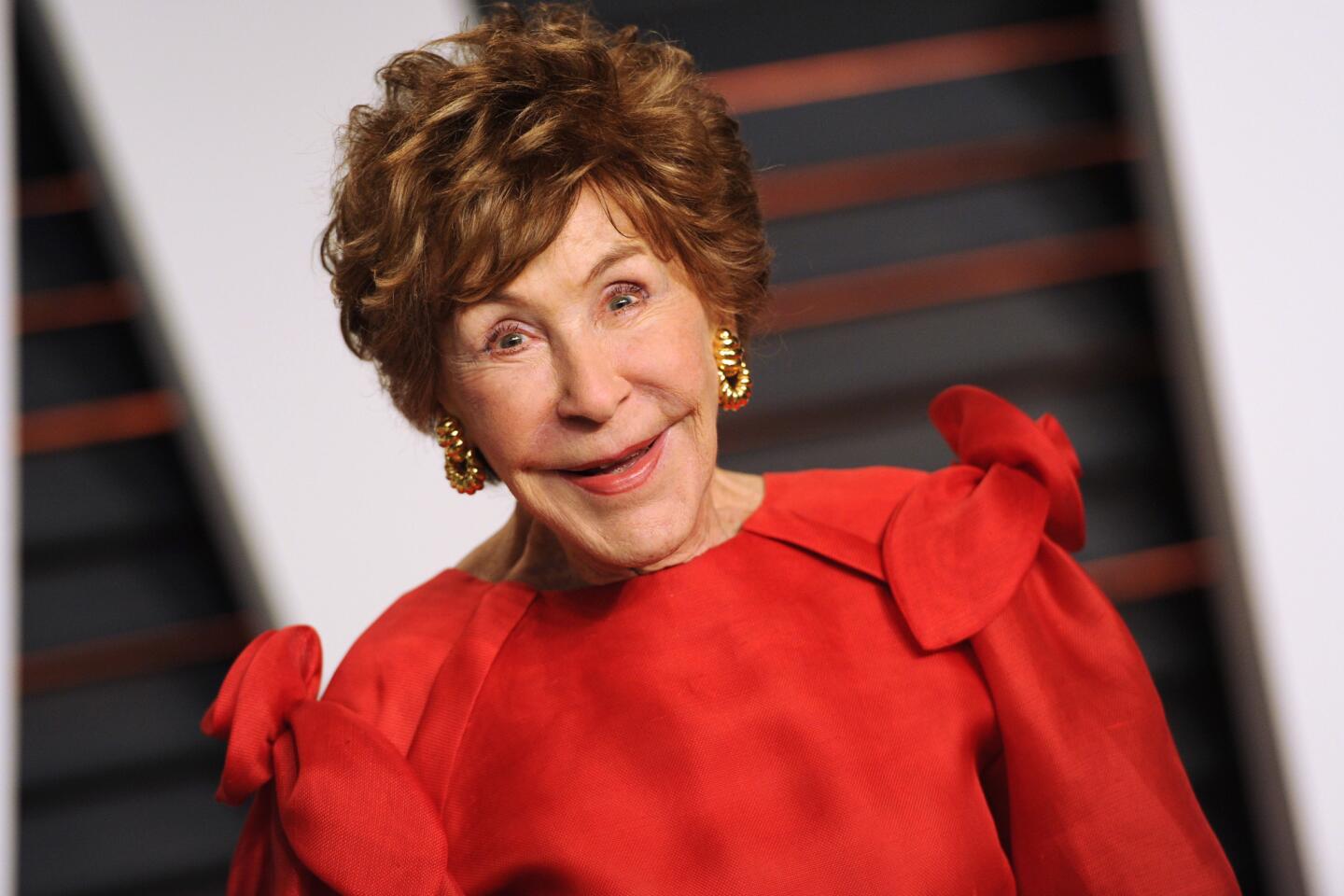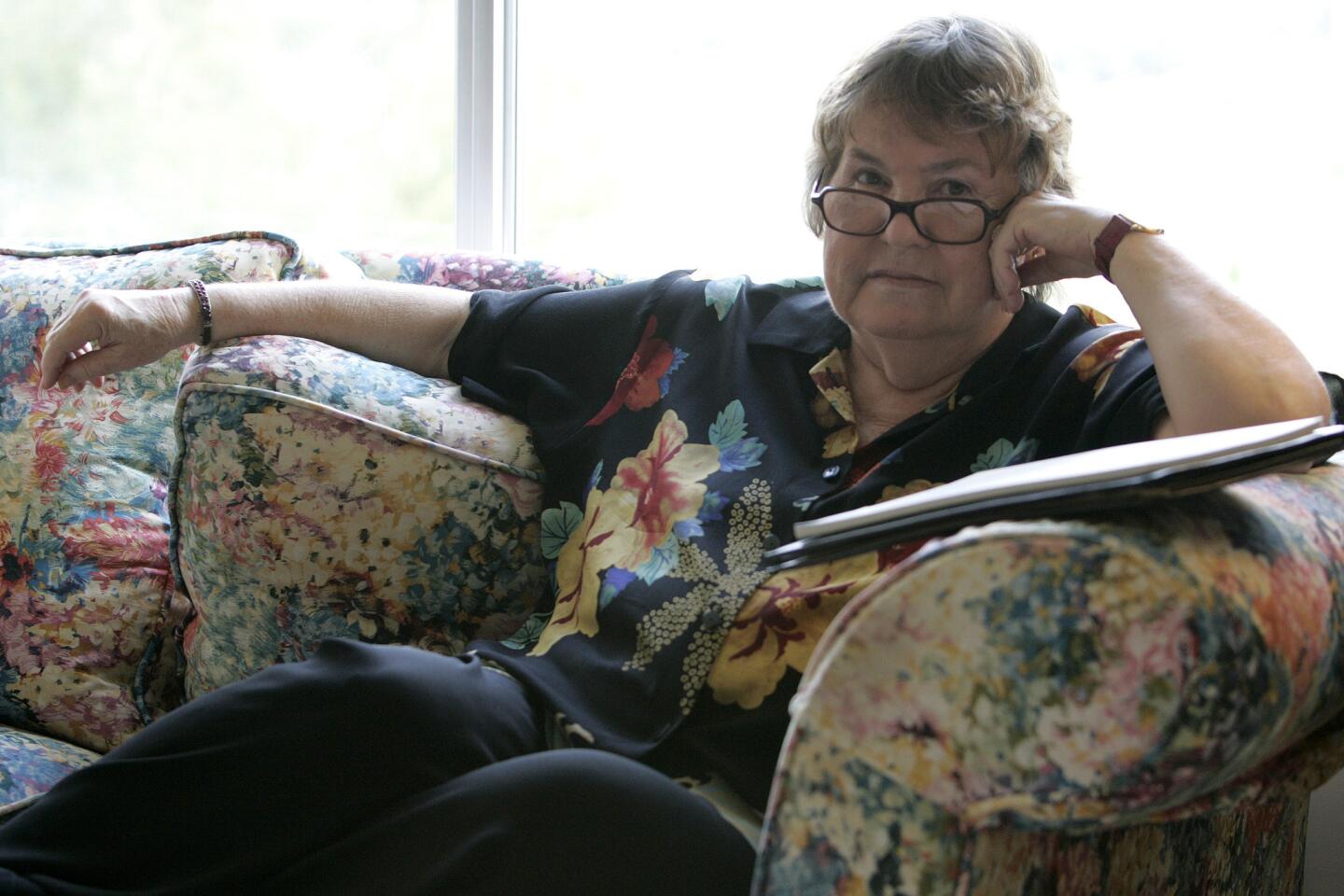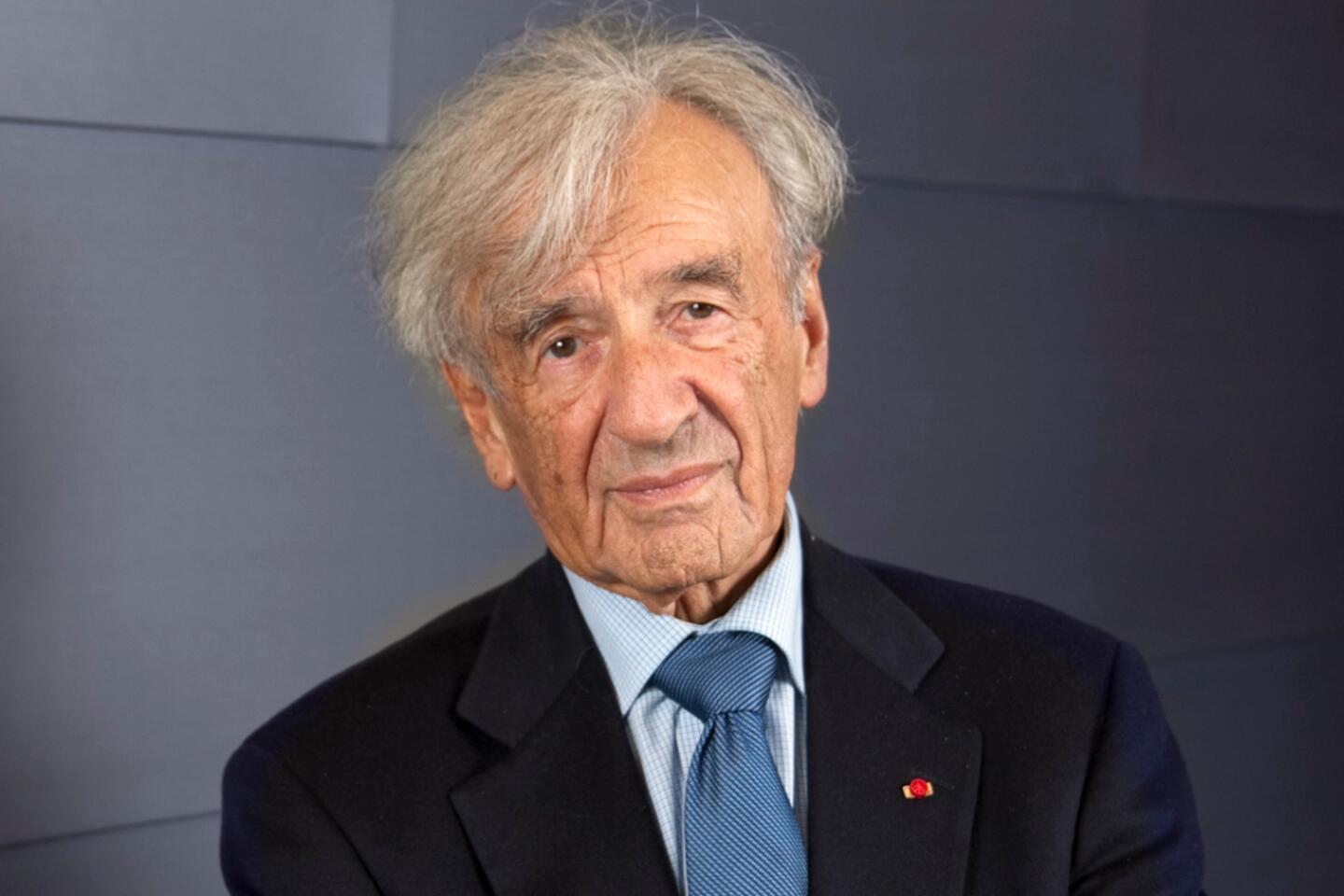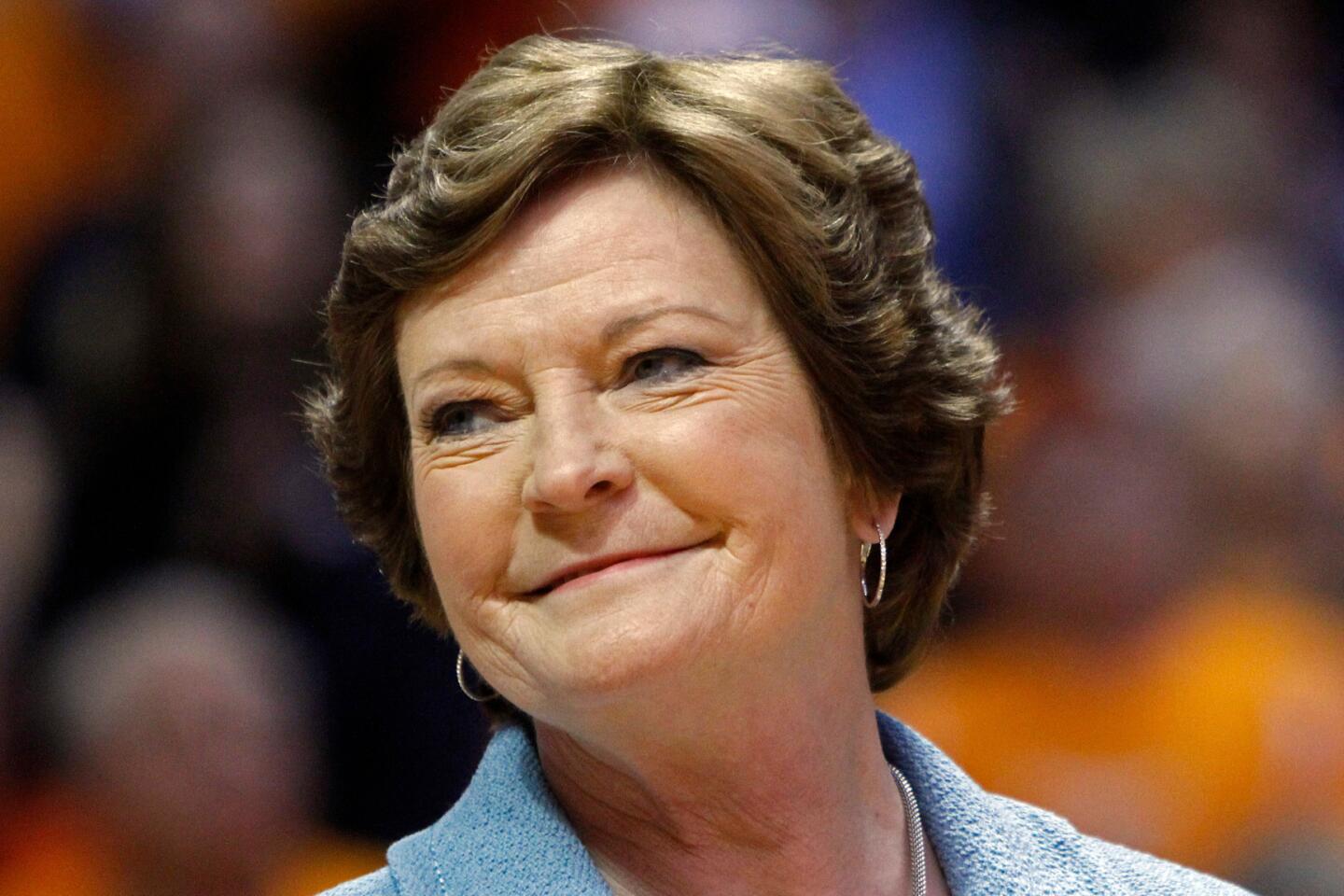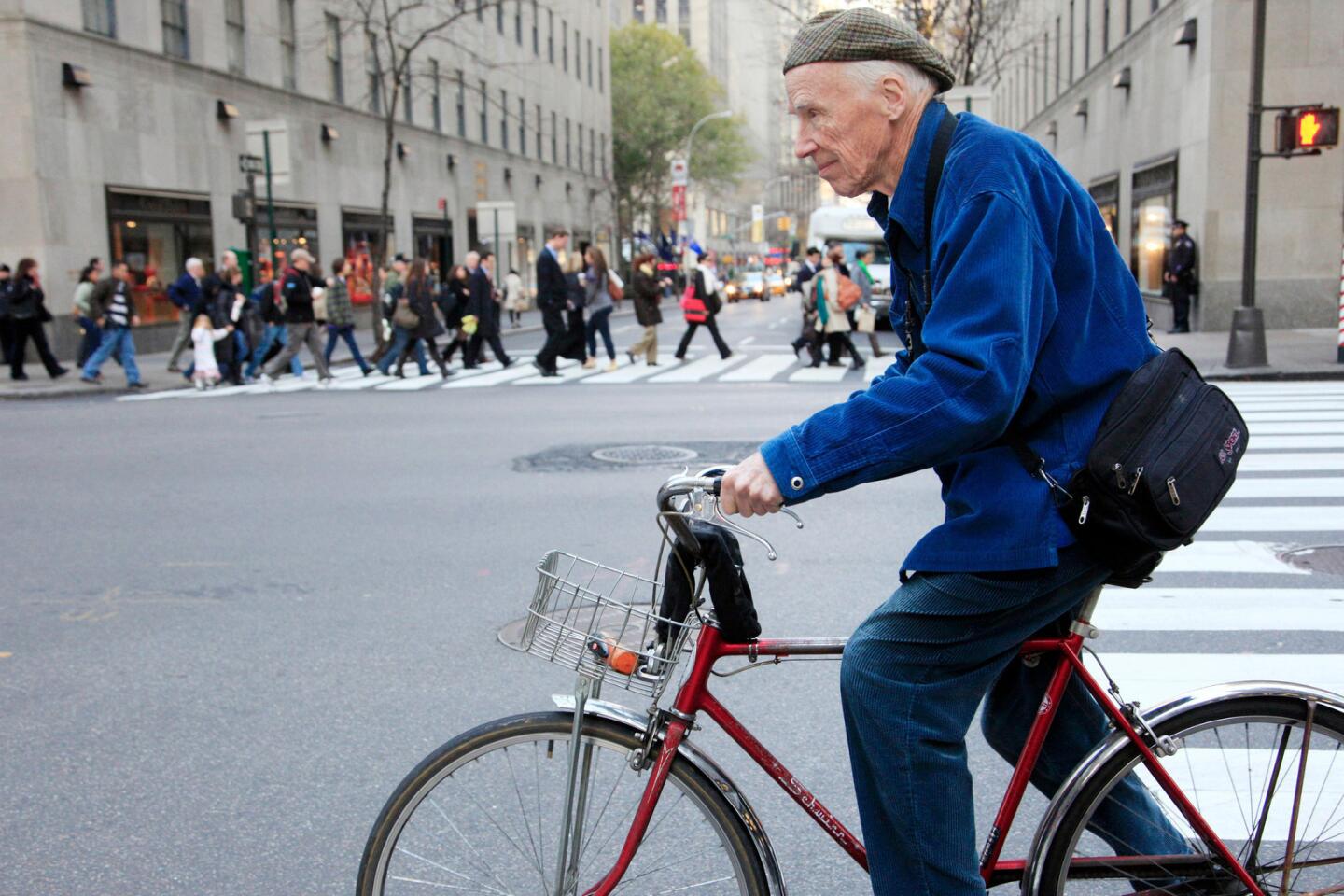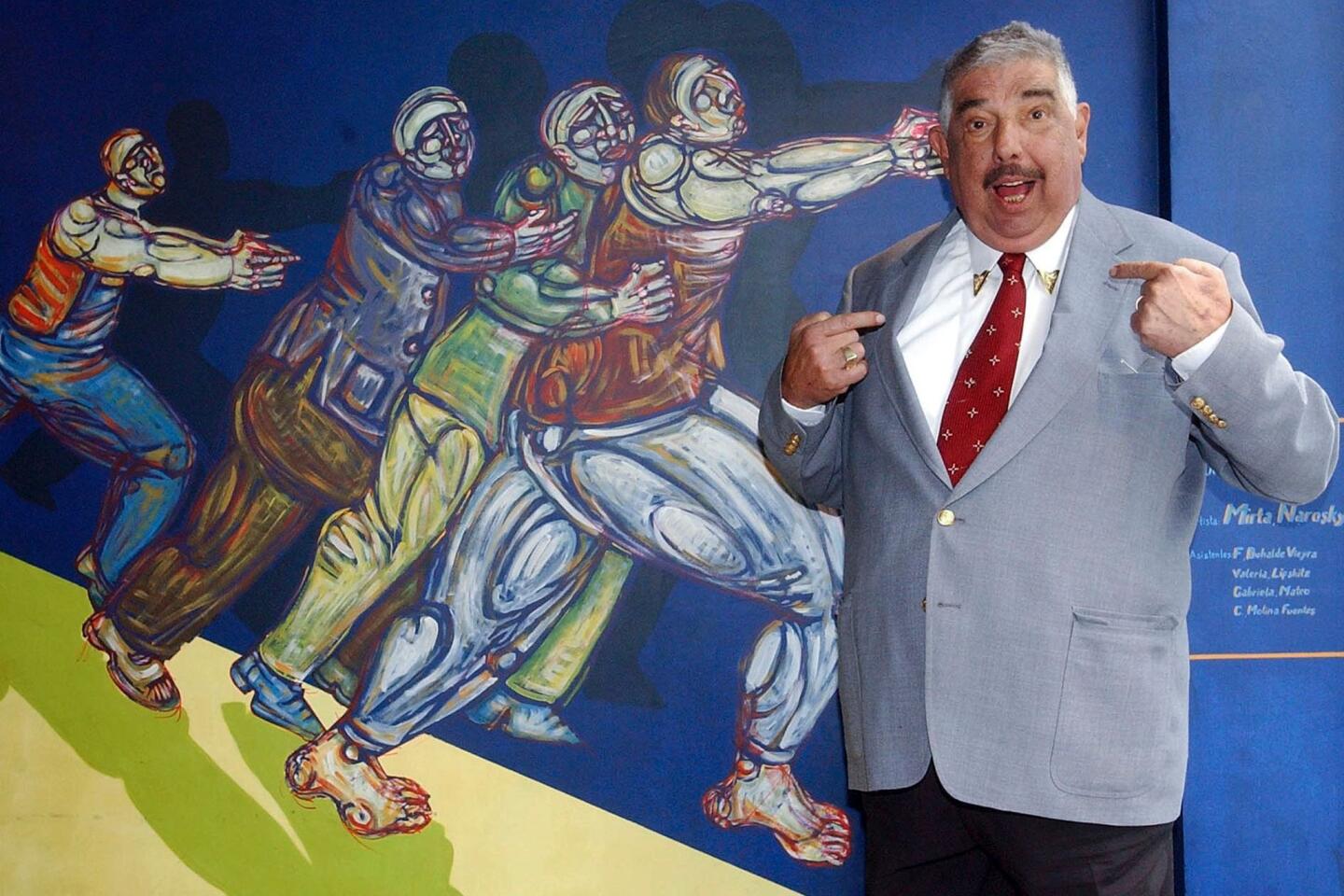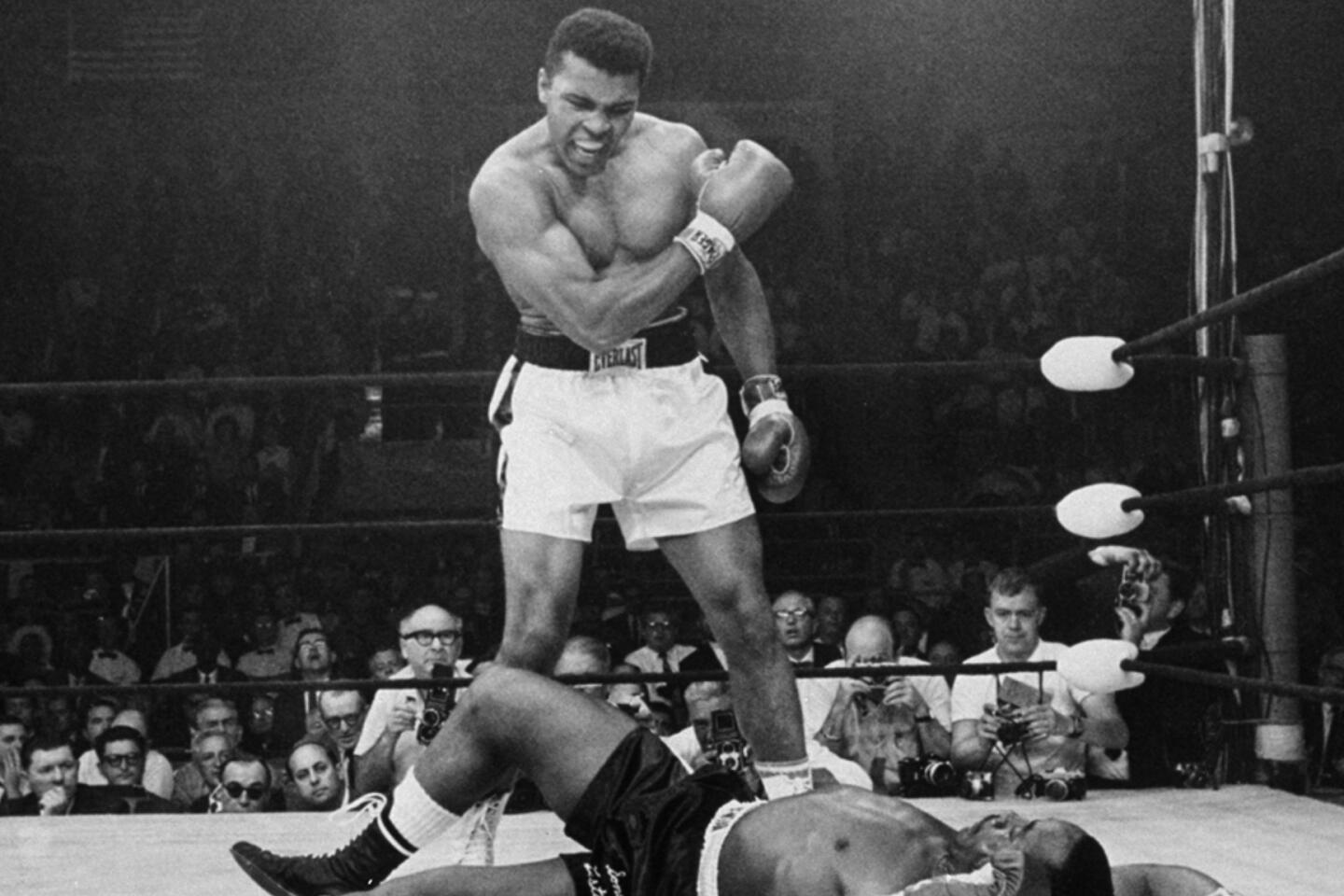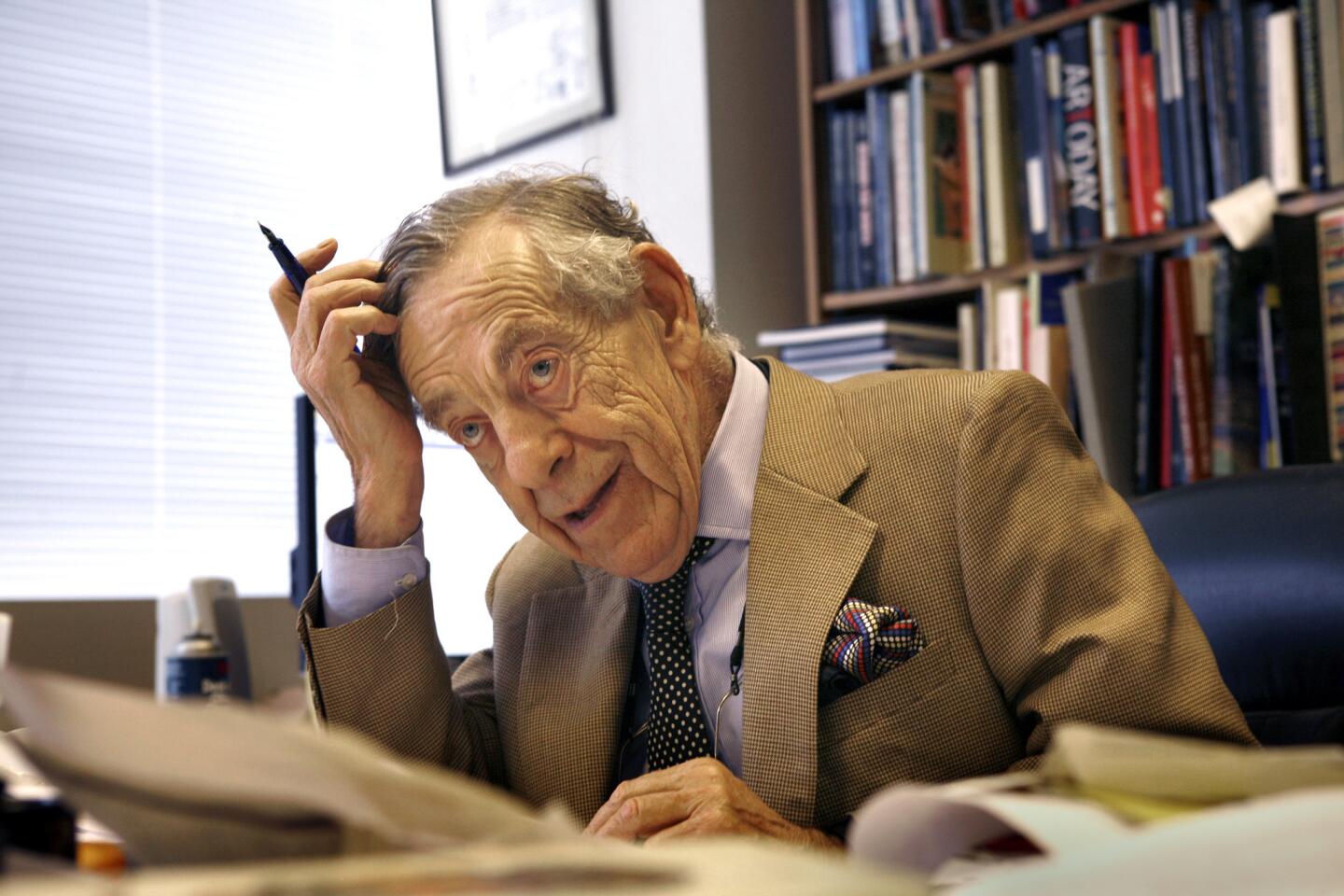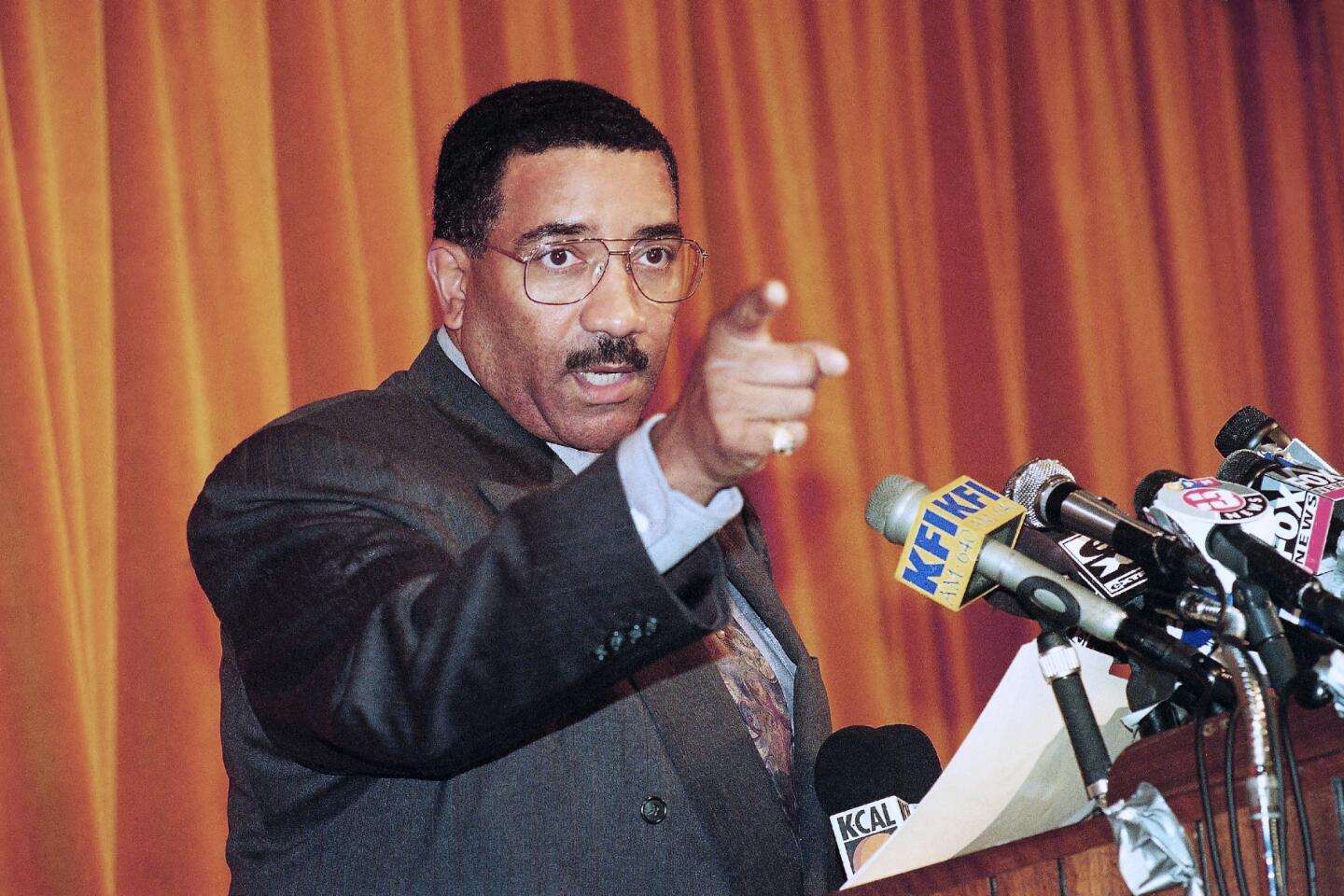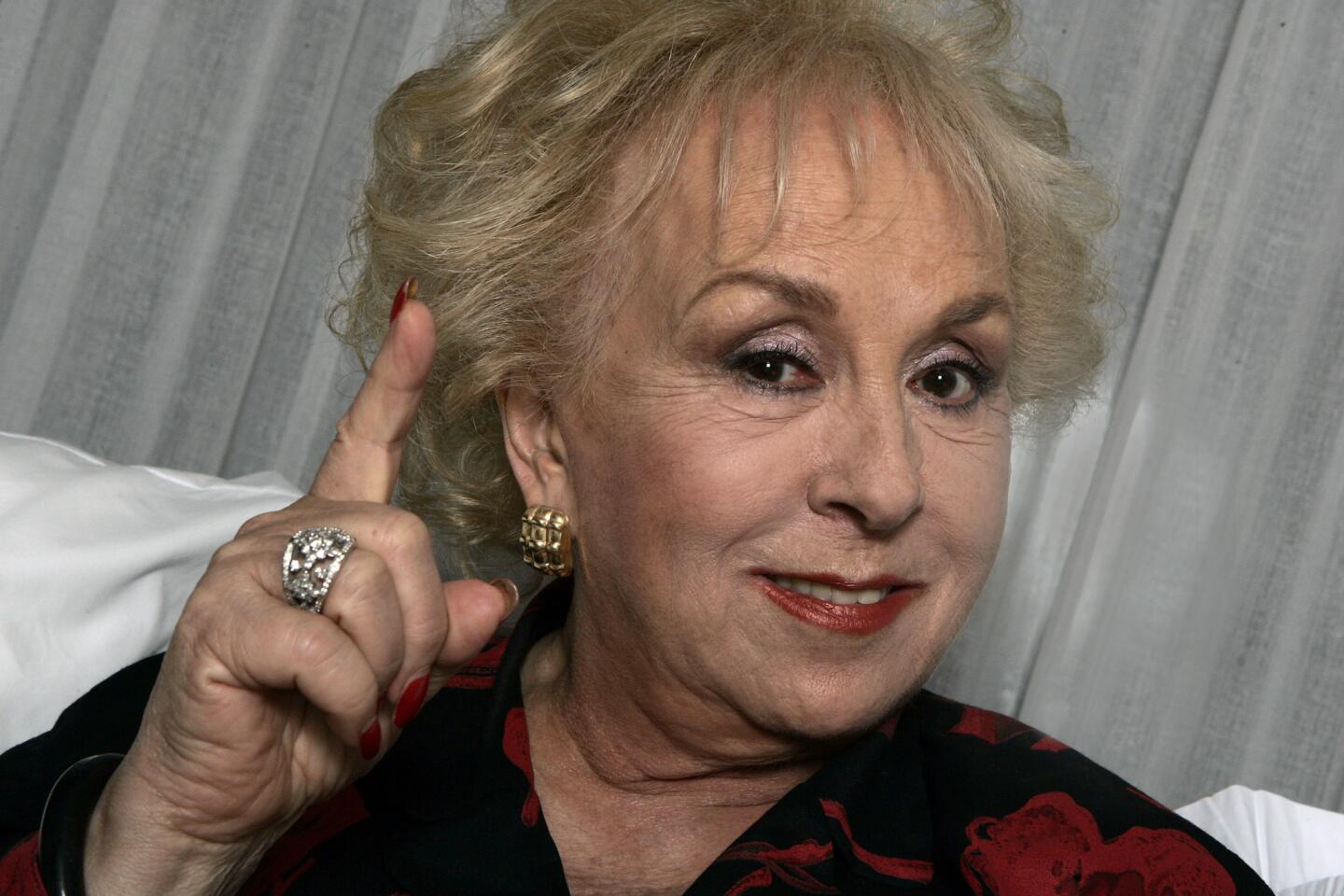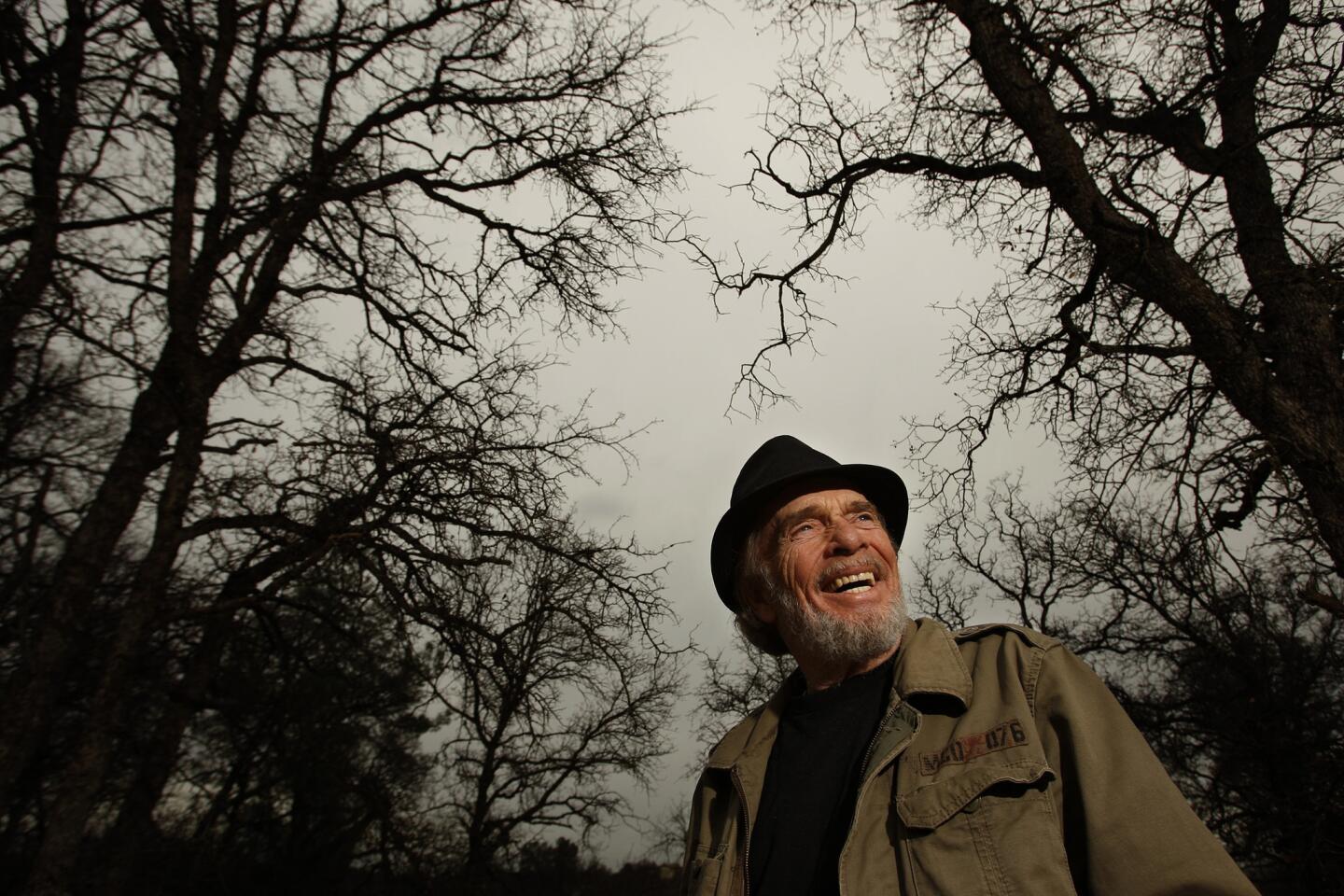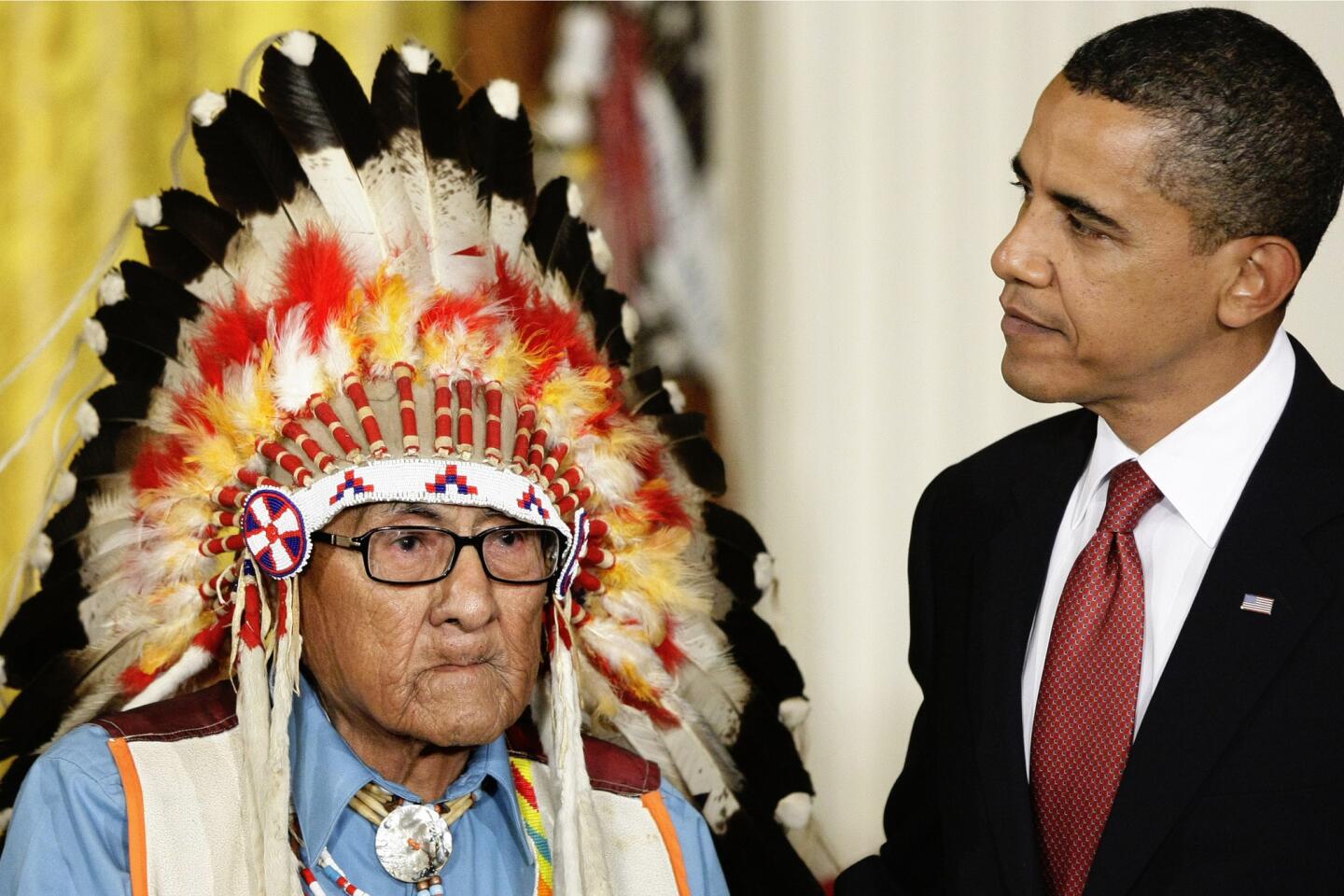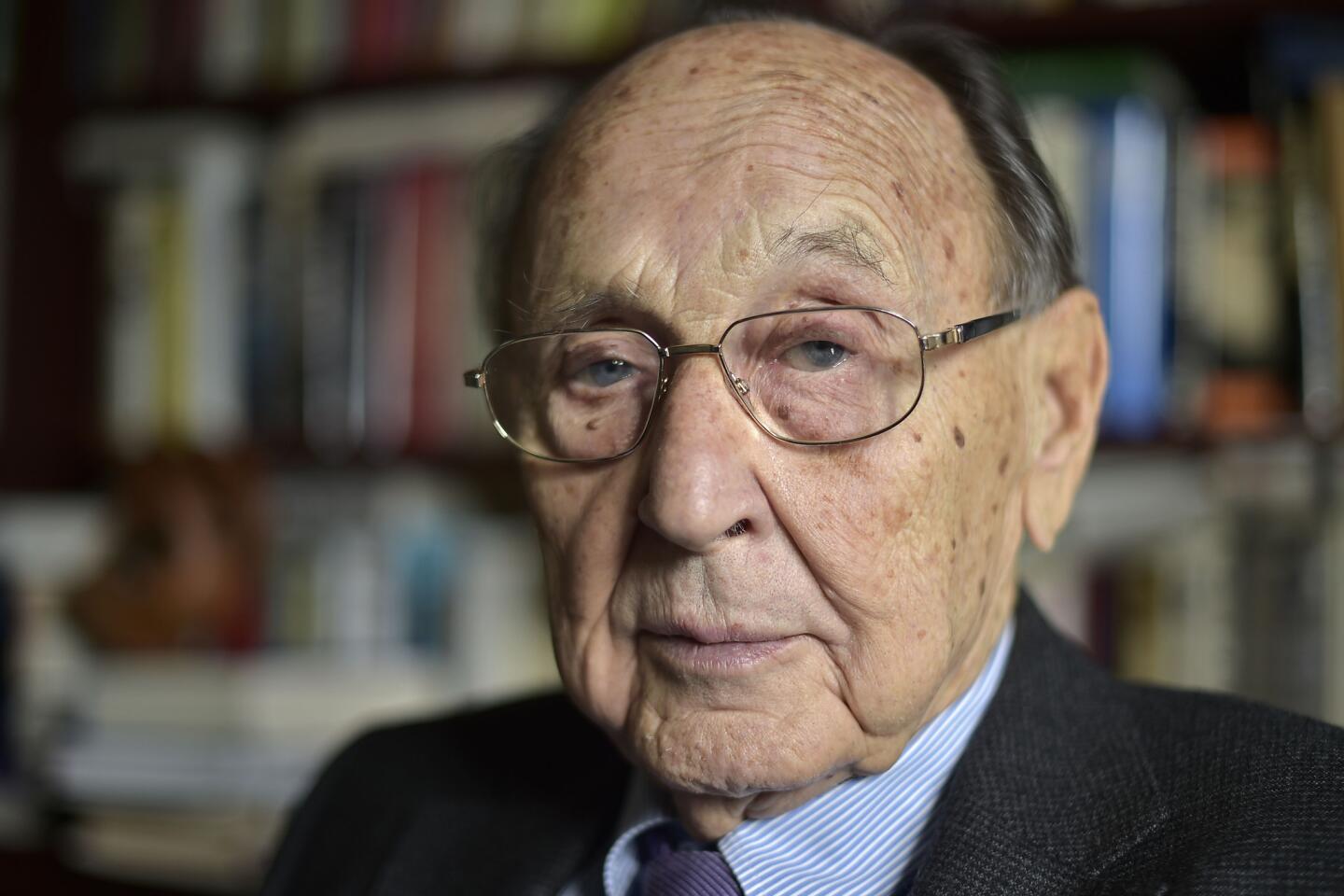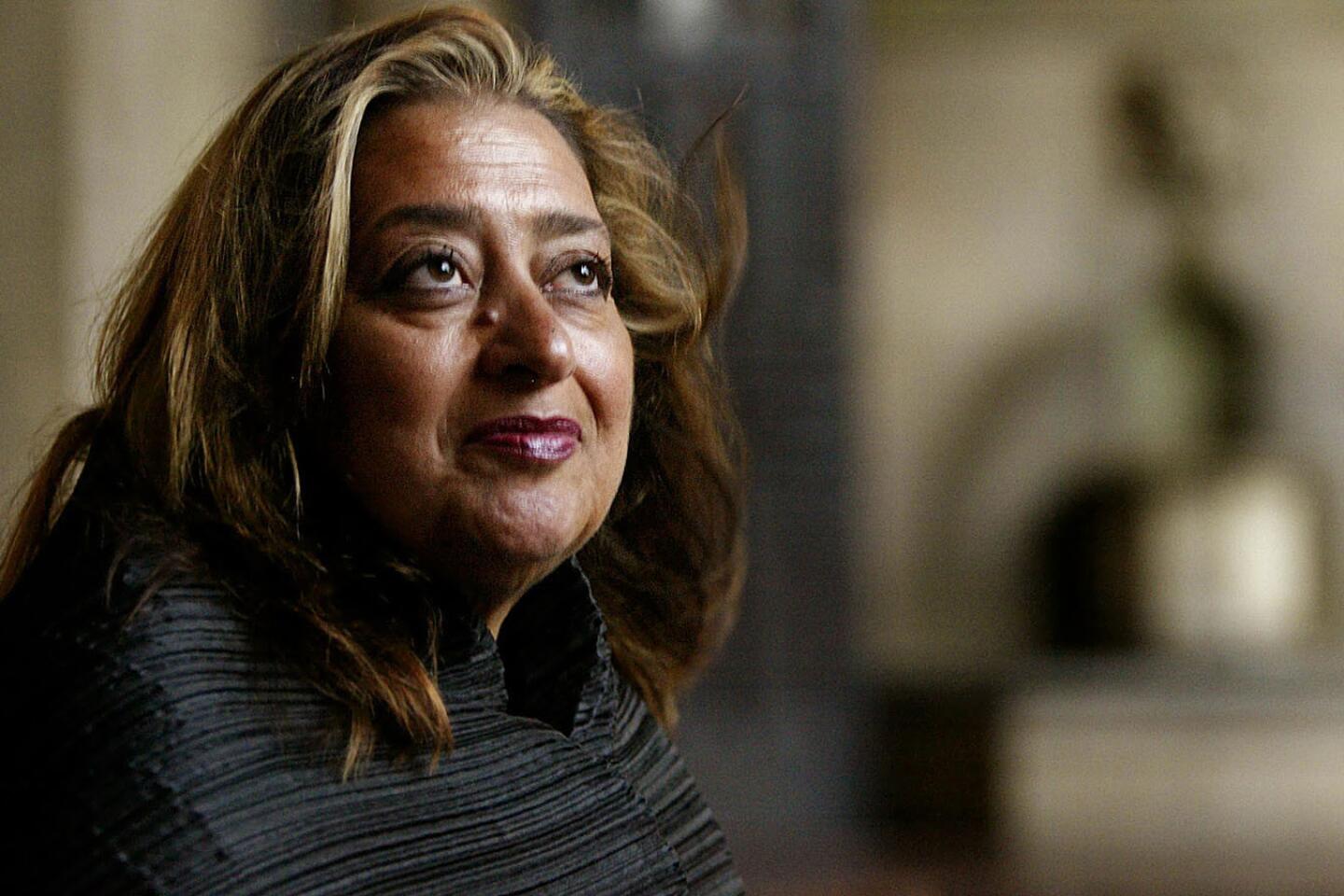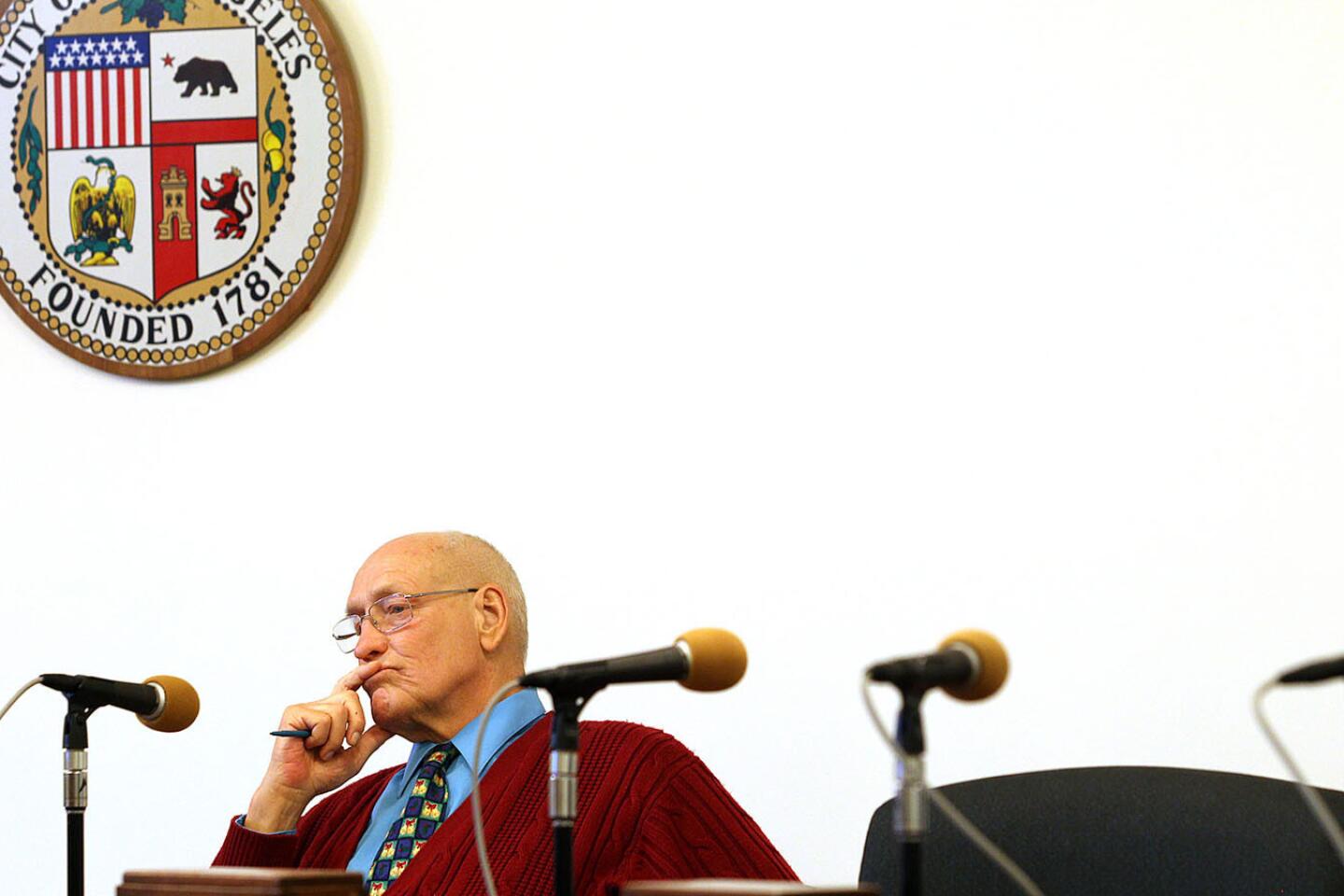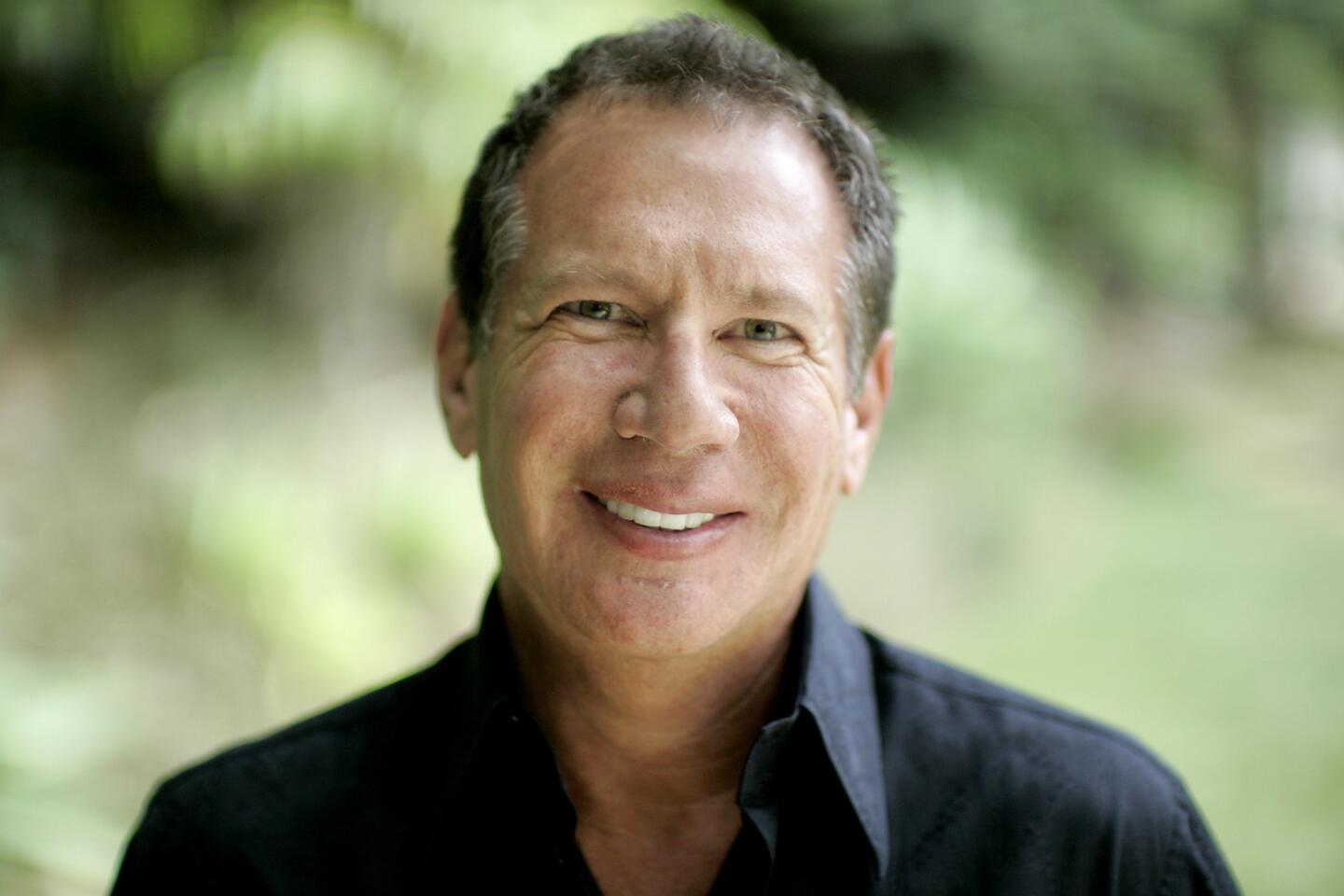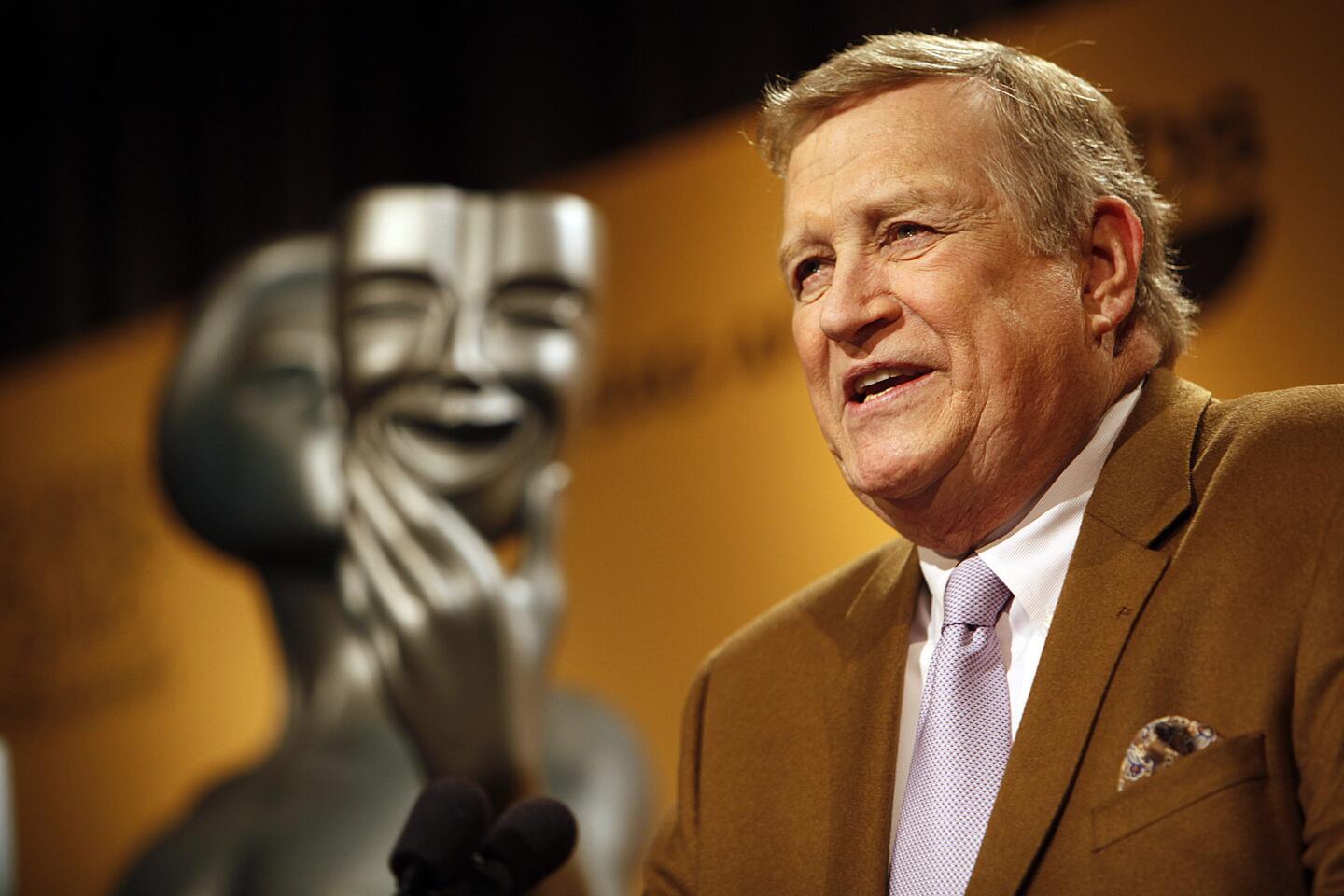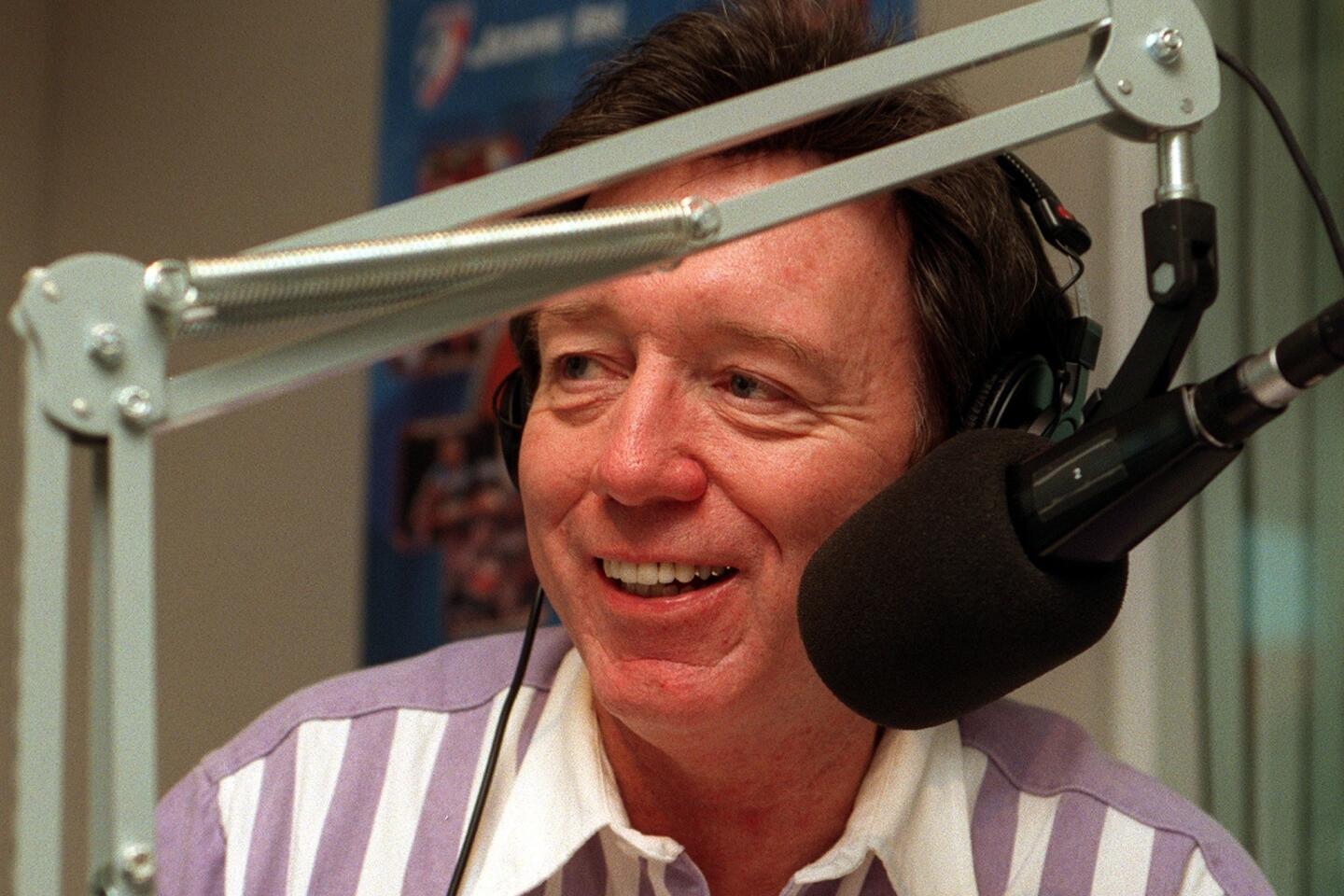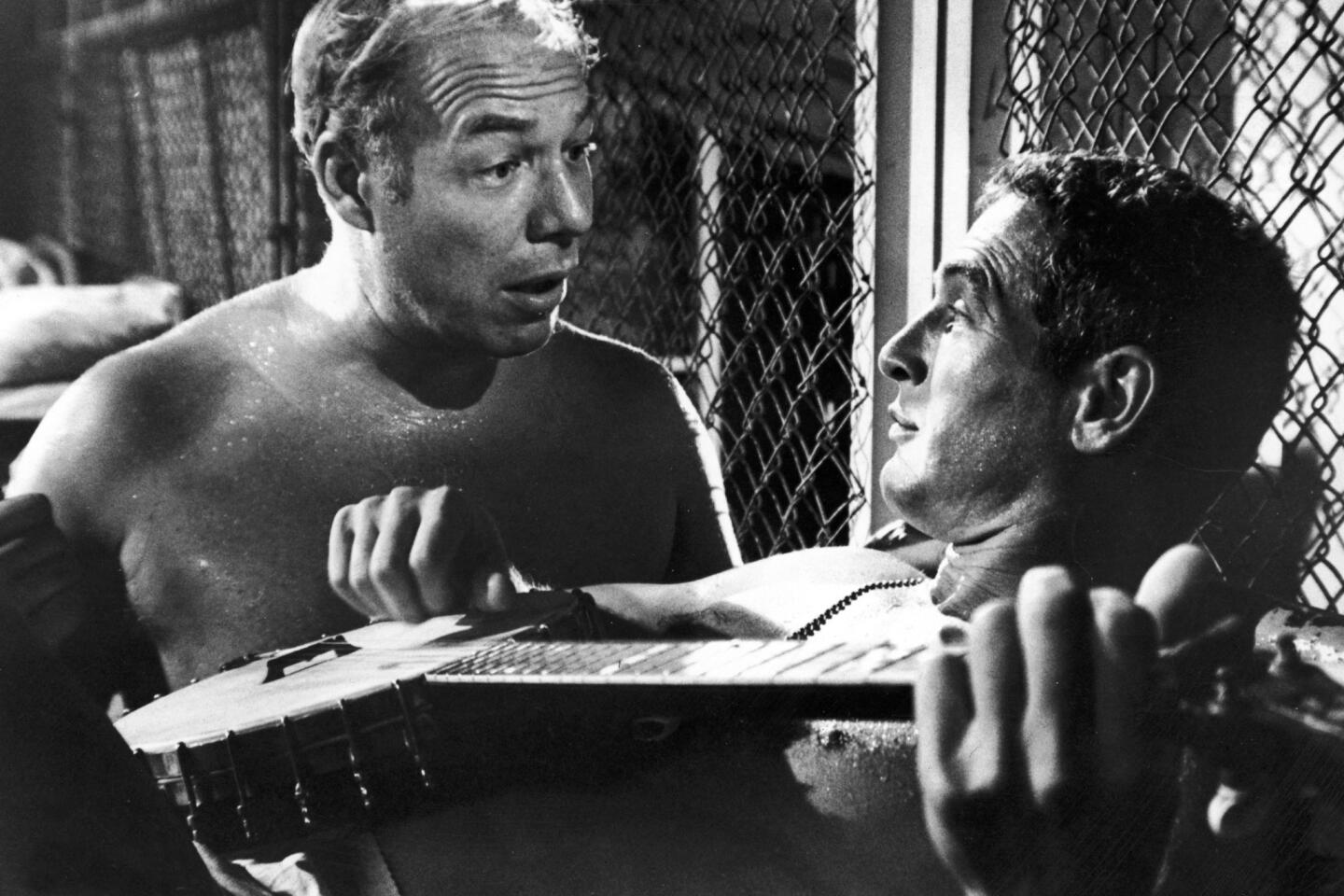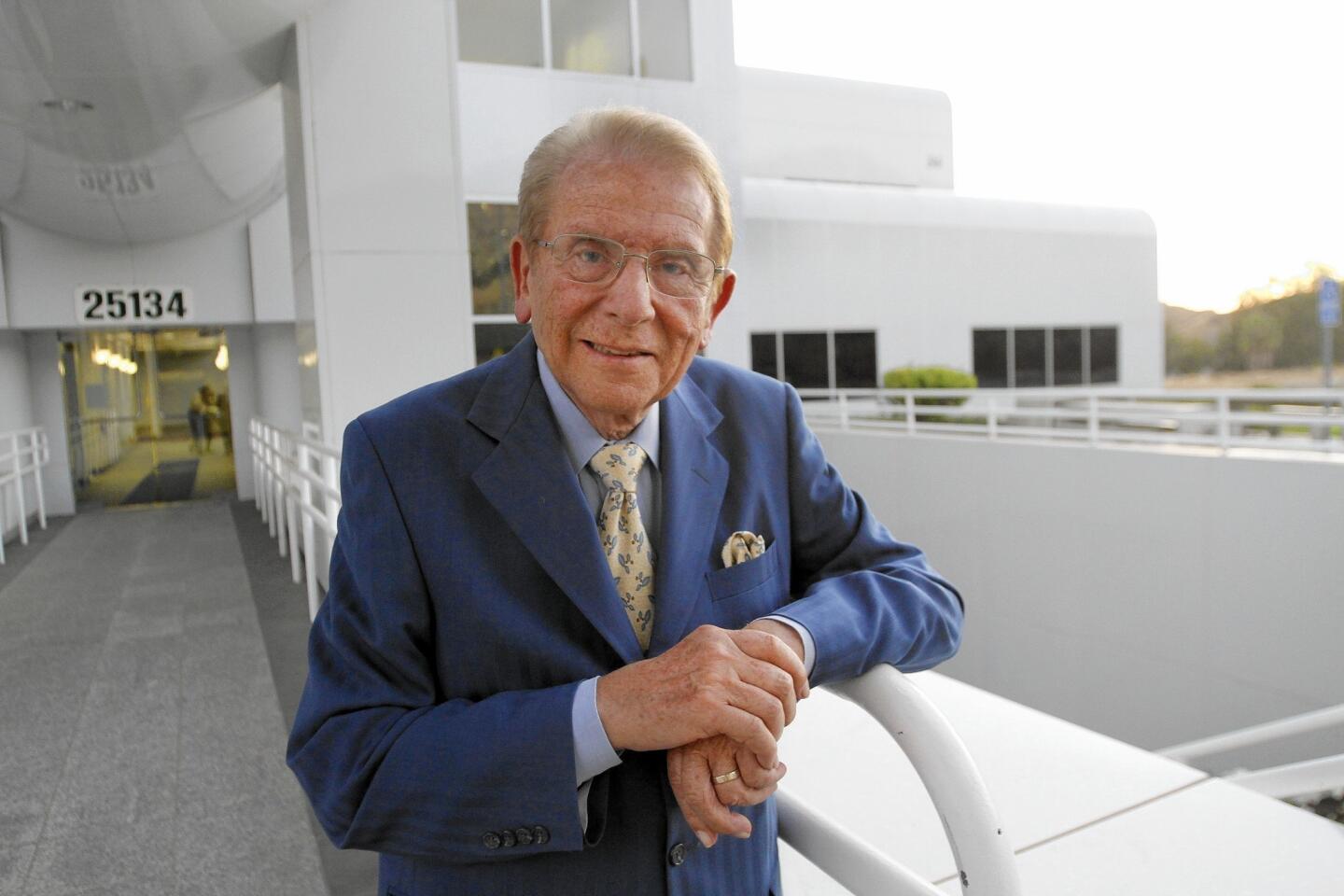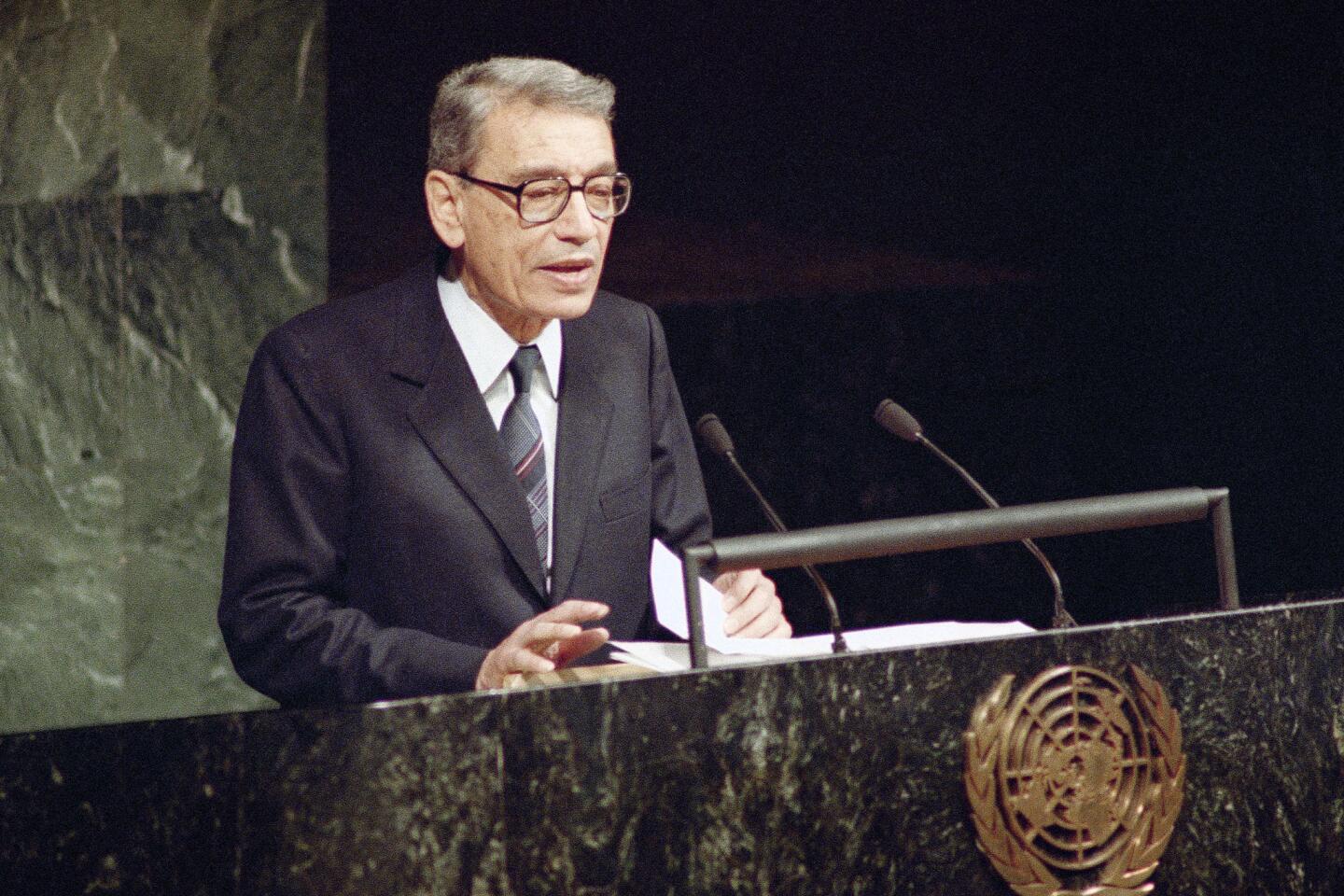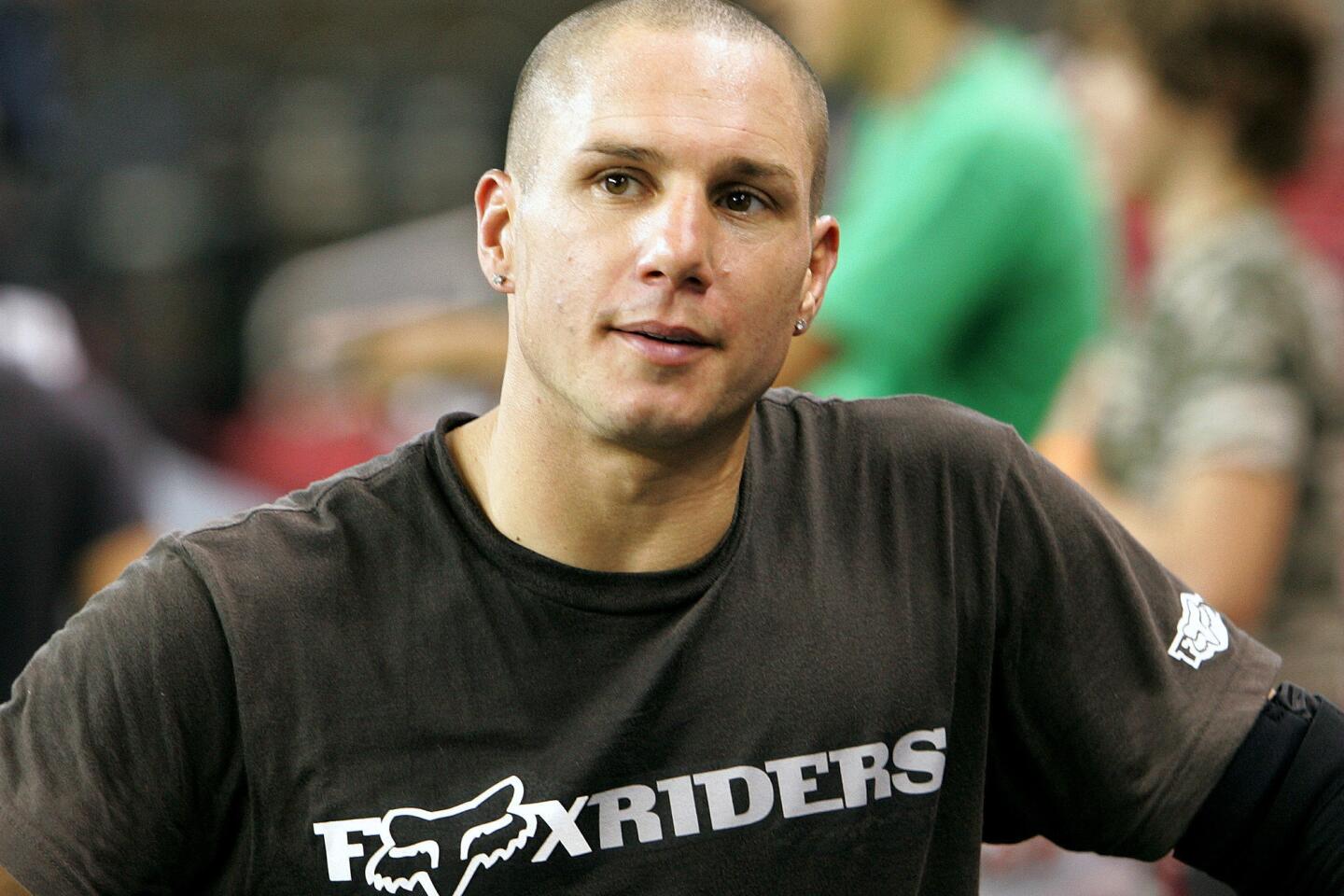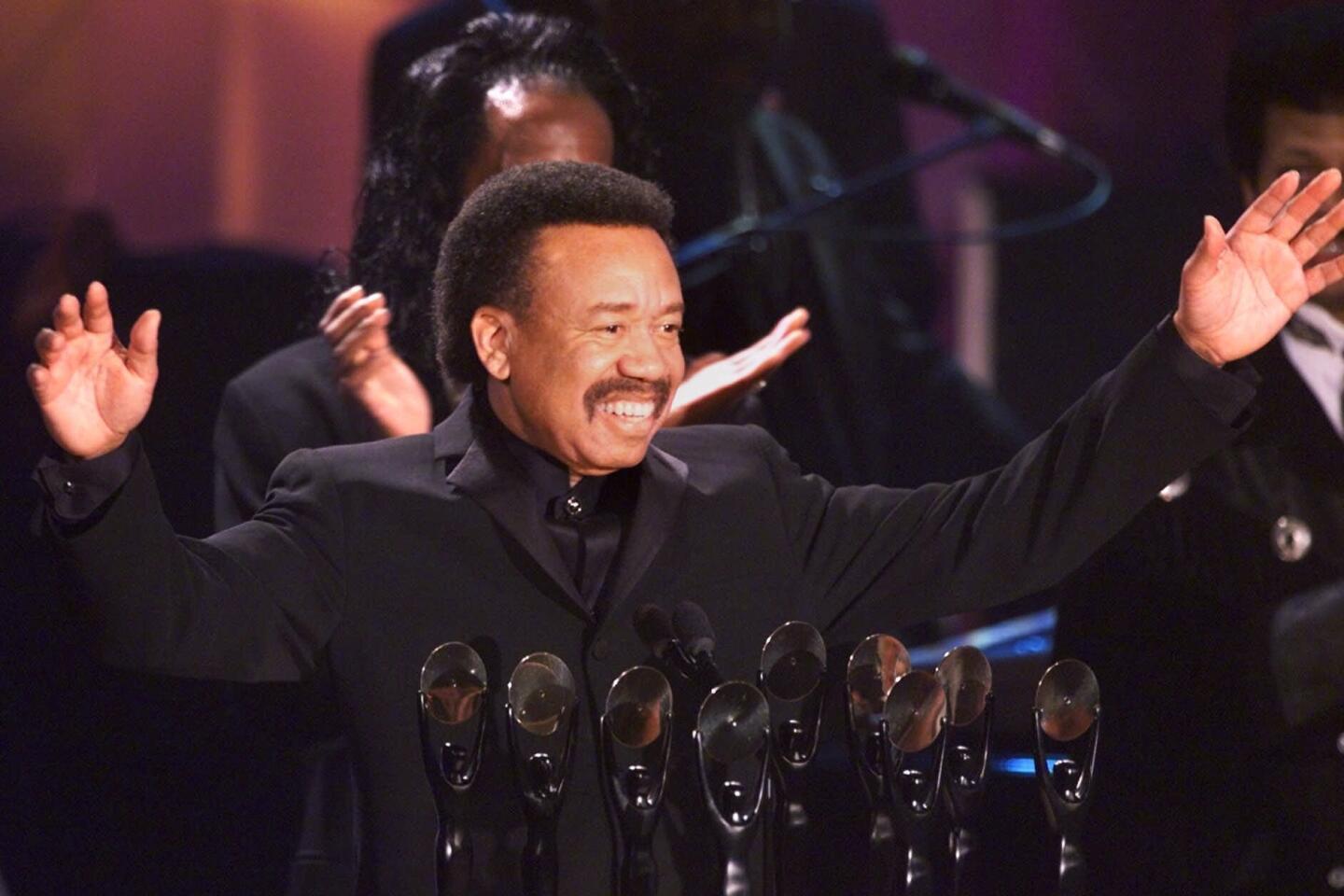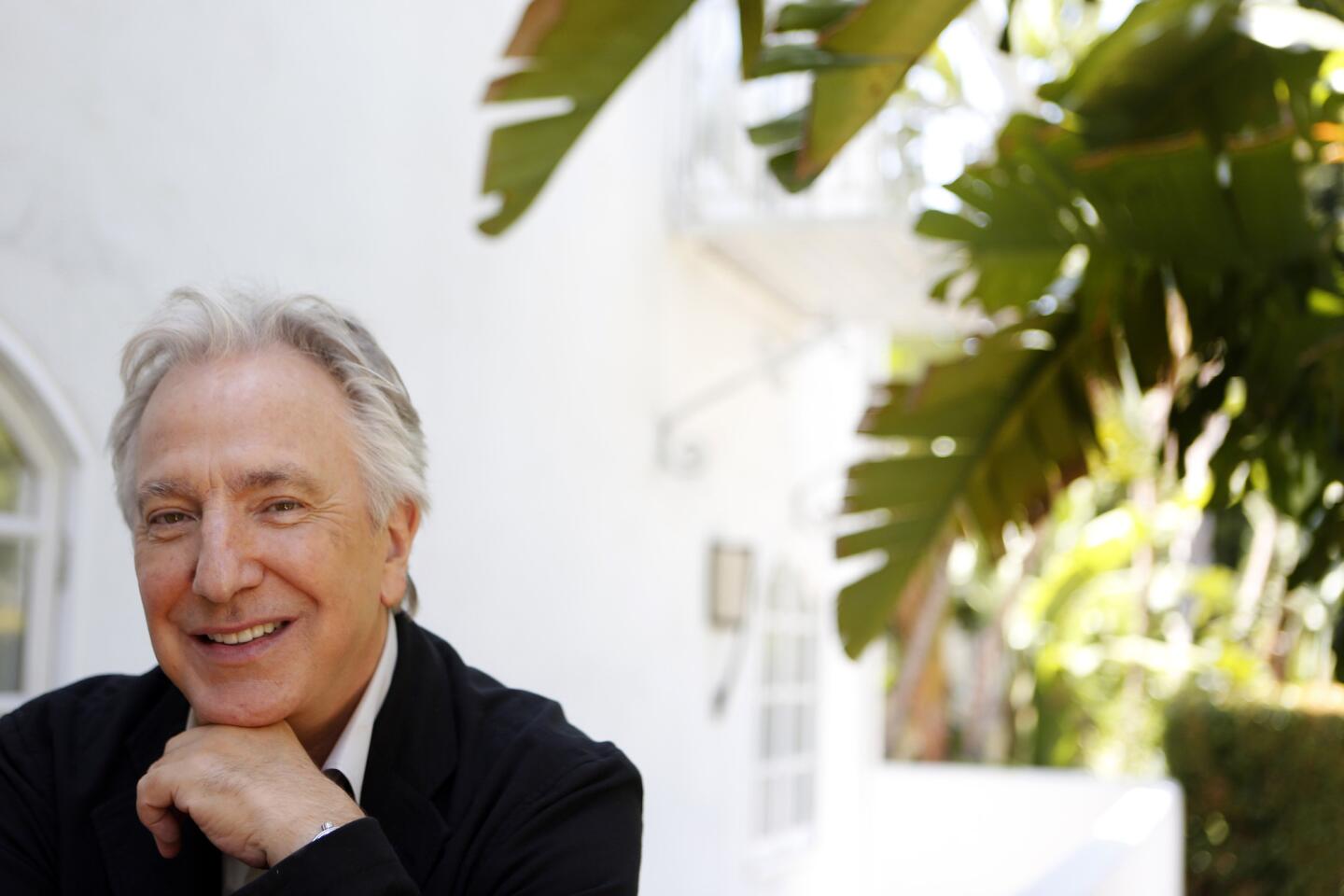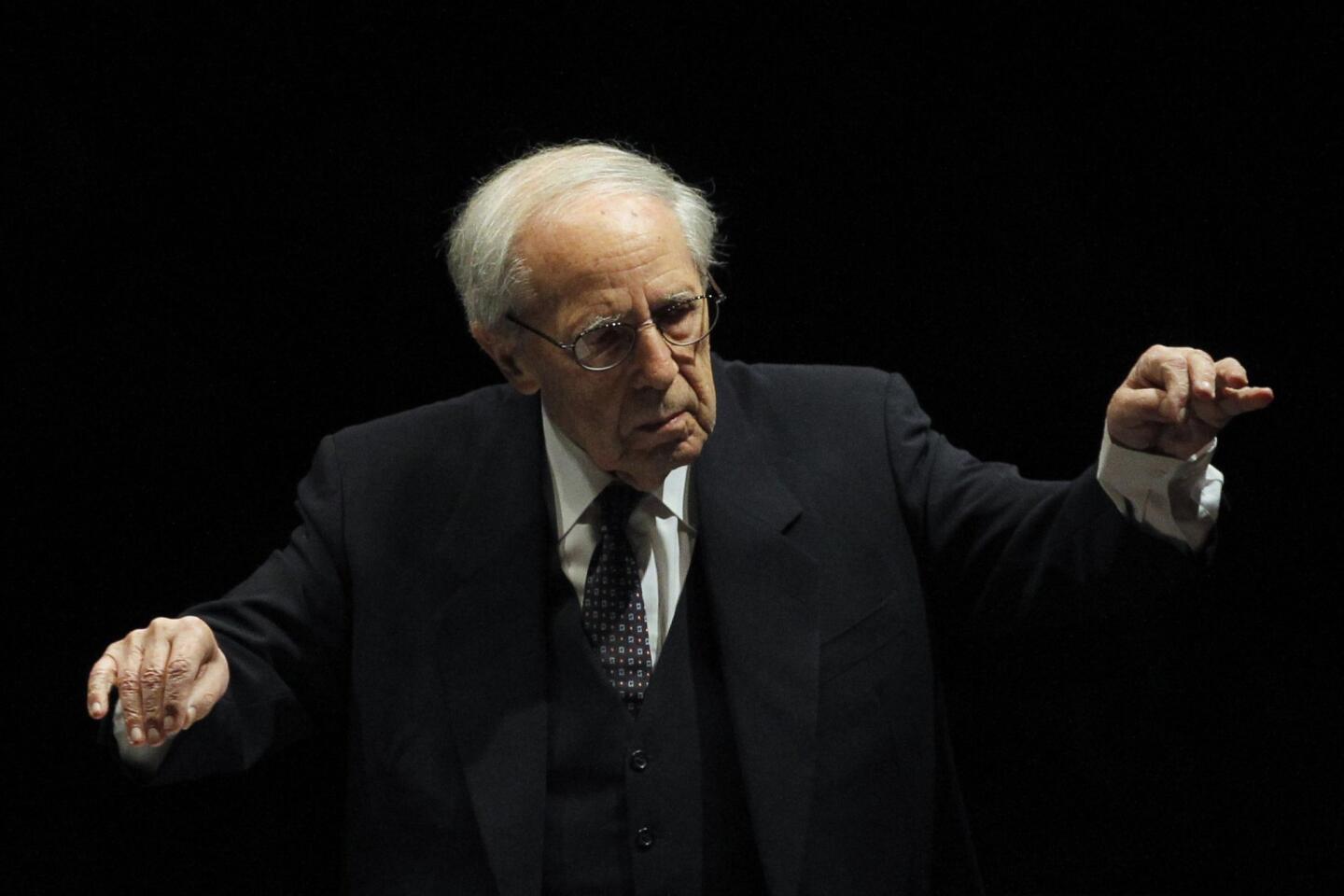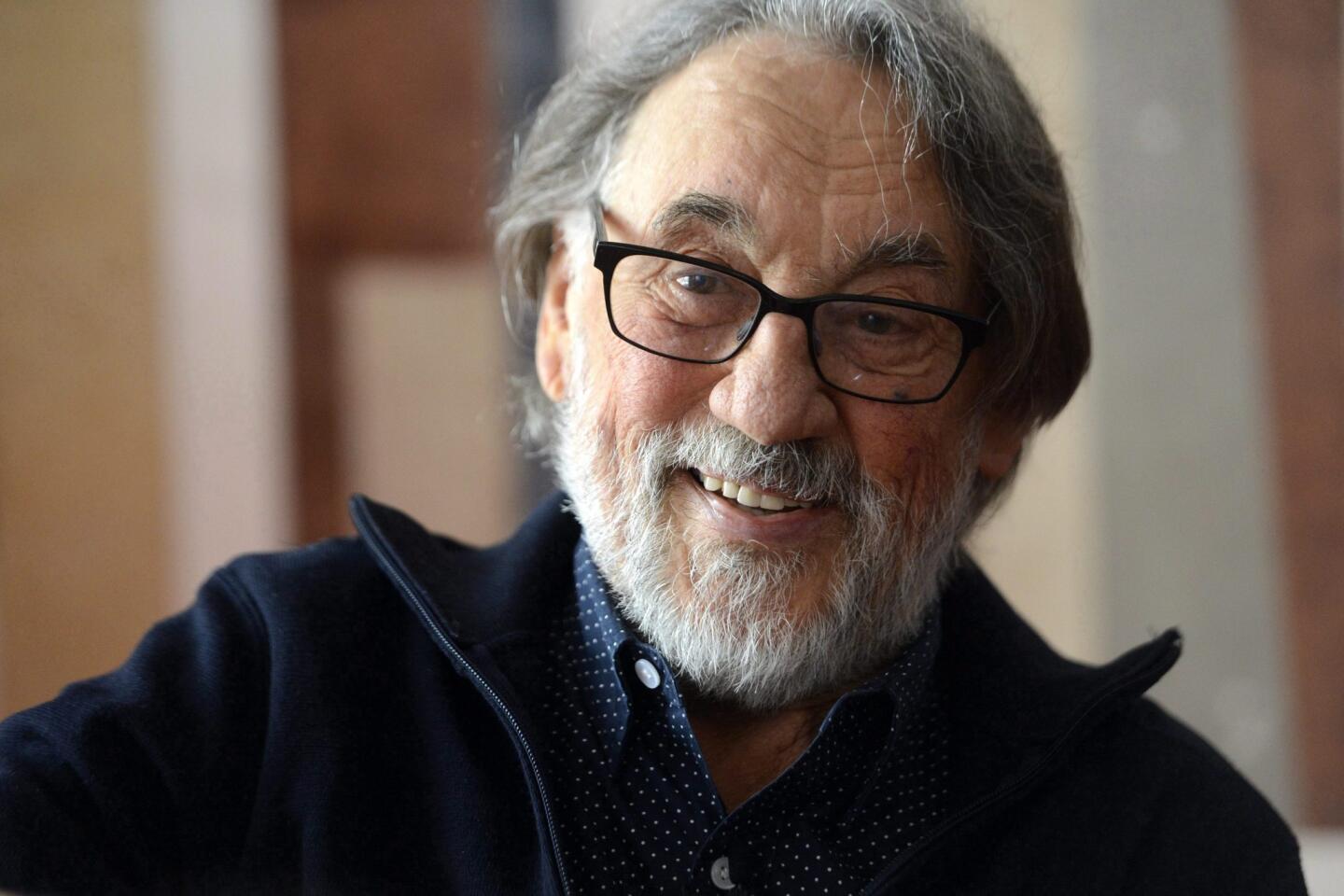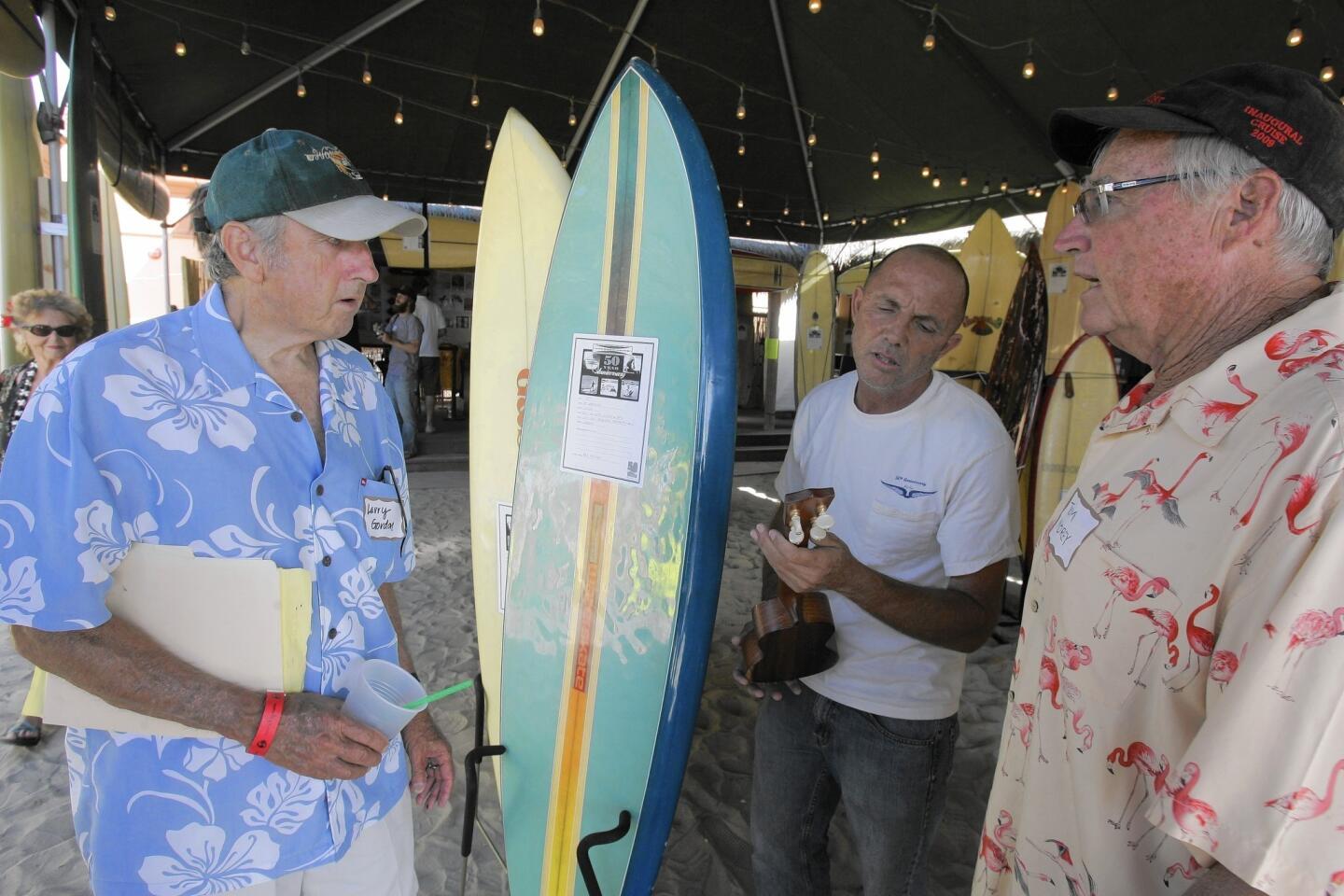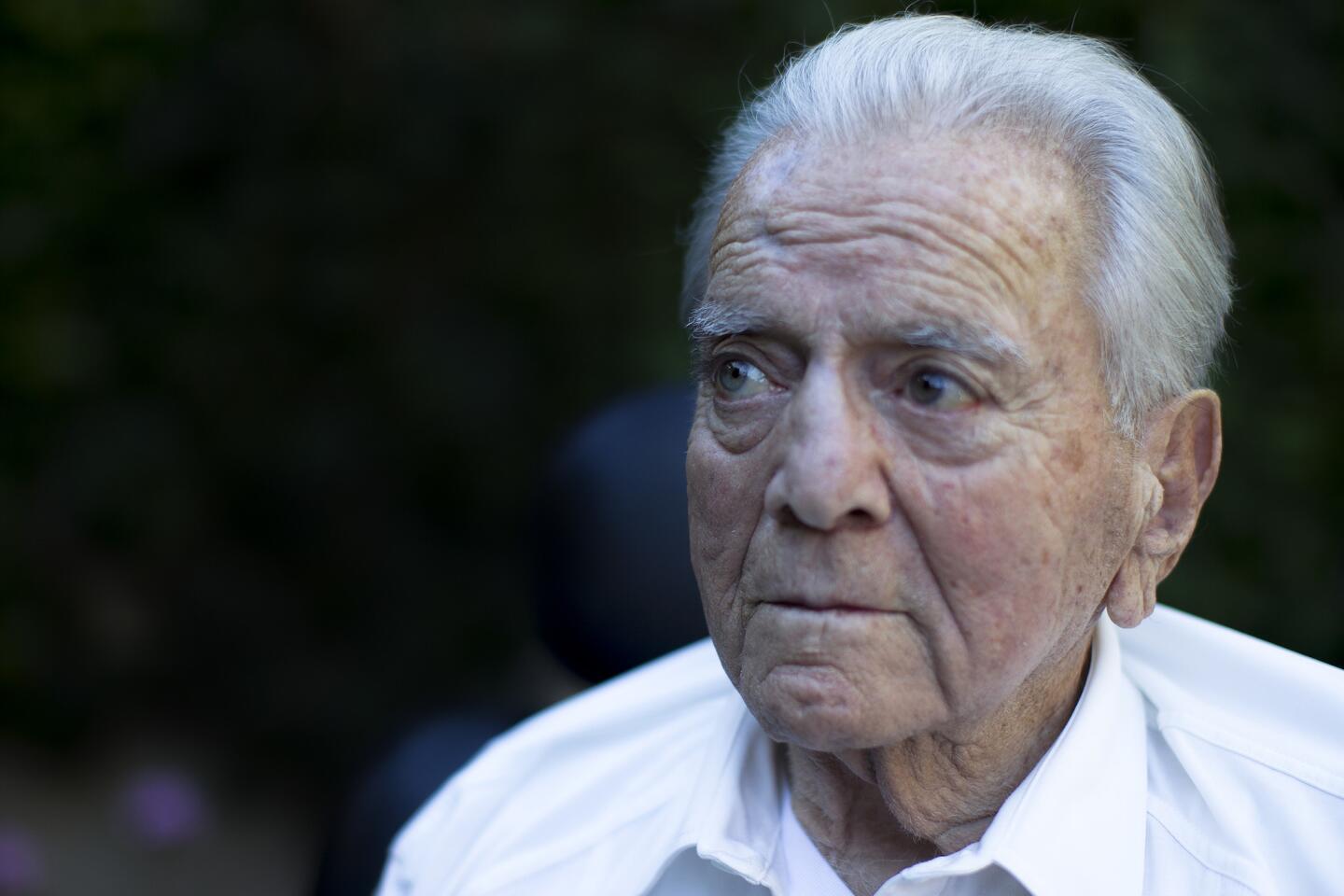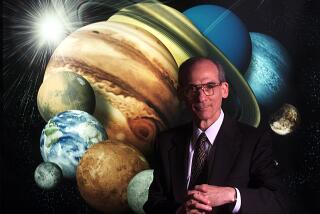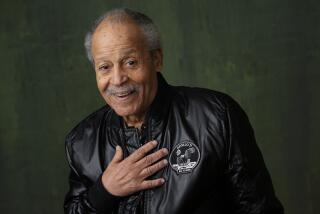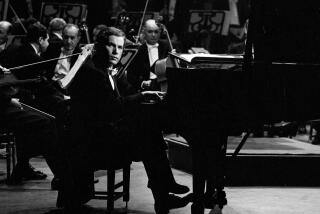When his bell-shaped capsule splashed into the ocean after orbiting Earth again and again, John Glenn emerged an instant hero — the fighter-jock pilot of few words who in just five hours of circling the planet helped cement America’s faith that it could lead the race into outer space.
He walked across the deck of the aircraft carrier where Friendship 7 had been lowered as casually as a guy who’d just returned from running a crosstown errand, exuding a confidence and swagger later mythologized in Tom Wolfe’s “The Right Stuff.”
Decades later, at the age of 77, Glenn would return to space on a nine-day mission aboard the shuttle Discovery after selling himself as a human guinea pig who would demonstrate the effects of space travel on the elderly.
Glenn, who also served for 24 years as a U.S. senator from Ohio, died Thursday at the age of 95, a day after being hospitalized in Columbus, Ohio.
“When John Glenn blasted off from Cape Canaveral atop an Atlas rocket in 1962, he lifted the hopes of a nation. And when his Friendship 7 spacecraft splashed down a few hours later, the first American to orbit the Earth reminded us that with courage and a spirit of discovery there’s no limit to the heights we can reach together,” President Obama said in a statement.
Glenn was the last surviving astronaut of the original Mercury Seven group, preceded in death by Alan B. Shepard Jr., Gus Grissom, Wally Schirra, Gordon Cooper, Deke Slayton and Scott Carpenter.
In his first historic flight, Glenn circled Earth for nearly five hours in a tiny spaceship on Feb. 20, 1962, the first American to orbit the planet. When he returned to space in 1998, his voyage did nearly as much to revive interest in America’s space program as his first pioneering voyage had to ignite the country’s fascination with space exploration.
1/10
John Glenn sits inside the training capsule, January 11, 1961, in preparation for manned space flight.
(Harvey Georges / Associated Press) 2/10
This 1961 NASA photo shows the original seven Mercury astronauts. From left, first row are Walter Schirra Jr., Donald Slayton, John Glenn and Scott Carpenter. In the back row are Alan Shepard Jr., Virgil “Gus” Grissom and Gordon Cooper.
(NASA / Getty Images) 3/10
John Glenn, President Kennedy and Vice President Lyndon Johnson inspect the Friendship 7, the Mercury capsule in which Glenn became the first American to orbit the Earth in 1962.
(Vincent P. Connolly / Associated Press) 4/10
Jan. 18, 1984 photo of Sen. John Glenn, D-Ohio, answers questions from the press in Jackson, Miss.
(Tannen Maury / Associated Press) 5/10
US Senator and astronaut John Glenn and his wife Annie, along with the crew of the recently completed Space Shuttle Discovery mission, parade up Broadway’s “Canyon of Heroes” in 1998.
(TIMOTHY A. CLARY / AFP/Getty Images) 6/10
John Glenn talks with astronauts aboard the International Space Station via satellite before a discussion titled “Learning from the Past to Innovate for the Future” in Columbus, Ohio, on Feb. 20, 2012.
(Jay LaPrete / Associated Press) 7/10
Astronaut and senator John Glenn arriving at the Kennedy Space Center for his scheduled launch aboard the Space Shuttle Discovery.
(AFP/Getty Images) 8/10
May 29, 2012 photo of President Barack Obama awarding the Medal of Freedom to former astronaut John Glenn during a ceremony in the East Room of the White House in Washington.
(Charles Dharapak / Associated Press) 9/10
John Glenn gives a thumbs-up to then-Democratic presidential candidate John Kerry, left, as he prepares to address members of the American Legion during their national conference in Nashville, Tenn., on Sept. 1, 2004.
(John Russell / Associated Press) 10/10
John Glenn gives a thumbs–up sign while riding in a float with his wife Annie during a parade in his hometown of New Concord, Ohio, on Dec. 19, 1998.
(Tony Dejak / Associated Press) Glenn first earned broad public attention in 1962 in the bell-shaped space capsule Friendship 7 — a flight that NASA’s mission control worried might burn up upon reentering Earth’s atmosphere.
A war hero and test pilot who earned fame even before he was named to the Mercury team, Glenn seemed to have the right stuff and more.
Not only did Glenn “have courage and ambition, but he also had supreme confidence in himself and his own abilities,” qualities that distinguished him from most mortals, said Frank Van Riper, who wrote the 1983 biography “Glenn: The Astronaut Who Would Be President.”
“That type of confidence can let him sit atop a rocket and have his blood pressure not change at all.”
After his first space flight, Glenn, then 40, was elevated to celebrity status as much by his personal charm and heroics as he was by the pioneering era that he helped define. Before Glenn made his three loops around Earth in a four-hour, 56-minute flight, only Soviet astronauts, test dummies and dogs had made historic “firsts” in space. Almost a year before Glenn’s flight, cosmonaut Yuri Gagarin had become the first man in space.
Glenn was neither the first nor the second American in space. Those distinctions belonged to Shepard — whose entire voyage lasted 15 minutes — and Grissom, who followed Shepard months later. Yet Glenn’s flight raised the most passion and publicity in America. Glenn stayed aloft for hours, focusing Americans’ rapt attention on his every orbit and ultimately restoring America’s confidence in its technological prowess.
President Kennedy was apparently so relieved that Glenn helped put America back in the space race, and so concerned about the astronaut’s well-being, that he vetoed a return to space by Glenn. Rather, Kennedy marked Glenn as an American with a political future. After a few early political defeats, the astronaut was elected to the U.S. Senate from Ohio in 1974.
Although Glenn remained a supporter of NASA, he tried to steer clear of being seen as the Senate “astronaut,” preferring to make his mark in other areas. He was perhaps best-known as the author of bills to restrict the proliferation of nuclear weapons around the world. He also helped pass legislation to clean up radioactive waste at the nation’s nuclear weapons sites.
Yet his drive to return to space never fully abated, and he relentlessly lobbied the National Aeronautics and Space Administration for another space flight. Glenn insisted that he was not driven to return to space for the thrill of the ride or as a passenger with a congressional free pass, but as a scientist-explorer.
What you’re up there for is to accomplish something for the country that may break us into some new areas of research that may benefit an awful lot of people.
— John Glenn
“What you’re up there for,” he said, “is to accomplish something for the country that may break us into some new areas of research that may benefit an awful lot of people.”
After his late-in-life flight, dozens of tests done on his body showed that he handled the rigors of space as well as astronauts roughly half his age, NASA scientists said when results were released in 2000.
In 2012, Glenn and Carpenter received a hero’s welcome when they returned to the Cape Canaveral launchpad to mark the 50th anniversary of Glenn’s orbital flight.
The national attention after the 1962 flight was “almost unbelievable,” Glenn said at the event, and he added that he and his colleagues learned to live with the acclaim “or tried to, anyway.”
John Herschel Glenn Jr. was born July 18, 1921, in Cambridge, Ohio. His mother, Clara, a teacher, and father, John, soon moved to the tiny town of New Concord, where his father opened a plumbing business. At 3, he met Anna “Annie” Castor, the 4-year-old daughter of the town dentist. The pair started dating in high school and married in 1944.
In high school, Glenn was an honors student who excelled in sports and student politics — and played the lead in the senior class play.
A religious young man, Glenn enrolled in Muskingum College, a small Presbyterian school in New Concord, where he sang in the church choir and played football. While there, Glenn learned to fly in a civilian program run by the Navy.
When it came time to enlist, he joined the Marines, leaving college behind after Japan attacked Pearl Harbor.
During World War II, he rose to the rank of captain and decided to make a career in the military. By the end of the war, he had flown 59 missions with F4U fighters and had been awarded two Distinguished Flying Crosses and 10 Air Medals.
The Korean War meant 90 more missions for the Marine aviator, and many more medals, including a third and fourth Distinguished Flying Cross.
“Glenn grew up with the archetypal Protestant work ethic and the idea that good things happen to people who work hard,” Van Riper said. “Add to this [his] sense of confidence and the idea in the military that you succeed if you work hard, and it explains why he pursued tougher and tougher assignments.”
As a test pilot, Glenn pushed his bosses to let him attempt a transcontinental flight in an F8U-1 Crusader fighter aircraft. On July 16, 1957, he set a speed record of 3 hours, 23 minutes and 8.4 seconds flying from Los Angeles to New York, picking up a fifth Distinguished Flying Cross and a taste for fame.
Two years later, Glenn volunteered for an elite corps of pilots who would become the country’s first astronauts, riding rockets into space. NASA pared an original list of about 500 test pilots down to 110 and then to the Mercury Seven.
Training was rigorous and tedious. In addition to studying astrophysics and biology, the new astronauts were exposed to high heat, strong gravitational forces and the sense of weightlessness. Glenn became a pacesetter in training and moral leadership. He would run extra miles in a morning workout and lecture the others against carousing.
When Glenn took his pioneering turn in space, astronaut Carpenter spoke for all Americans when he radioed from launch control just before liftoff, “Godspeed, John Glenn.” Carpenter later said he had tried to keep the mood light by telling Glenn: “Remember, John, this was built by the low bidder.”
NASA cut the flight short — Glenn was supposed to orbit Earth seven times — when mechanical failure created concern that Friendship 7’s heat shield might fall off during reentry and cause the capsule to burn up.
Although he remained calm, Glenn later told Life magazine that he had been prepared to die. The heat shield held. After Glenn’s safe return, he became a national hero. Bathed in the spotlight, Glenn was typically low-key.
“It’s been a long day,” he said after being fished out of the Atlantic Ocean by helicopter, “but it has been very interesting.”
Back on Earth, Glenn was greeted by Kennedy. Four million New Yorkers showered him and his family with ticker tape, and the New York Times called him “America’s first flesh-and-blood Buck Rogers.”
Reflecting on that moment decades later while sitting in his third-floor office at the John Glenn School of Public Affairs at Ohio State University, Glenn was at a loss to explain the adulation: “It’s true we got more attention. It wasn’t something we planned. Truth is, I just don’t know why it happened.”
Glenn retired from the military in 1965 and entered private business, serving first as vice president of corporate planning and then as president of the Royal Crown Cola Co. He also made a fortune with business investments that included building Holiday Inns in Florida.
Within a few years, he decided to try politics. After losing to Howard Metzenbaum in the 1970 Democratic primary race in Ohio for a U.S. Senate seat, Glenn ran against him again in 1974.
During the campaign, Metzenbaum contrasted his business background with Glenn’s military and astronaut credentials, saying his opponent had “never worked for a living.”
Glenn’s reply came to be known as the “Gold Star Mothers” speech. He challenged Metzenbaum to tell wounded veterans “they didn’t hold a job” and tell any Gold Star mother — a woman whose child who died while serving in the military — that “her son did not hold a job.”
Glenn won the nomination and the general election.
Jimmy Carter considered making Glenn his running mate in the 1976 presidential race, but after Glenn gave an uninspired address to the Democratic National Convention, Carter chose Walter Mondale. Nearly a decade later, Glenn ran for president and racked up $3 million in debt but didn’t make it out of the primaries.
“He was never really a coalition builder,” Van Riper said.
And if he was considered a bit of a square by the other Mercury astronauts, that image intensified in the Senate, where he served until 1999. But in Glenn’s post-Watergate class of 1974, he was always a respected colleague, considered a sincerely decent man.
His Norman Rockwell character and reputation for unparalleled principle were severely tested in 1989 during the so-called Keating Five scandal. He was one of five senators investigated by the Senate Ethics Committee for using clout to keep federal regulators out of the way of savings-and-loan mogul Charles Keating Jr. The committee said Glenn used “poor judgment” in accepting a $200,000 donation from Keating but cleared the senator of wrongdoing.
Through all the years after his famous space flight, Glenn continued flying. Almost every weekend he would escape Washington for Ohio in his Beechcraft Baron, with his wife as his co-pilot. When he sold his plane in early 2012, Glenn noted that he still held a valid pilot’s license.
In 1995, he had started campaigning to return to space. As a member of the Senate Select Committee on Aging, he had learned that the aging process on Earth, in many ways, is similar to the effects of weightlessness, and he decided he wanted to know why.
Glenn approached NASA chief Dan Goldin and pressed to serve as a crew member on a Discovery flight as a test subject for geriatric experiments. Goldin gave the go-ahead after aging experts insisted that Glenn’s mission might produce good science and NASA’s own doctors found Glenn in good health.
1/61
Wong’s masterly touch brought a poetic quality to Disney’s “Bambi” that has helped it endure as a classic of animation. The pioneering Chinese American artist influenced later generations of animators. Full obituary
(Peter Brenner / Handout) 2/61
After bursting onto the scene opposite Gene Kelly in the classic 1952 musical “Singin’ in the Rain,” Reynolds became America’s Sweetheart and a potent box office star for years. Her passing came only one day after her daughter, Carrie Fisher, died at the age of 60. Reynolds was 84. Full obituary
(John Rooney / Associated Press) 3/61
George Michael, the English singer-songwriter who shot to stardom in the 1980s as half of the pop duo Wham!, went on to become one of the era’s biggest pop solo artists with hits such as “Faith” and “I Want Your Sex.” He was 53. Full obituary
(Francois Mori / Associated Press) 4/61
The thoracic surgeon came up with an anti-choking technique in 1974. So simple it could be performed by children, the eponymous maneuver made Heimlich a household name. He was 96. Full obituary
(Al Behrman / Associated Press) 5/61
The hugely popular south Indian actress later turned to politics and became the highest elected official in the state of Tamil Nadu. She was 68. Full obituary
(AFP / Getty Images) 6/61
Best known for her portrayal of Carol Brady on “The Brady Bunch,” Henderson
portrayed an idealized mother figure for an entire generation. Her character was the center of the show, cheerfully mothering her brood in an era when divorce was becoming more common. She was 82. Full obituary
(Jay L. Clendenin / Los Angeles Times) 7/61
Dubbed “Dr. Wonderful” by the media, the Texas surgeon performed the first successful heart transplant in the United States and the world’s first implantation of a wholly artificial heart. He also founded the Texas Heart Institute in Houston. He was 96. Full obituary
(David J. Phillip / Associated Press) 8/61
The prominent Los Angeles attorney went from defending his father, a powerful mob boss, to representing celebrities, corrupt businessmen, drug kingpins and the so-called Hollywood Madam, Heidi Fleiss. He was 70. Full obituary
(Ken Hively / Los Angeles Times) 9/61
The award-winning journalist wrote for the Washington Post and the New York Times before becoming an anchor of public television news programs “PBS NewsHour” and “Washington Week.” Her career also included moderating the vice presidential debates in 2004 and 2008. She was 61. Full obituary
(Brendan Smialowski / Getty Images) 10/61
Instantly recognizable for his long white mane and a rich, hearty voice, Russell sang, wrote and produced some of rock ‘n’ roll’s top records. His hits included “Delta Lady,” “Roll Away the Stone,” “A Song for You” and “Superstar.” He was 74. Full obituary
(Luis Sinco / Los Angeles Times) 11/61
The singer-songwriter’s literary sensibility and elegant dissections of desire made him one of popular music’s most influential and admired figures for four decades. Cohen is best known for his songs such as “Hallelujah,” “Suzanne” and “Bird on the Wire.” He was 82. Full obituary
(Joel Saget / AFP / Getty Images) 12/61
Reno was the first woman to serve as United States attorney general. Her unusually long tenure began with a disastrous assault on cultists in Texas and ended after the dramatic raid that returned Elian Gonzalez to his Cuban father. She was 78. Full obituary
(Dennis Cook / Associated Press) 13/61
The 1960s radical was in the vanguard of the movement to stop the Vietnam War and became one of the nation’s best-known champions of liberal causes. He was 76. Full obituary
(George Brich / Associated Press) 14/61
Tabei was the first woman to climb Mount Everest in 1975. In 1992, she also became the first woman to complete the “Seven Summits,” reaching the highest peaks of the seven continents. She was 77. Full obituary
(AFP / Getty Images) 15/61
Nixon was the creative force behind the popular soap operas “One Life to Live” and “All My Children.” She was a pioneer in bringing serious social issues, like racism, AIDS and prostitution, to daytime television. She was 93. Full obituary
(Chris Pizzello / Associated Press) 16/61
The former Israeli president was one of the founding fathers of Israel. The Nobel peace prize laureate was an early advocate of the idea that Israel’s survival depended on territorial compromise with the Palestinians. He was 93. Full obituary
(AFP / Getty Images) 17/61
A seven-time professional major tournament champion, Palmer revolutionized sports marketing as it is known today, and his success contributed to increased incomes for athletes across the sporting spectrum. He was 87. Full obituary
(David J. Phillip / Associated Press) 18/61
Known as the Vatican’s exorcist, Amorth, a Roman Catholic priest, helped promote the ritual of banishing the devil from people or places. He was 91. Full obituary
(AFP / Getty Images) 19/61
The American playwright was known for works such as “The Zoo Story,” “The Sandbox,” “Who’s Afraid of Virginia Woolf?” and “A Delicate Balance.” He was awarded the Pulitzer Prize for drama three times. He was 88. Full obituary
(Jennifer S. Altman / For the Times) 20/61
The ska pioneer and Jamaican music legend recorded thousands of records, including such hits as “Al Capone” and “Judge Dread.” He helped ignite the ska movement in England, and later helped carry it into the rock-steady era in the mid-1960s. He was 78. Full obituary
(Larry Ellis / Getty Images) 21/61
Known as “the first lady of anti-feminism,” Schlafly was a political activist who galvanized grass-roots conservatives to help defeat the Equal Rights Amendment and, in ensuing decades, effectively push the Republican Party to the right. She was 92. Full obituary
(Christine Cotter / Los Angeles Times) 22/61
O’Brian helped tame the Wild West as the star of TV’s “The Life and Legend of Wyatt Earp” and was the founder of a long-running youth leadership development organization. “Wyatt Earp” became a top 10-rated series and made O’Brian a household name. He was 91. Full obituary
(Ricardo DeAratanha / Los Angeles Times) 23/61
Jerry Heller, the early manager of N.W.A, was an important and colorful personality in the emerging West Coast rap scene in the 1980s. Heller was 75. Full obituary
(Lori Shepler / Los Angeles Times) 24/61
Two-time Oscar nominee Gene Wilder brought a unique blend of manic energy and world-weary melancholy to films as varied as 1971’s children’s movie “Willy Wonka & the Chocolate Factory” and the 1980 comedy “Stir Crazy.” He was 83. Full obituary
(AFP / Getty Images) 25/61
The beloved top-selling Mexican singer wooed crowds on both sides of the border with ballads of love and heartbreak for more than four decades. He was 66. Full obituary
(Wilfredo Lee / Associated Press) 26/61
Known as the “queen of knitwear,” Sonia Rykiel became a fixture of Paris’ fashion scene, starting in 1968. French President Francois Hollande praised her as “a pioneer” who “offered women freedom of movement.” She was 86. Full obituary
(Thibault Camus / Associated Press) 27/61
The conservative political commentator hosted the long-running weekly public television show “The McLaughlin Group” that helped alter the shape of political discourse since its debut in 1982. He was 89. Full obituary
(Kevin Wolf / Associated Press) 28/61
Best-known for his post-bop recordings for Blue Note Records in the 1960s and 1970s, the inventive jazz vibraphonist played with a litany of jazz greats as both bandleader and sideman during a career spanning more than 50 years. He was 75. Full obituary
(Scott Chernis / Associated Press) 29/61
The British actor, who was 3-foot-8, gave life to the “Star Wars” droid R2-D2, one of the most beloved characters in the space-opera franchise and among the most iconic robots in pop culture history. He was 81. Full obituary
(Reed Saxon / Associated Press) 30/61
For many in L.A., Folsom was the face of the Parent Teacher Student Assn., better known as the PTSA or PTA. He served as the official and unofficial watchdog over the Los Angeles Unified School District and wrote about his experiences in his blog. He was 69. Full obituary
(Mark Boster / Los Angeles Times) 31/61
Fountain combined the Swing Era sensibility of jazz clarinetist Benny Goodman with the down-home, freewheeling style characteristic of traditional New Orleans jazz to become a national star in the 1950s as a featured soloist on the “The Lawrence Welk Show.” He was 86. Full obituary
(Luis Sinco / Los Angeles Times) 32/61
Lowery was a pioneer in efforts to help people suffering from poverty, addiction and mental illness move out of tents and cardboard boxes on Los Angeles’ sidewalks and into supportive housing. She was 70. Full obituary
(Lawrence K. Ho / Los Angeles Times) 33/61
Nixon, a Hollywood voice double, can be heard in place of the leading actresses in such classic movie musicals as “West Side Story,” “The King and I” and “My Fair Lady.” She was 86. Full obituary
(Rob Kim / AFP/Getty Images) 34/61
The department store heir’s widow was a socialite and philanthropist who hobnobbed with the world’s elite, epitomized high fashion and was best friends with former first lady Nancy Reagan. She was 93. Full obituary
(Evan Agostini / Associated Press) 35/61
The author and teacher was long established as a leading literary figure of Southern California. Her works include “Golden Days,” “There Will Never Be Another You” and her memoir “Dreaming, Hard Luck and Good Times in America.” She was 82. Full obituary
(Ricardo DeAratanha / Los Angeles Times) 36/61
The Nazi concentration camp survivor won the Nobel in 1986 for his message “of peace, atonement and human dignity.” “Night,” his account of his year in death camps, is regarded as one of the most powerful achievements in Holocaust literature. He was 87. Full obituary
(Allen J. Schaben / Los Angeles Times) 37/61
One of the greatest basketball coaches of any gender or generation, Summitt spent 38 years as coach of the University of Tennessee women’s basketball team before dementia forced her early retirement. She was 64. Full obituary
(Wade Payne / Associated Press) 38/61
The iconic New York Times fashion photographer darted around New York on a humble bicycle to cover the style of high society grand dames and downtown punks with equal verve. He was 87. Full obituary
(Mark Lennihan / Associated Press) 39/61
Aguirre was best known for his portrayal of the towering “Profesor Jirafales,” the likable and often disrespected giraffe teacher on the 1970s-era hit show “El Chavo del Ocho.” The screwball comedy helped usher in an era of edgier comedy in Mexico and elsewhere. Aguirre was 82. Full obituary
(AFP / Getty Images) 40/61
The three-time heavyweight boxing champion’s brilliance in the ring and bravado outside it made his face one of the most recognizable in the world. He was 74. Full obituary
(John Rooney / Associated Press) 41/61
Like Walter Cronkite and Edward R. Murrow, the CBS newsman became part of a group of journalists who set the tone for storytelling on television. He was on “60 Minutes” for 46 years, holding the longest tenure on prime-time television of anyone in history. He was 84. Full obituary
(Carolyn Cole / Los Angeles Times) 42/61
The first African American chief of the Los Angeles Police Department, Williams steadied the agency in the tumultuous wake of the 1992 riots but was distrusted as an outsider by many officers and politicians. He was 72. Full obituary
(Nick Ut / Associated Press) 43/61
Best known for her role as Marie Barone on “Everybody Loves Raymond,” Roberts won four Emmys for her work on that show and one for her work on “St. Elsewhere.” She was 90. Full obituary
(Ken Hively / Los Angeles Times) 44/61
The country music legend sang of his law-breaking Bakersfield youth and penned a stream of No. 1 hits. He owed some of his fame to conservative anthems, including the combative 1969 release “Okie from Muskogee,” which seemed to mock San Francisco’s anti-war hippies. He was 79. Full obituary
(Genaro Molina / Los Angeles Times) 45/61
The acclaimed Native American historian was the last surviving war chief of Montana’s Crow Tribe. President Obama awarded him the Presidential Medal of Freedom in 2009. He was 102. Full obituary
(J. Scott Applewhite / Associated Press) 46/61
Germany’s longest-serving foreign minister brokered an end to the painful 40-year division of his homeland in 1990, but only after persevering for decades through the most tragic and destructive phases of Germany’s 20th century history. He was 89. Full obituary
(Martin Meissner / Associated Press) 47/61
The Iraqi-born British architect was the first woman to win the Pritzker Prize, architecture’s highest honor. She made her mark with buildings such as the London Aquatics Centre, the MAXXI museum for contemporary art in Rome and the innovative Bridge Pavilion in Zaragoza, Spain. She was 65. Full obituary
(Kevork Djansezian / Associated Press) 48/61
The former television talk show host became the first openly gay man to serve on the Los Angeles City Council. He advocated for the homeless, gays and lesbians and other liberal causes. He was 70. Full obituary
(Christina House / For The Times) 49/61
Garry Shandling’s comedic career spanned decades, but he is best known for his role as Larry Sanders, the host of a fictional talk show. His sitcom pushed the boundaries of TV, influencing shows such as “The Office” and “Modern Family.” He was 66. Full obituary.
(Robert Gauthier / Los Angeles Times) 50/61
Ken Howard was president of SAG-AFTRA and an actor known for his role on TV’s ‘The White Shadow.’ He championed the merger of Hollywood’s two largest actors unions, which had a history of sparring. He was 71. Full obituary
(Al Seib / Los Angeles Times) 51/61
The longtime Los Angeles radio disc jockey, whose real name was Art Ferguson, hosted the morning radio show for popular and influential station KHJ-AM in the late 1960s and went on to be a key player in the launch of latter-day powerhouses KROQ-AM and KIIS-FM. He was 71. Full obituary
(Lawrence K. Ho / Los Angeles Times) 52/61
The veteran actor built his early career playing heavies and won an Academy Award in 1968 for his supporting role as the tough Southern prison-camp convict who grew to hero-worship Paul Newman’s defiant title character in “Cool Hand Luke.” He was 91. Full obituary
(Warner Bros. / Getty Images) 53/61
A prolific entrepreneur, Mann over the course of seven decades founded 17 companies in fields ranging from aerospace to pharmaceuticals to medical devices. He was 90. Full obituary
(Kirk McKoy / Los Angeles Times) 54/61
The Egyptian diplomat helped negotiate his country’s landmark peace deal with Israel but then clashed with the United States when he served a single term as U.N. secretary-general. He was 93. Full obituary
(Marty Lederhandler / Associated Press) 55/61
Pro-BMX biker Dave Mirra was one of the most decorated athletes in X Games history. He held the record for the most medals in history with 24. He was 41. Full obituary
(Ed Reinke / Associated Press) 56/61
Maurice White, co-founder and leader of the groundbreaking ensemble Earth, Wind & Fire, was the source for a wealth of euphoric hits in the 1970s and early ‘80s, including ‘Shining Star,’ ‘September,’ and ‘Boogie Wonderland.’ He was 74. Full obituary
(Kathy Willens / Associated Press) 57/61
In a career that encompassed everything from big-budget Hollywood movies to classical theater, Rickman made bad behavior fascinating to watch from “Die Hard” to the “Harry Potter” movies. He was 69. Full obituary
(Francine Orr / Los Angeles Times) 58/61
The composer and former principal conductor of the New York Philharmonic was known for pushing music lovers and the music establishment to let go of the past and embrace new sounds, structures and textures. He was 90. Full obituary
(Christophe Ena / Associated Press) 59/61
The Academy Award winner was revered as one of the most influential cinematographers in film history for his work on classics including “Close Encounters of the Third Kind” and “The Deer Hunter.” He was 85. Full obituary
(Tamas Kovacs / EPA) 60/61
Gordon helped revolutionize surfing with the creation of the foam surfboard. His polyurethane boards were lighter and easier to ride, making surfing accessible -- which helped popularize the sport globally. He was in his 70s. Full obituary
(Charlie Neuman / San Diego Union-Tribune/ZUMA Press) 61/61
The attorney and almond farmer was known for his battle to stop the $68-billion California bullet train project from slicing up his almond orchards -- part of a deeply emotional land war that has drawn in hundreds of farming families from Merced to Bakersfield. He was 92. Full obituary
(Gina Ferazzi / Los Angeles Times) Glenn had kept fit throughout the decades, running in his youth and power-walking in his later years around his Bethesda, Md., neighborhood. He lifted weights, ate well, took vitamins and kept trim.
The day after returning to Earth on the space shuttle, Glenn admitted he had felt “a little woozy” upon landing but relayed a message aimed at other senior citizens. “Old folks have ambitions and dreams too, like everyone else. ... Why don’t they go for them? Don’t sit on a couch someplace,” he said.
But age did catch up. Glenn sold off his airplanes and stopped flying in 2013. Last year, he gave up driving too.
His return to space was, in a way, Glenn’s attempt at writing his own epitaph.
“Going back up there was a nice capstone to a career that was always centered on that 1962 flight,” Van Riper said. “He’s going to be remembered as the last American hero.”
Glenn, who was awarded the Presidential Medal of Freedom in 2012, is survived by his wife, Annie; two children, David and Carolyn Ann; and two grandchildren.
Geraldine Baum and Valerie J. Nelson are former Los Angeles Times staff writers.
MORE OBITUARIES
Emerson, Lake and Palmer co-founder Greg Lake dies at 69
Former Cal State Chancellor Charles B. Reed dies at 75
Van Williams, TV’s ‘Green Hornet’ and later an L.A. cop, dies at 82

